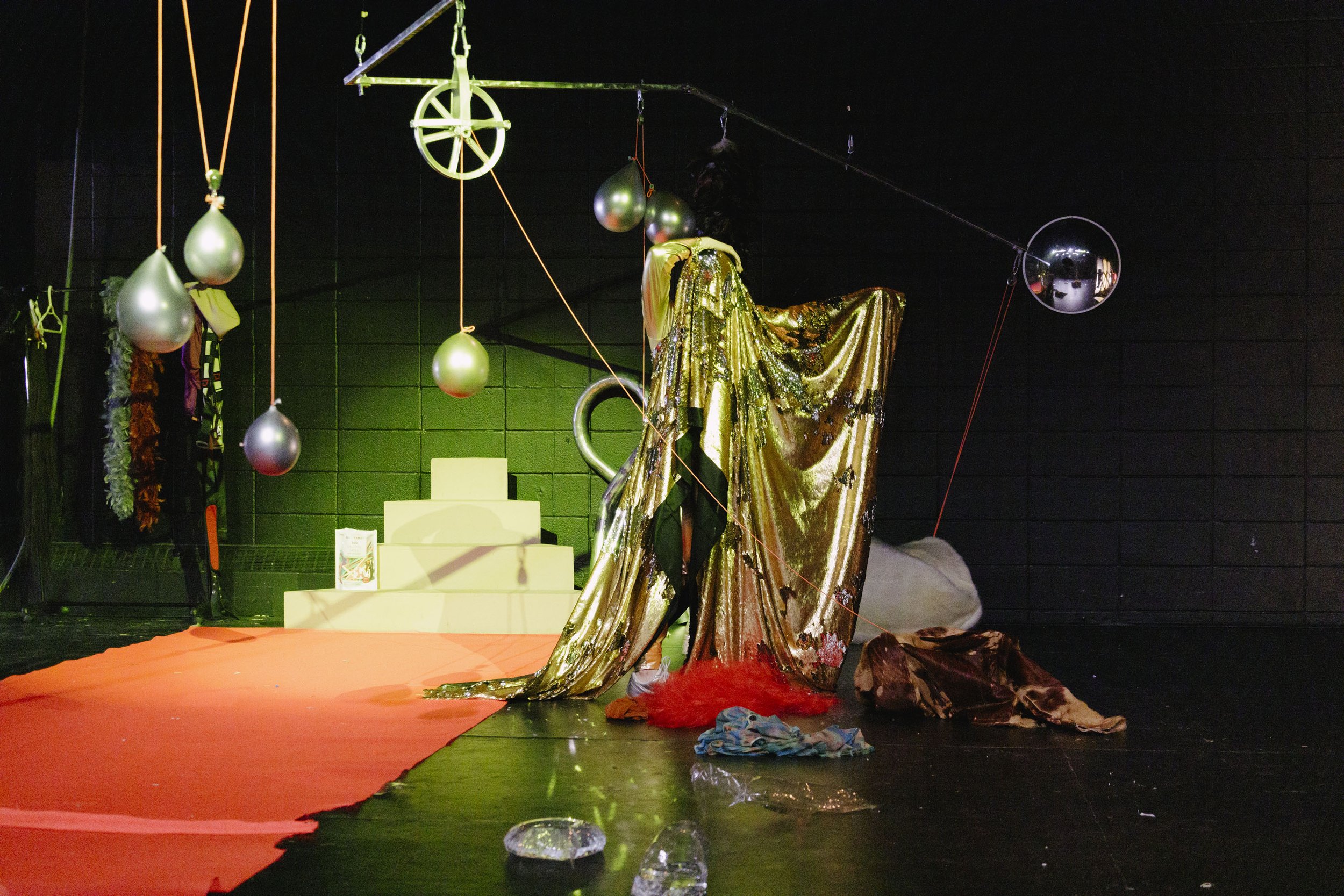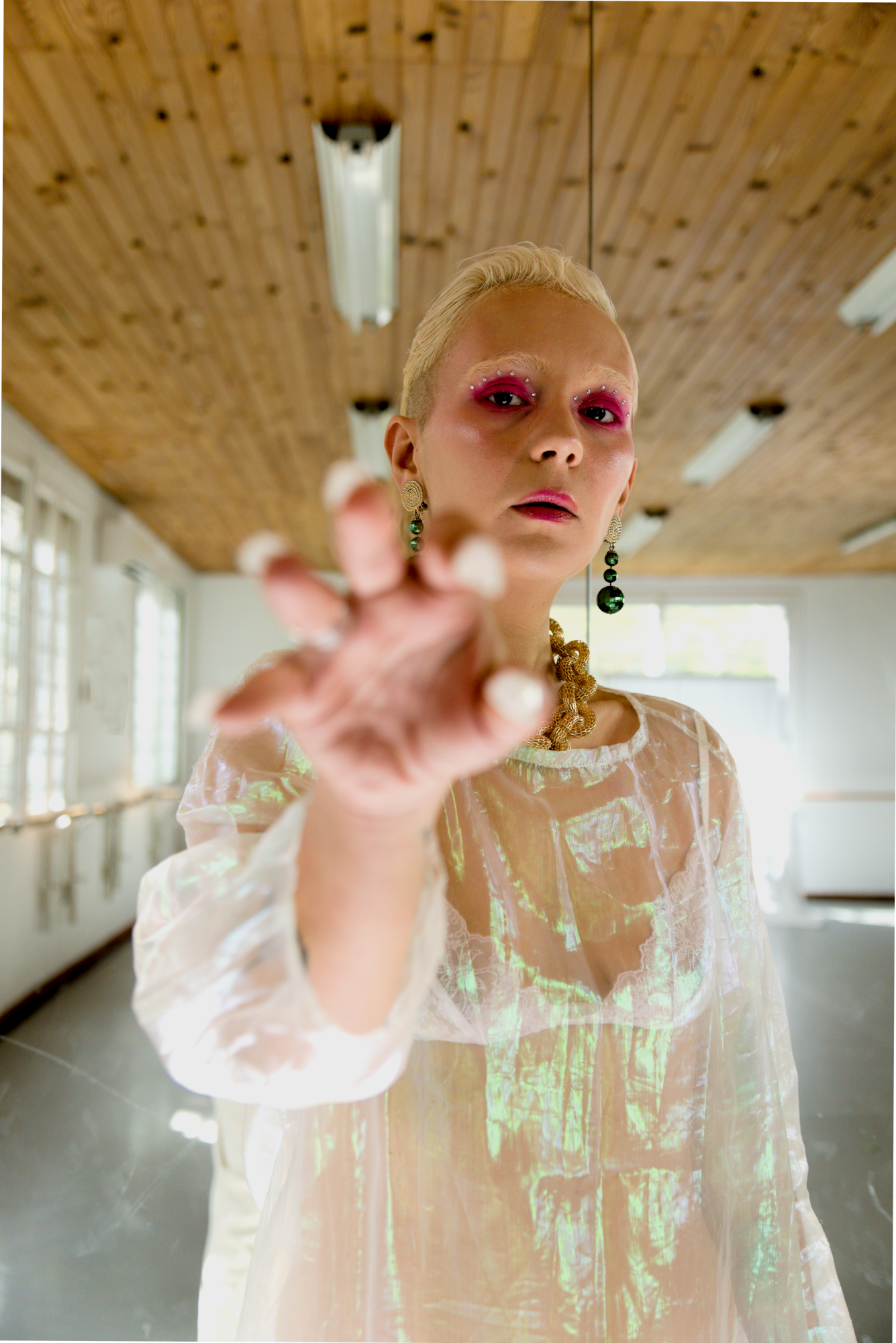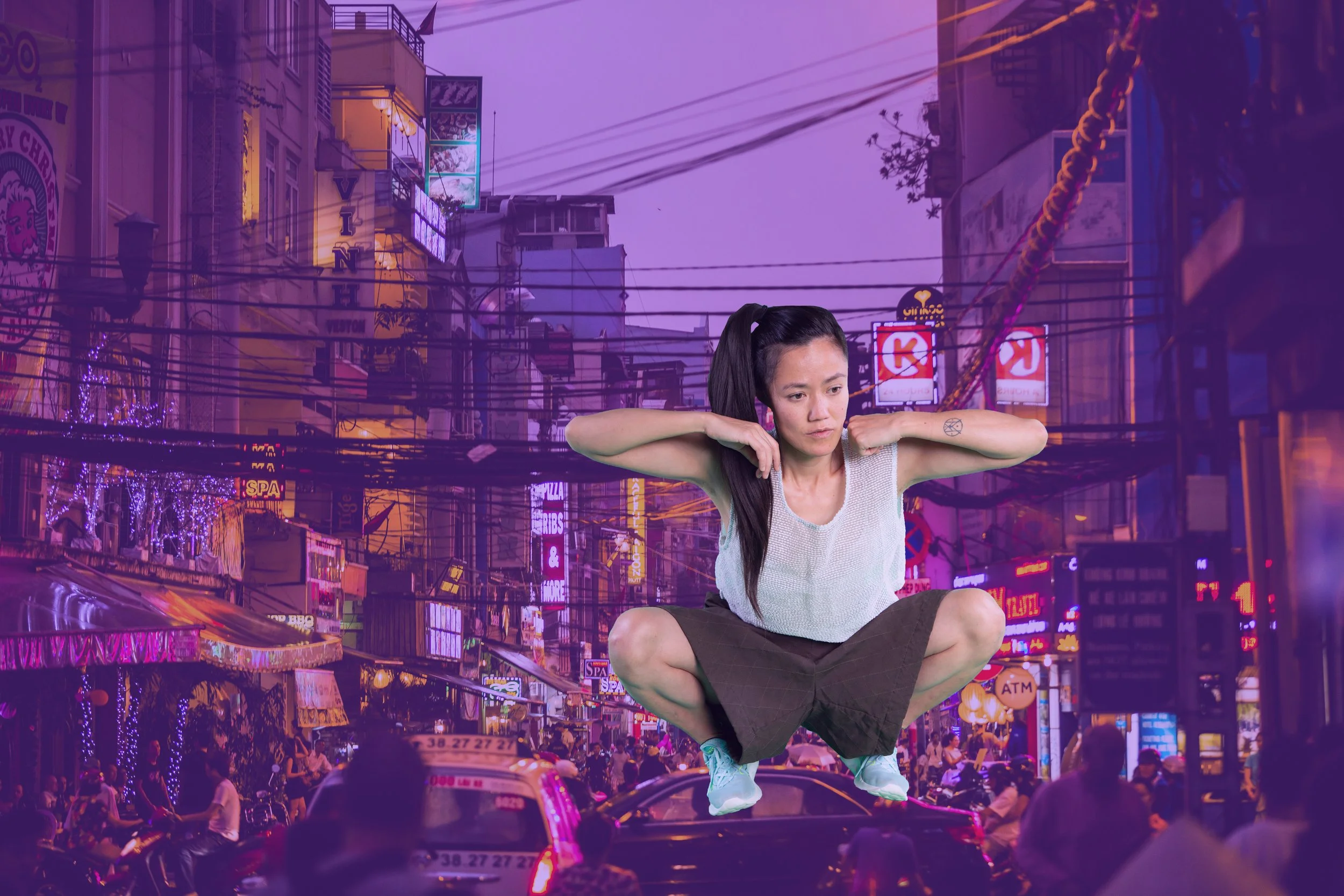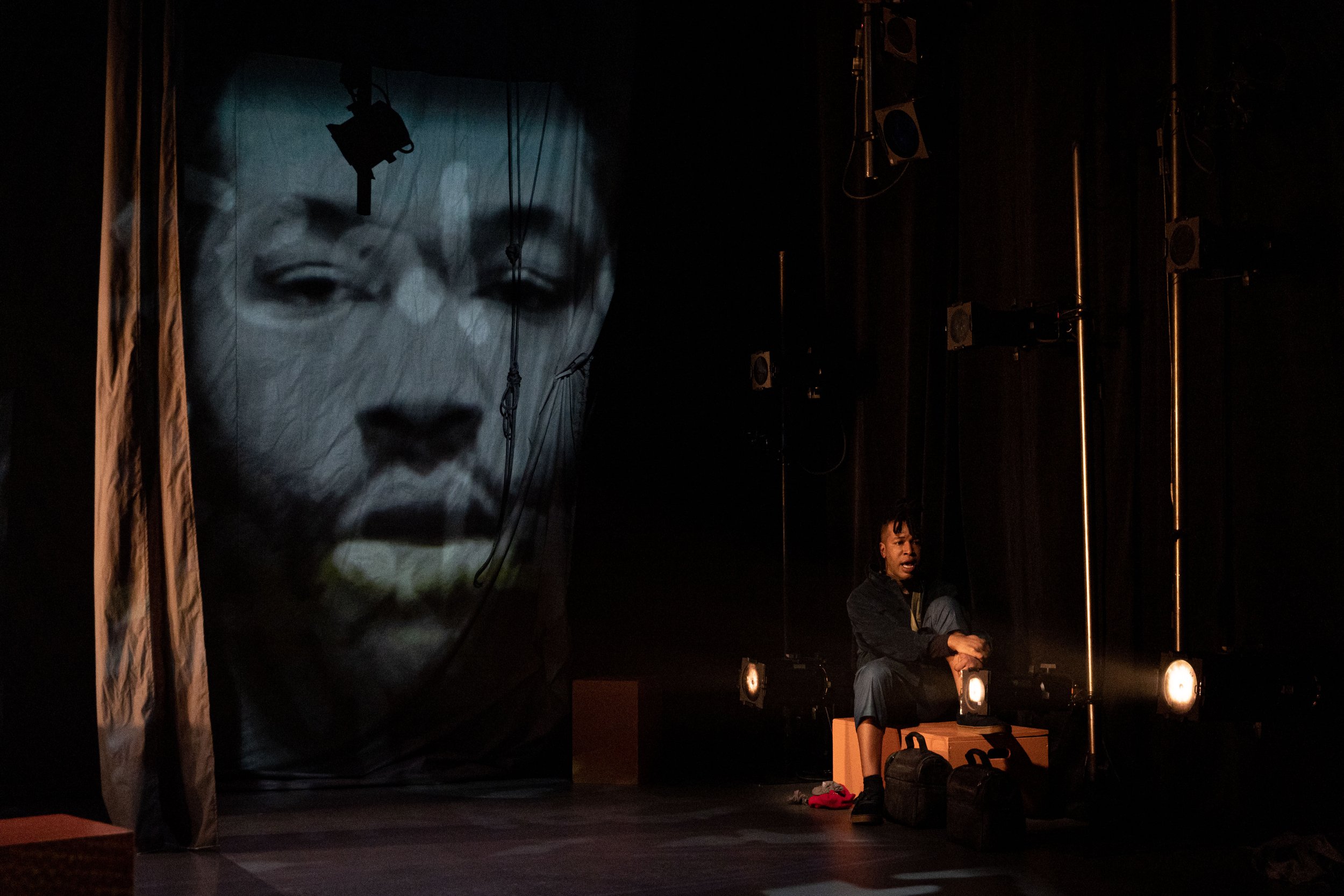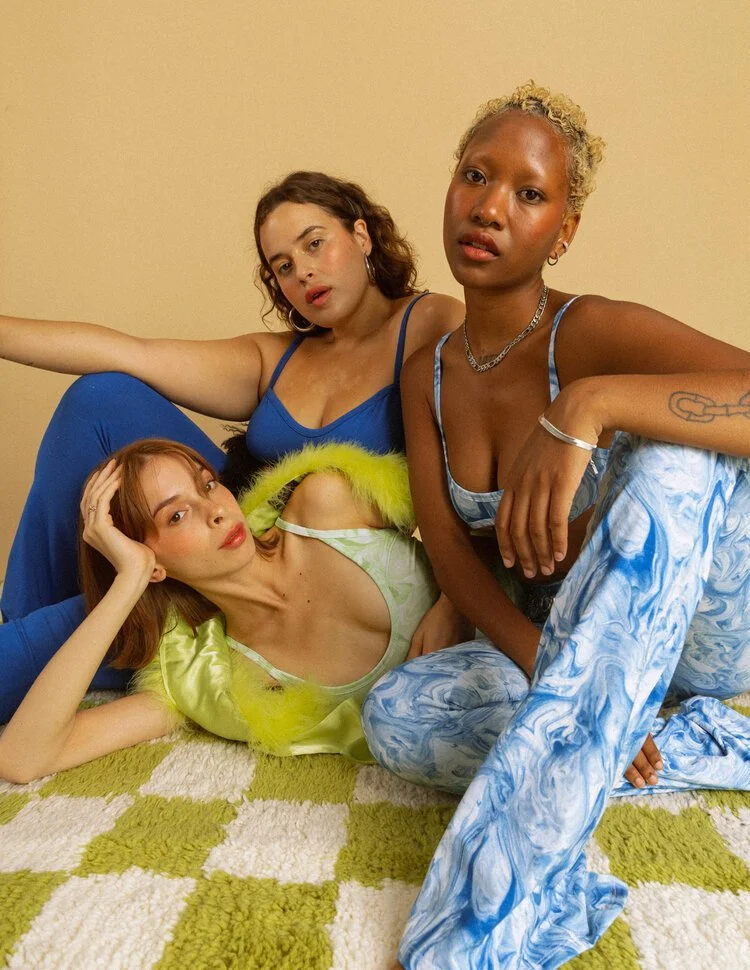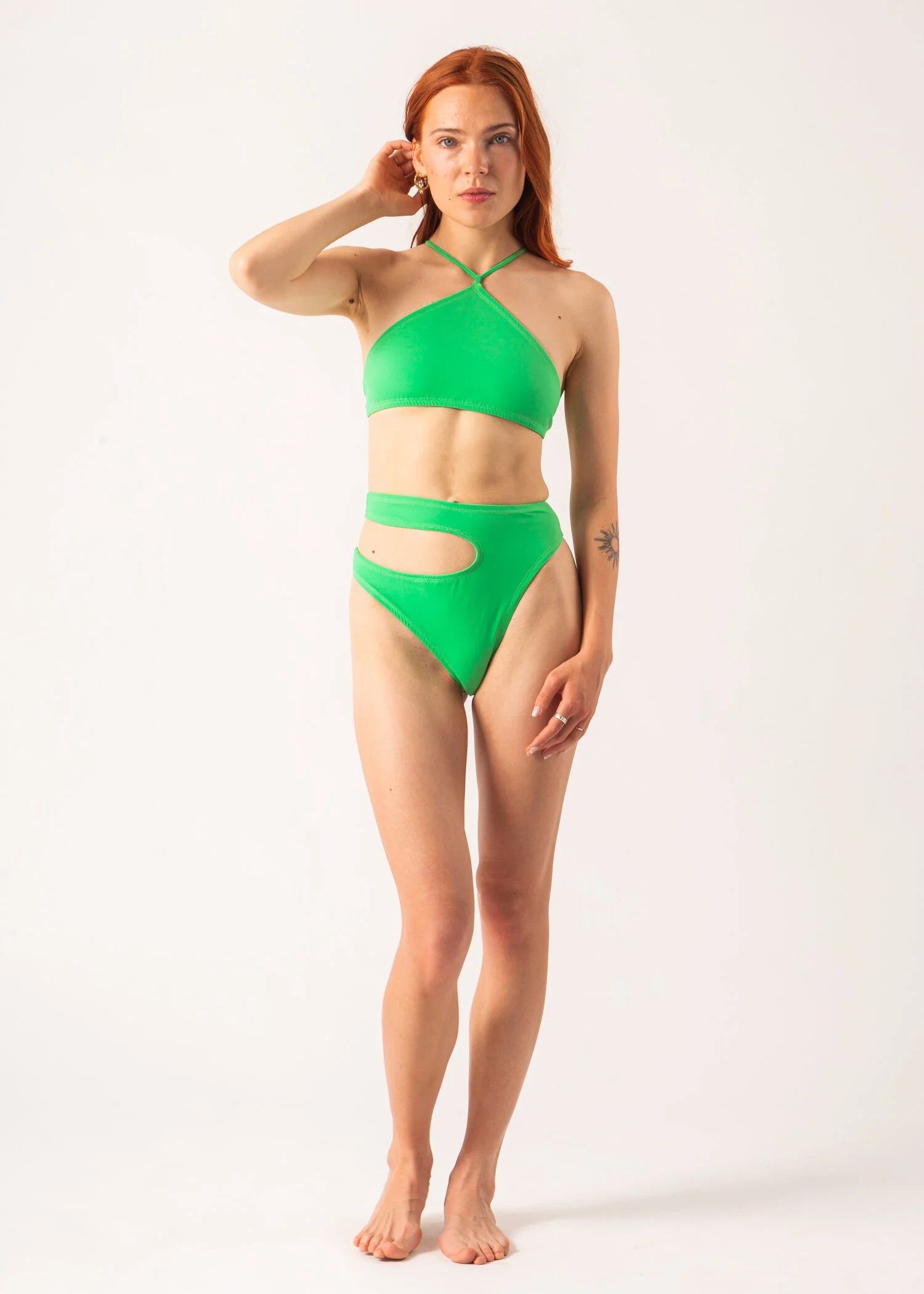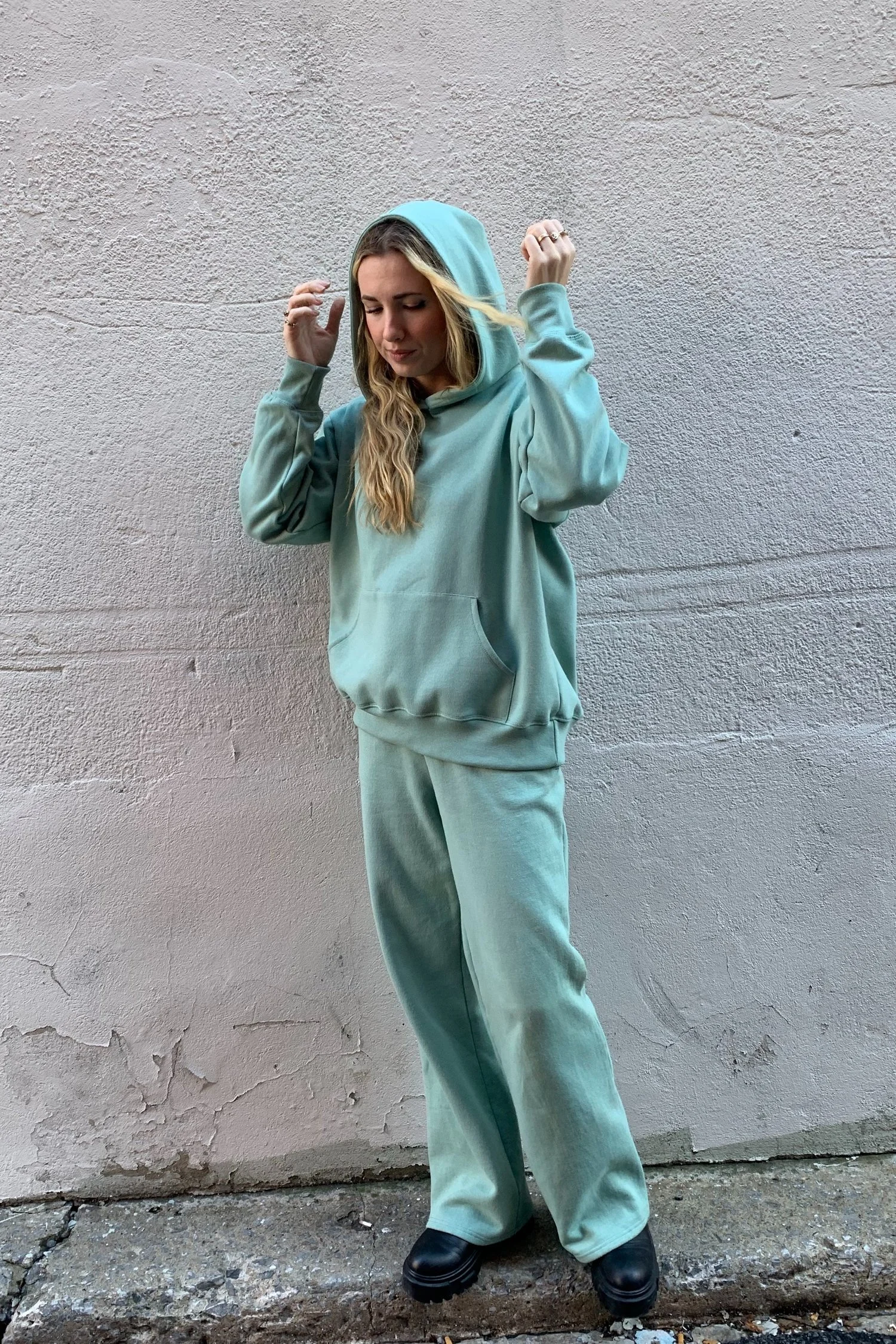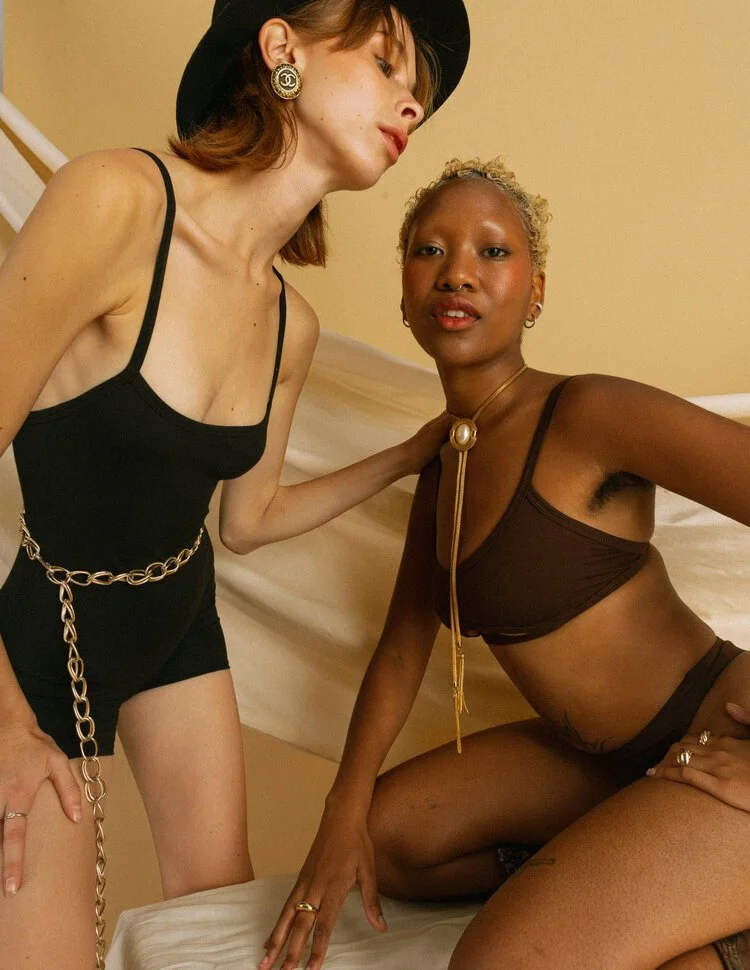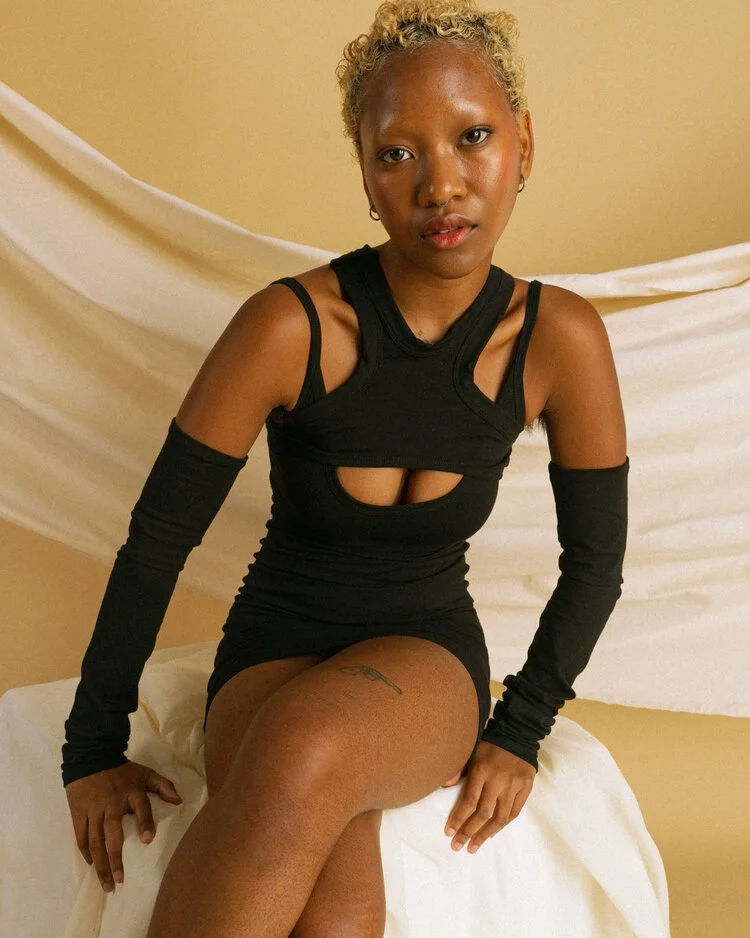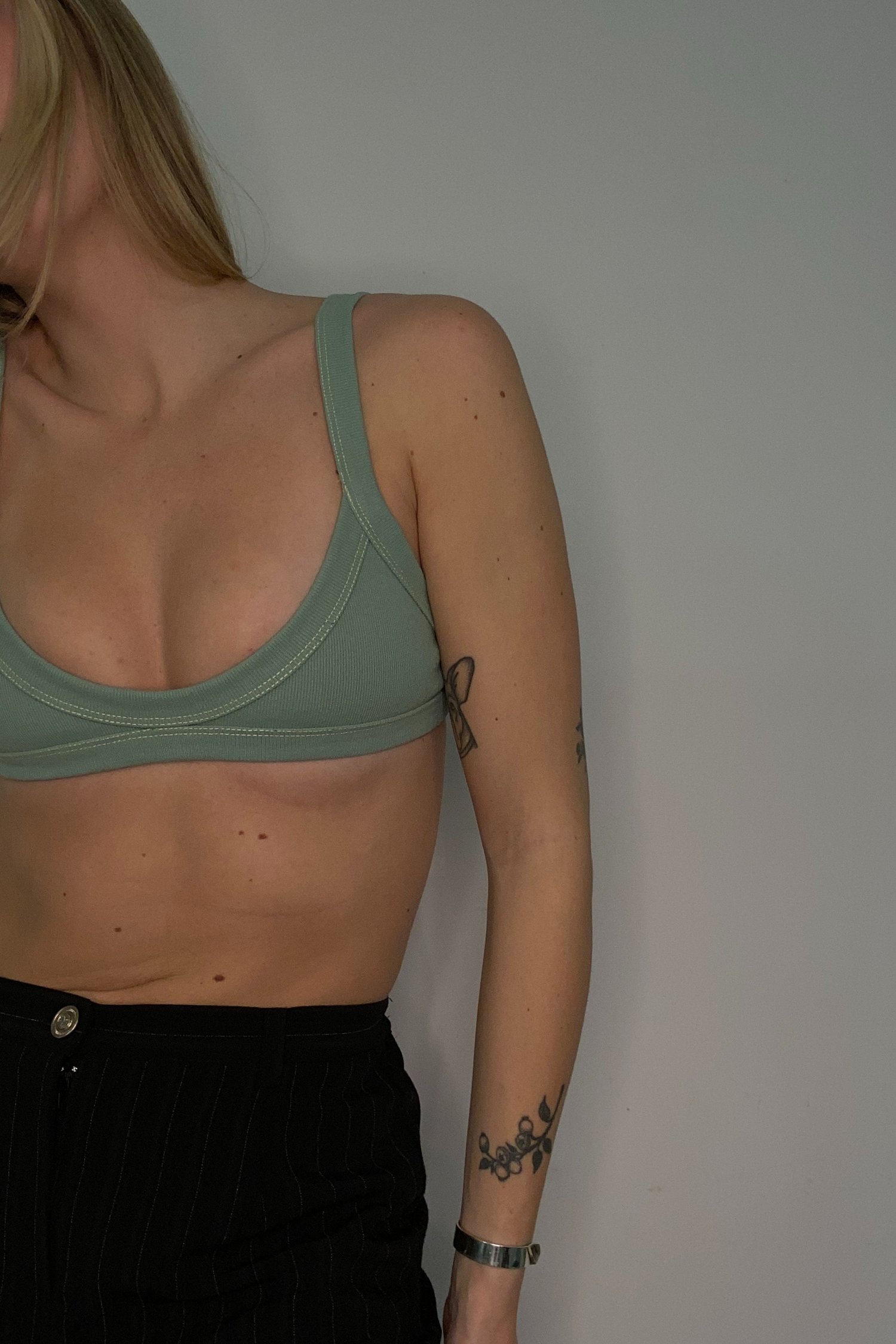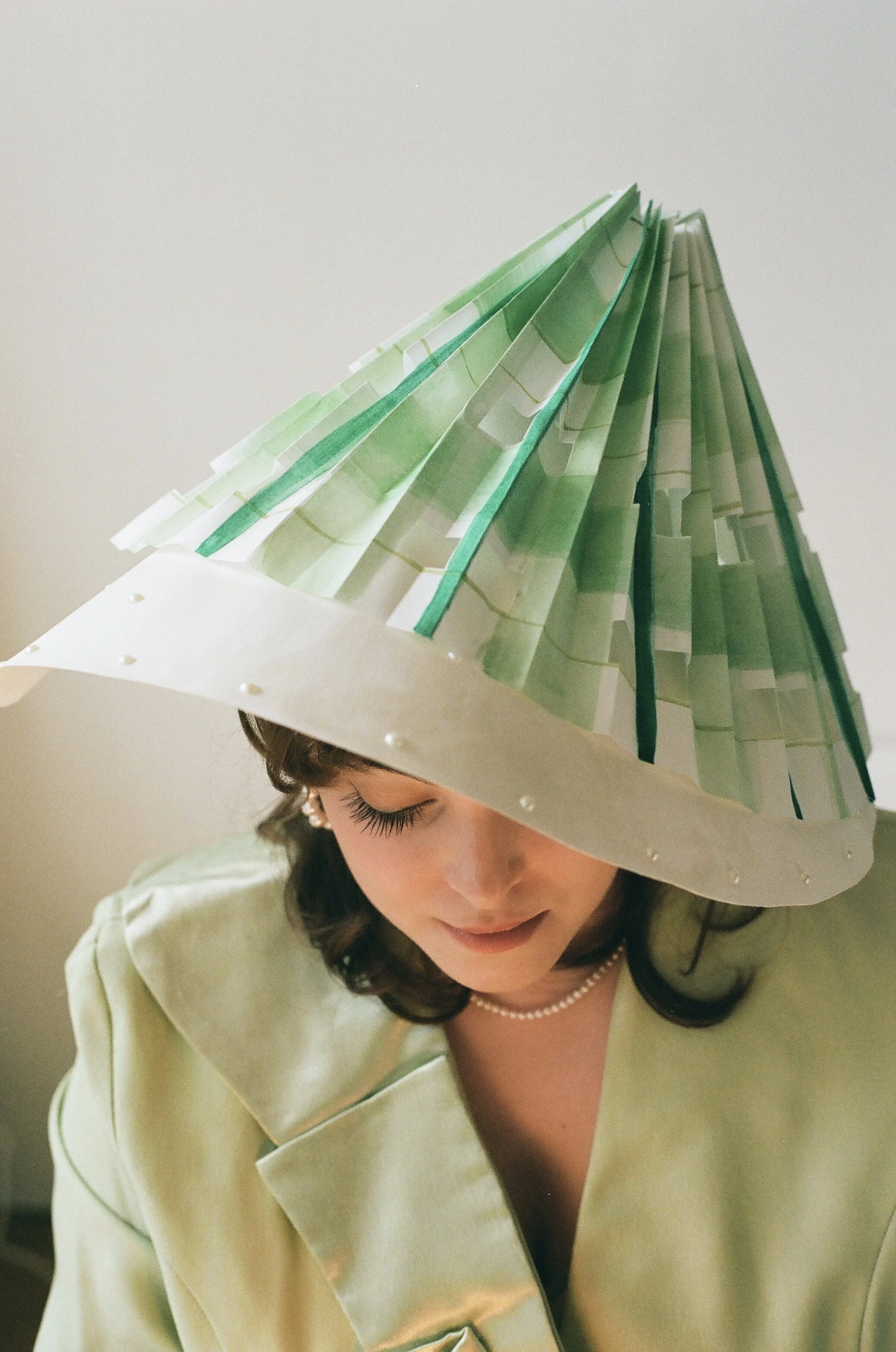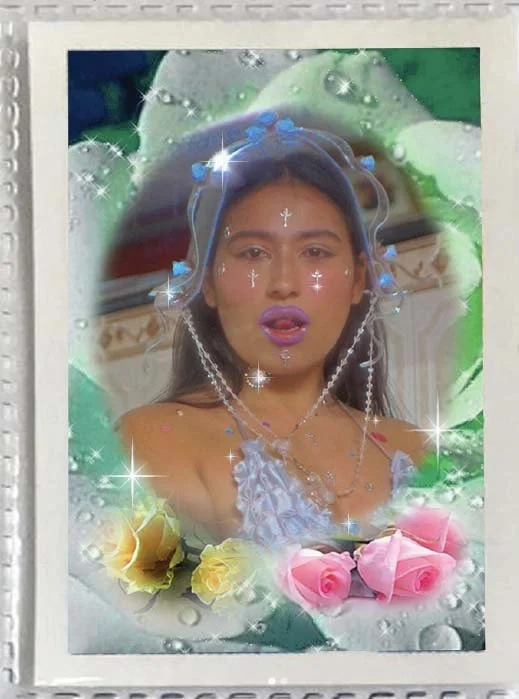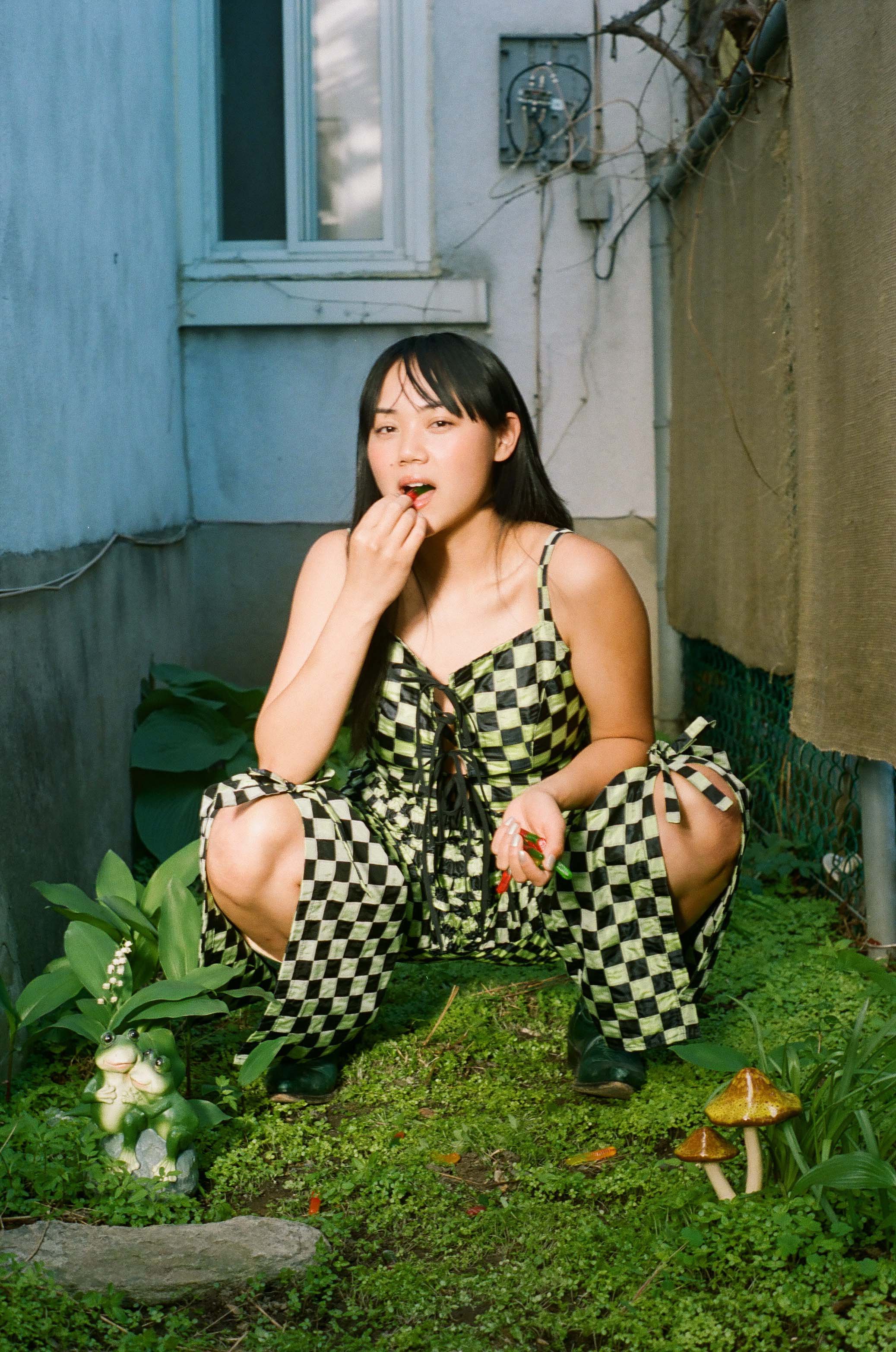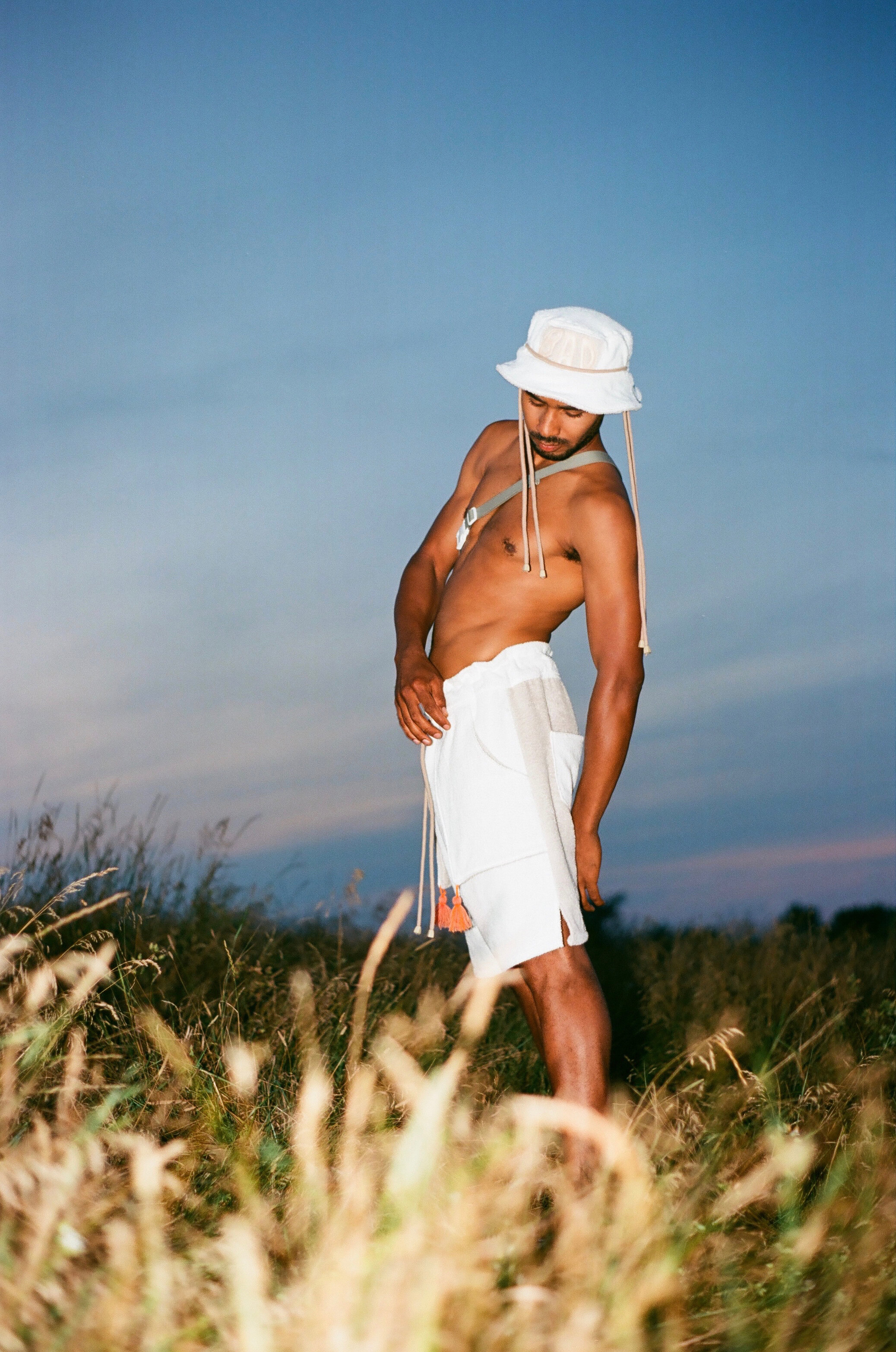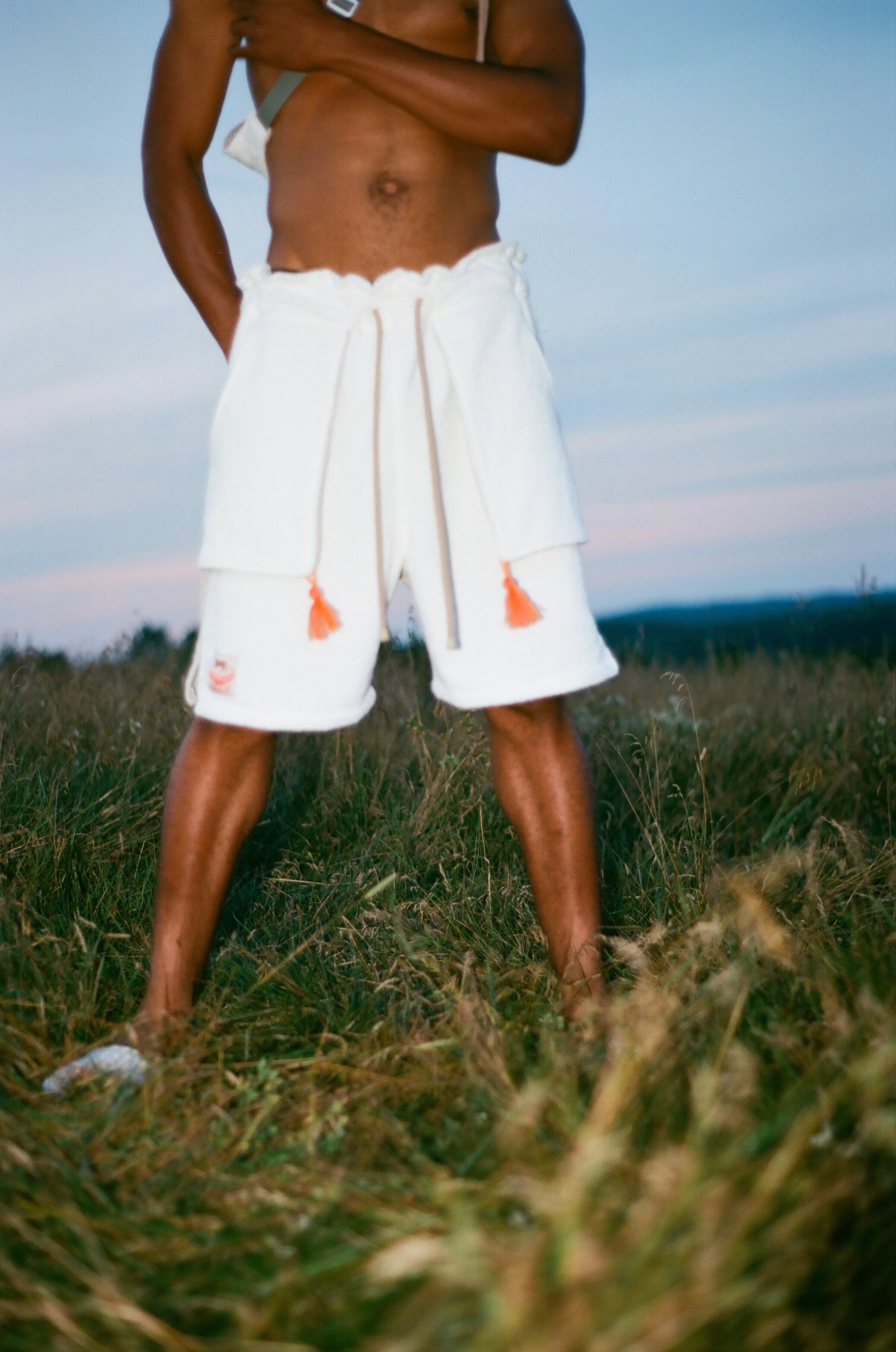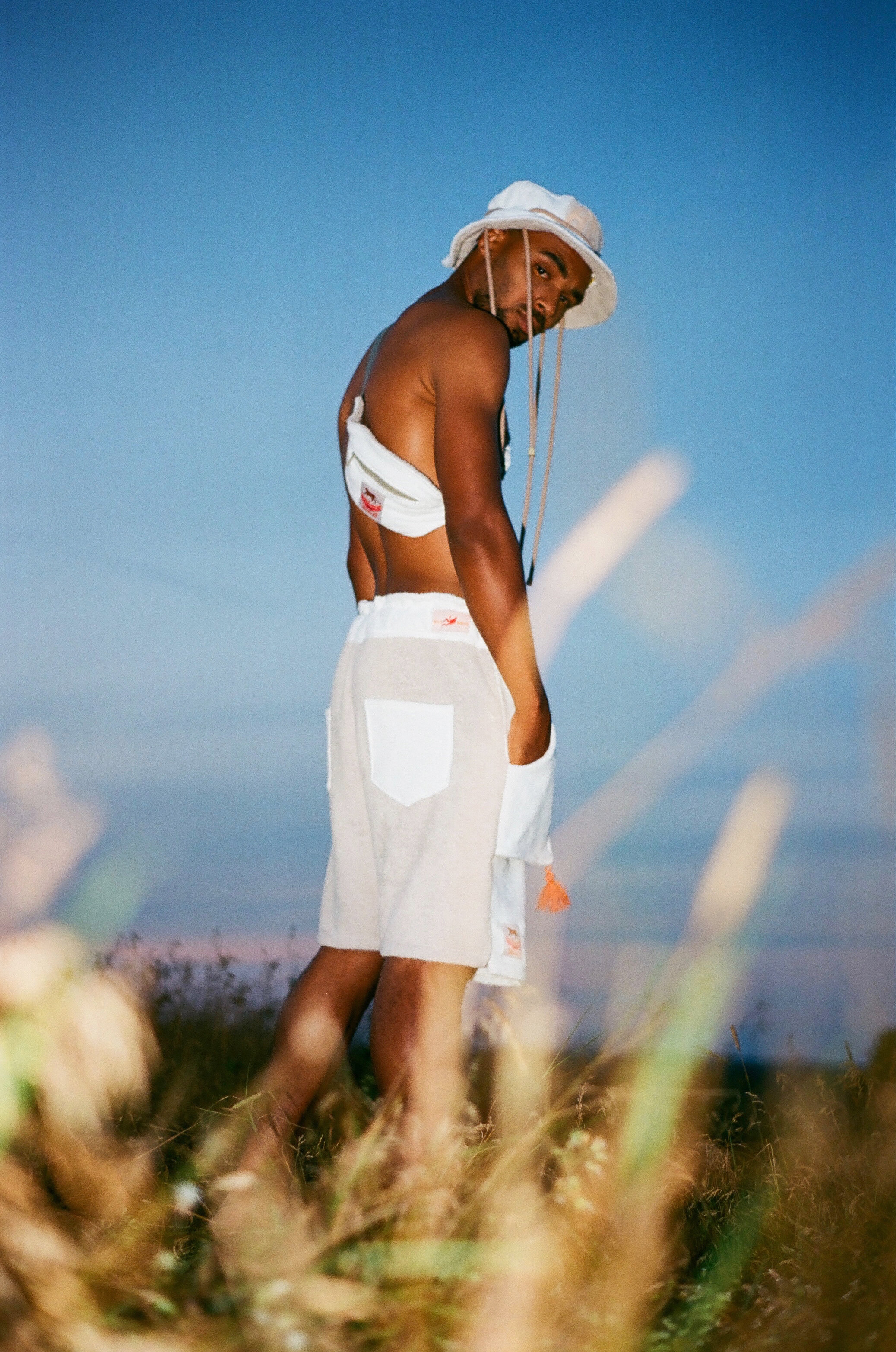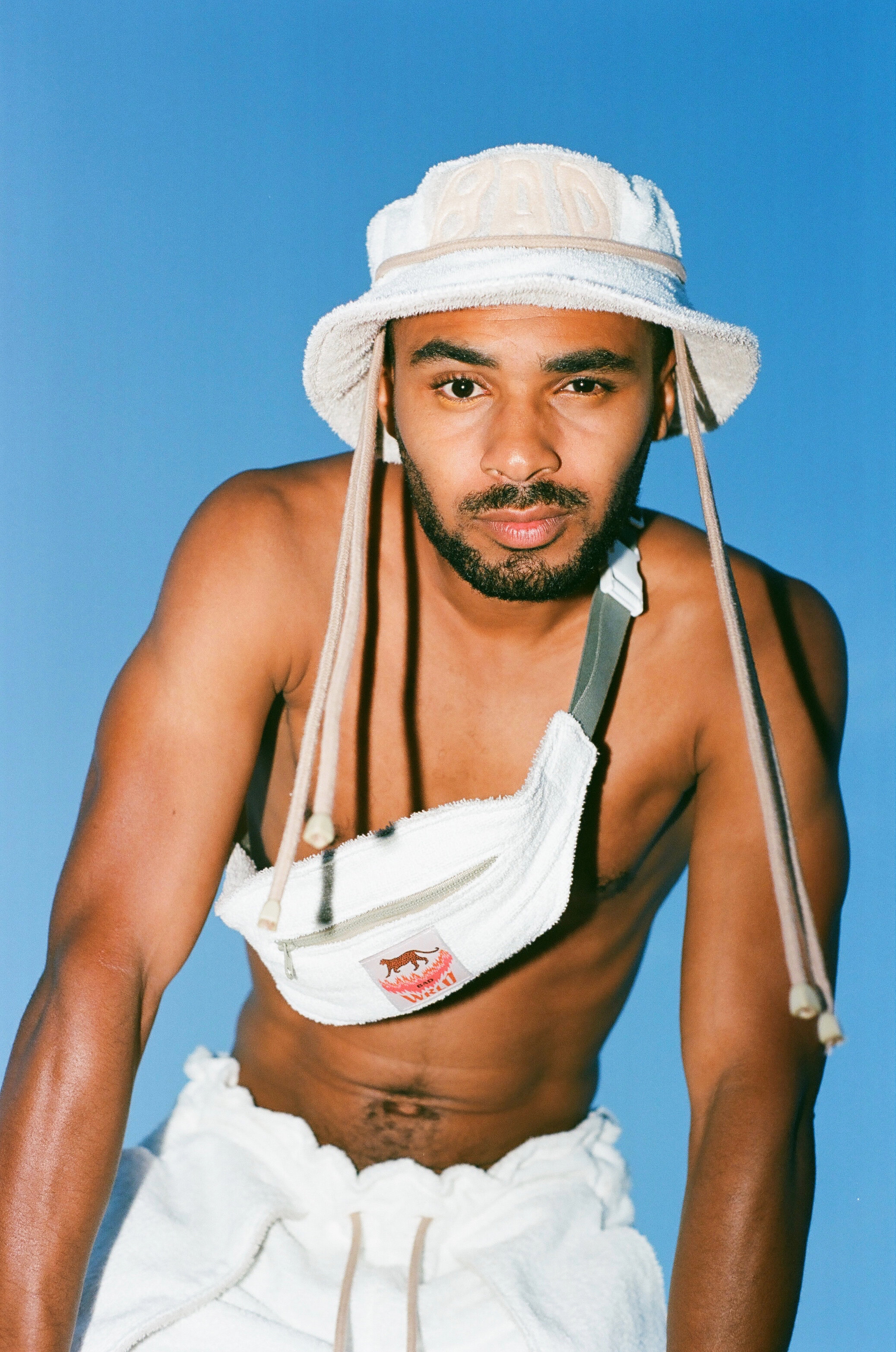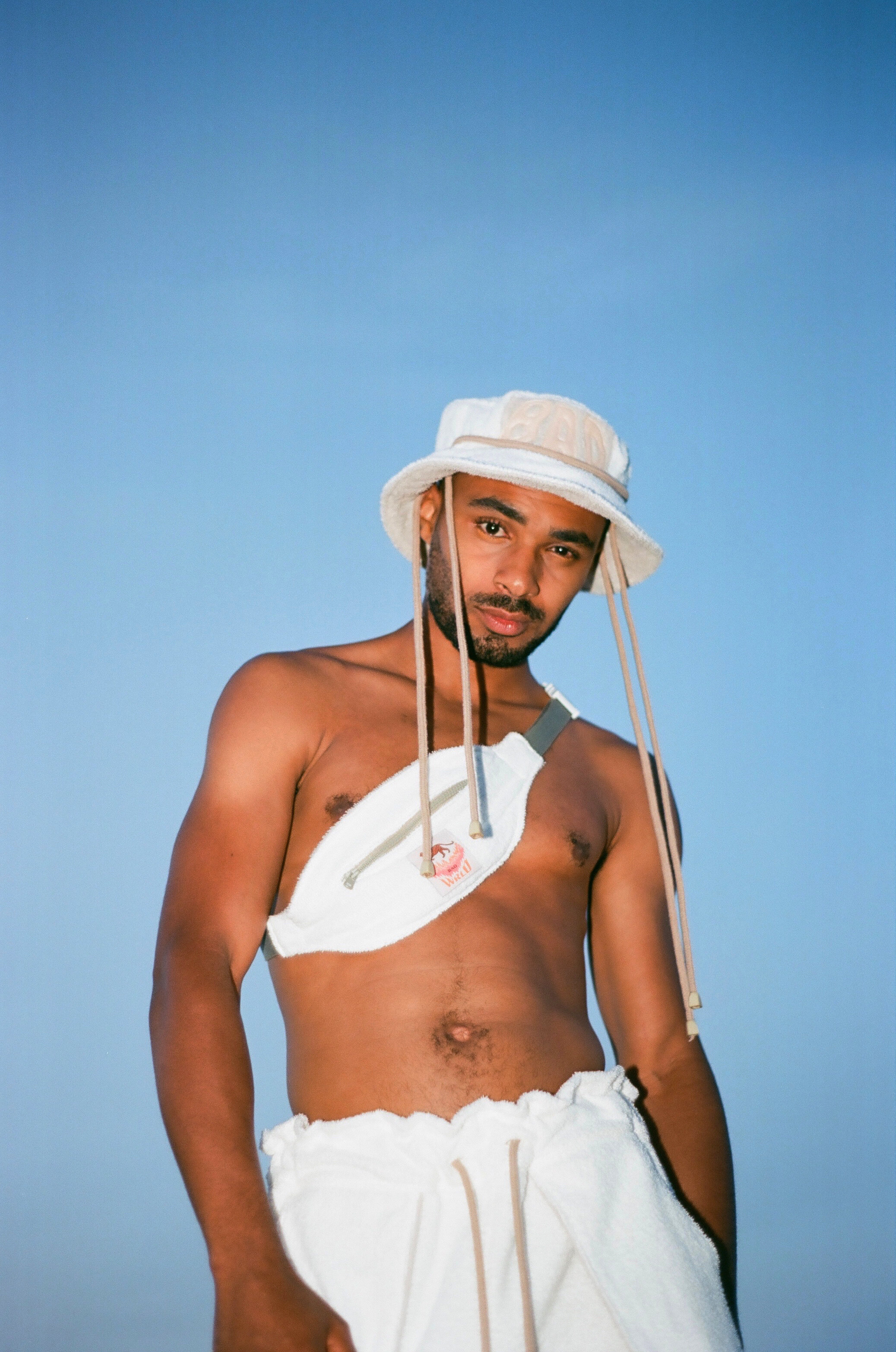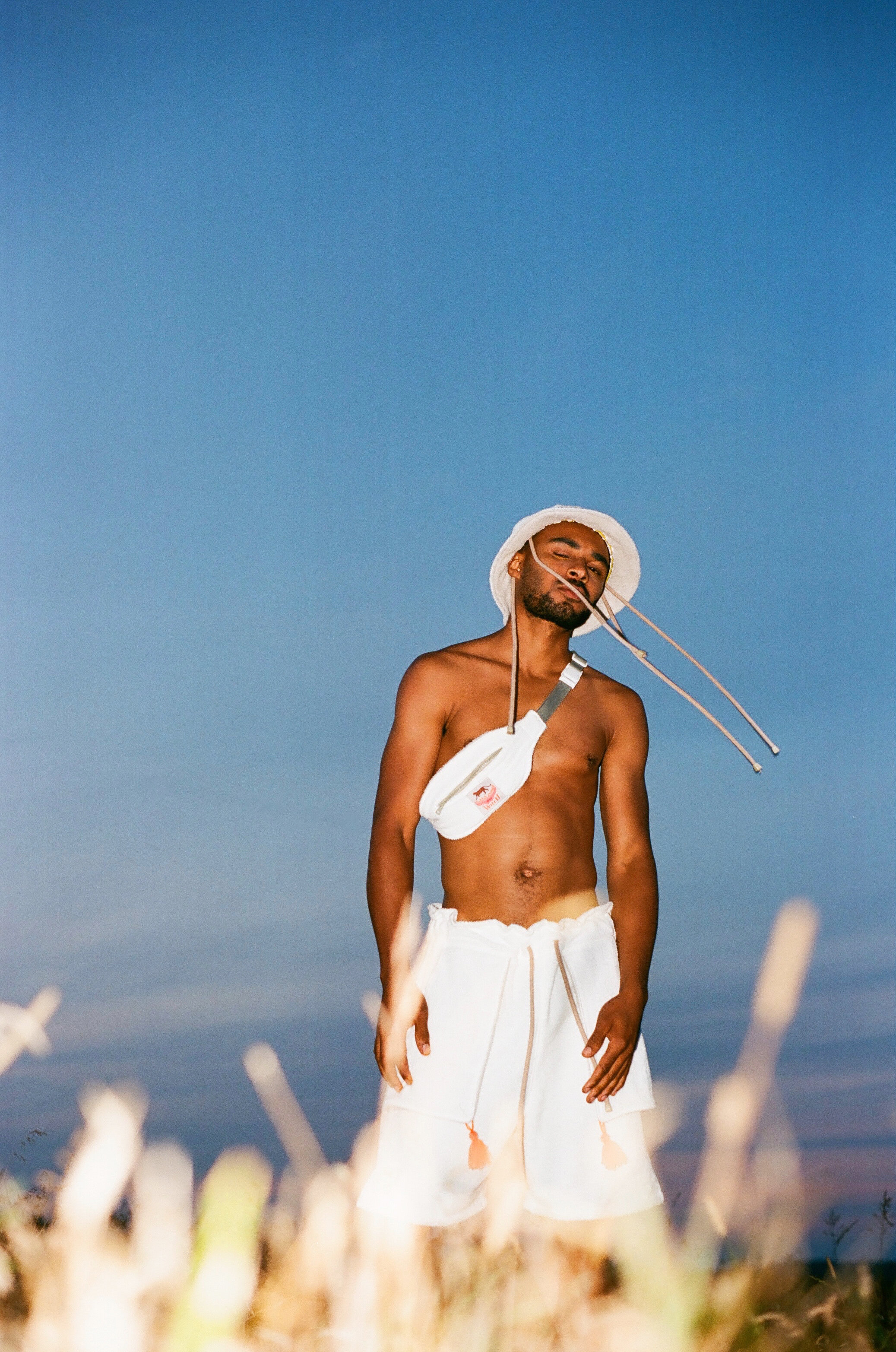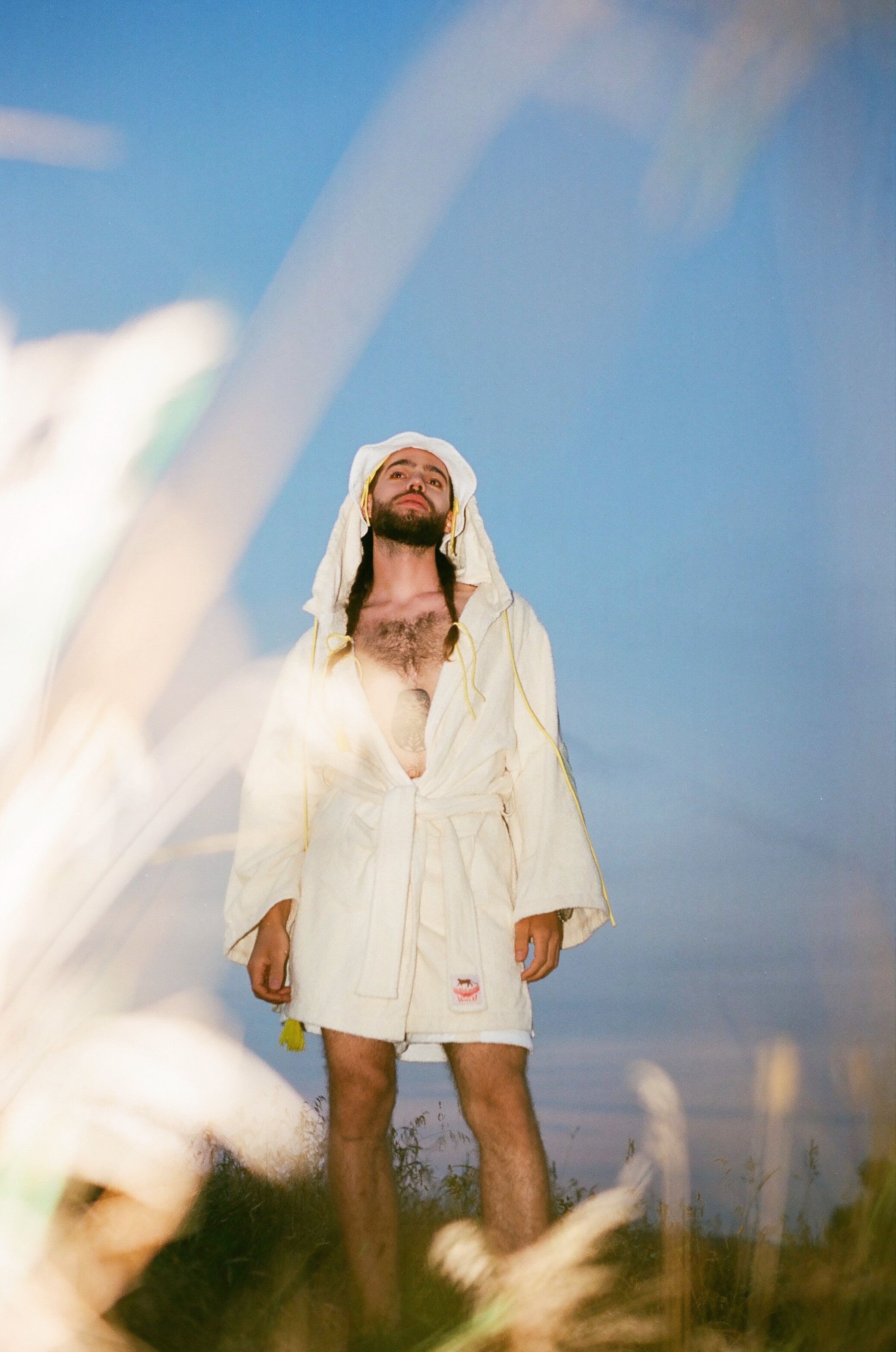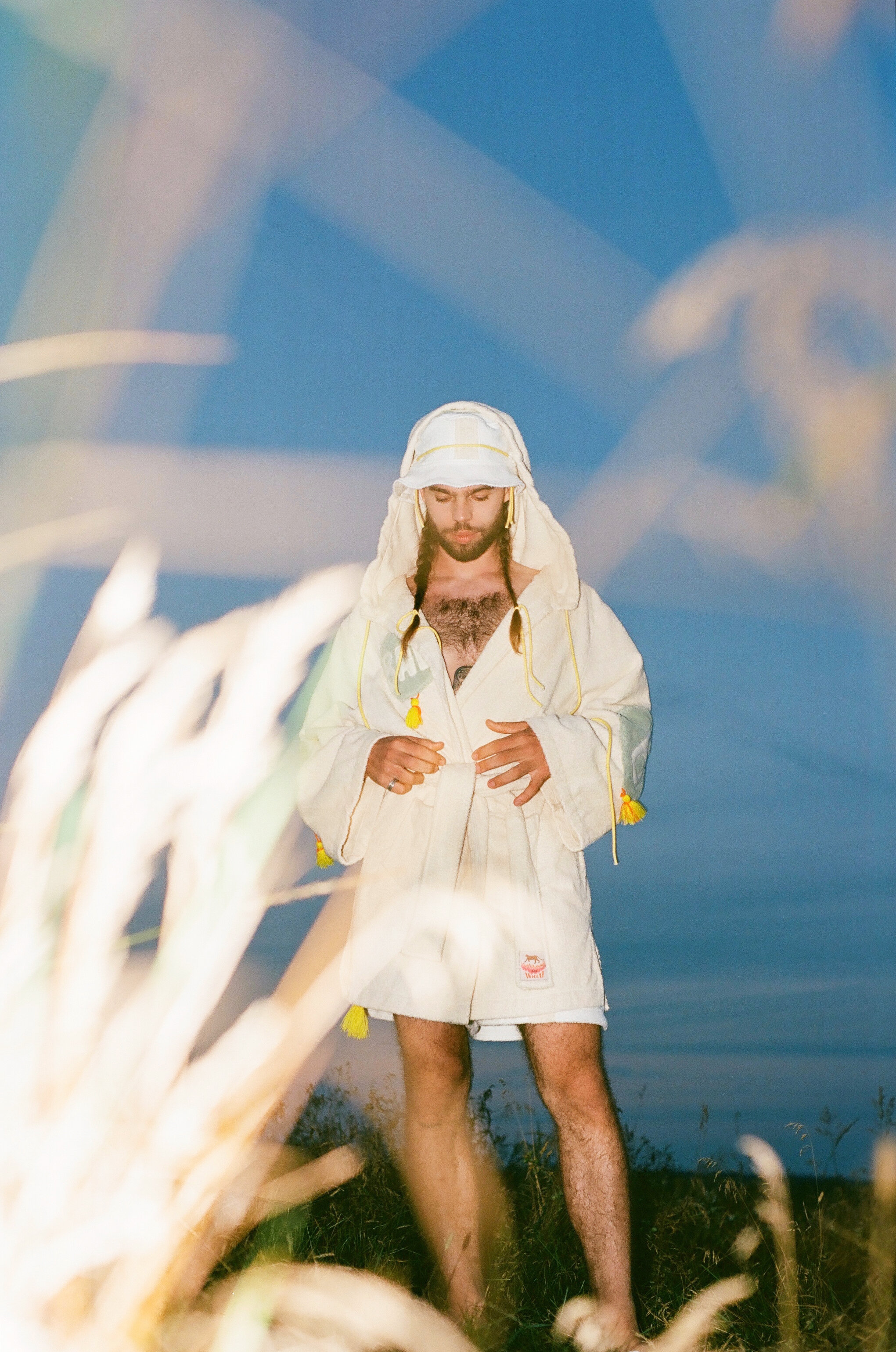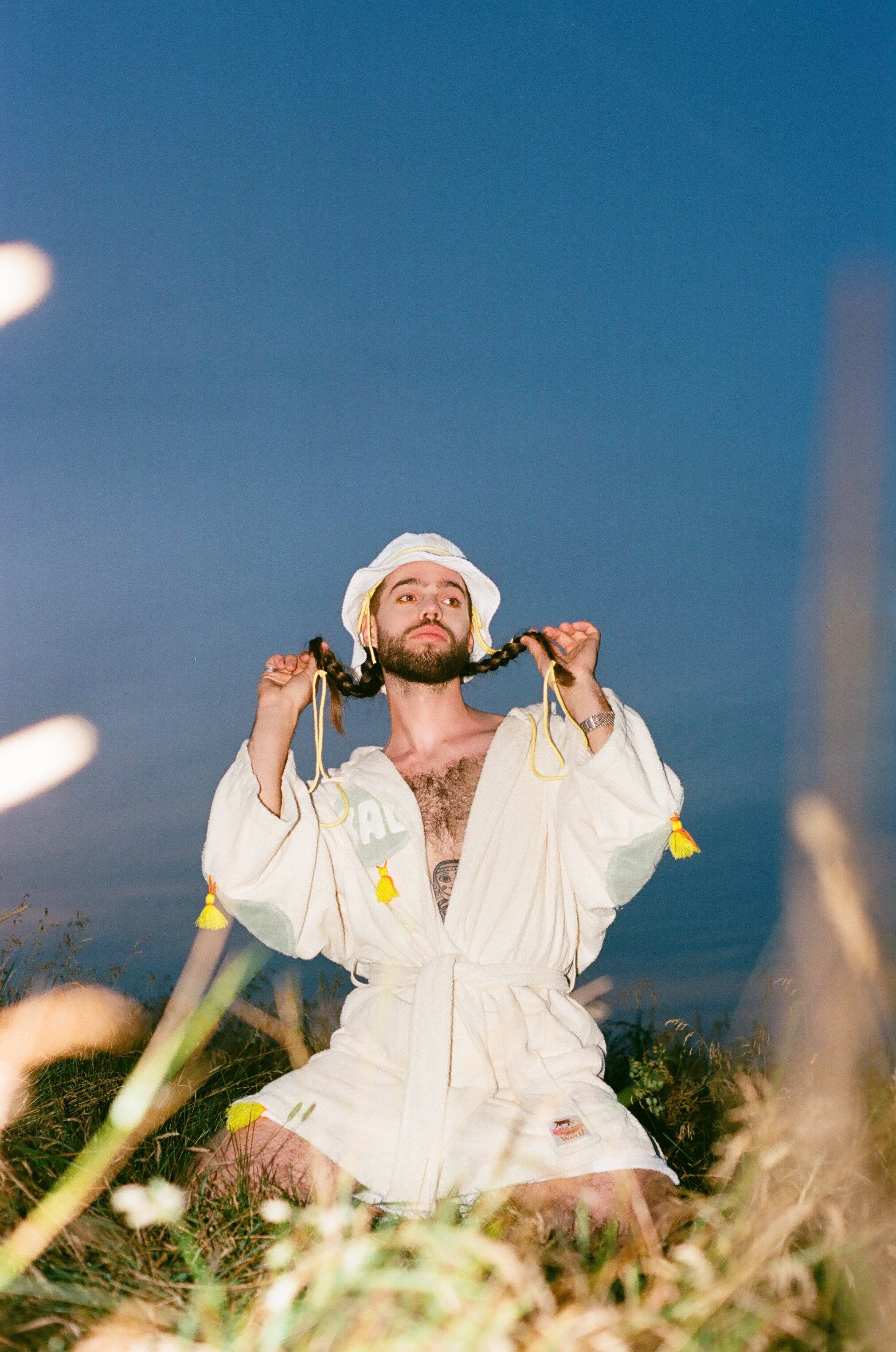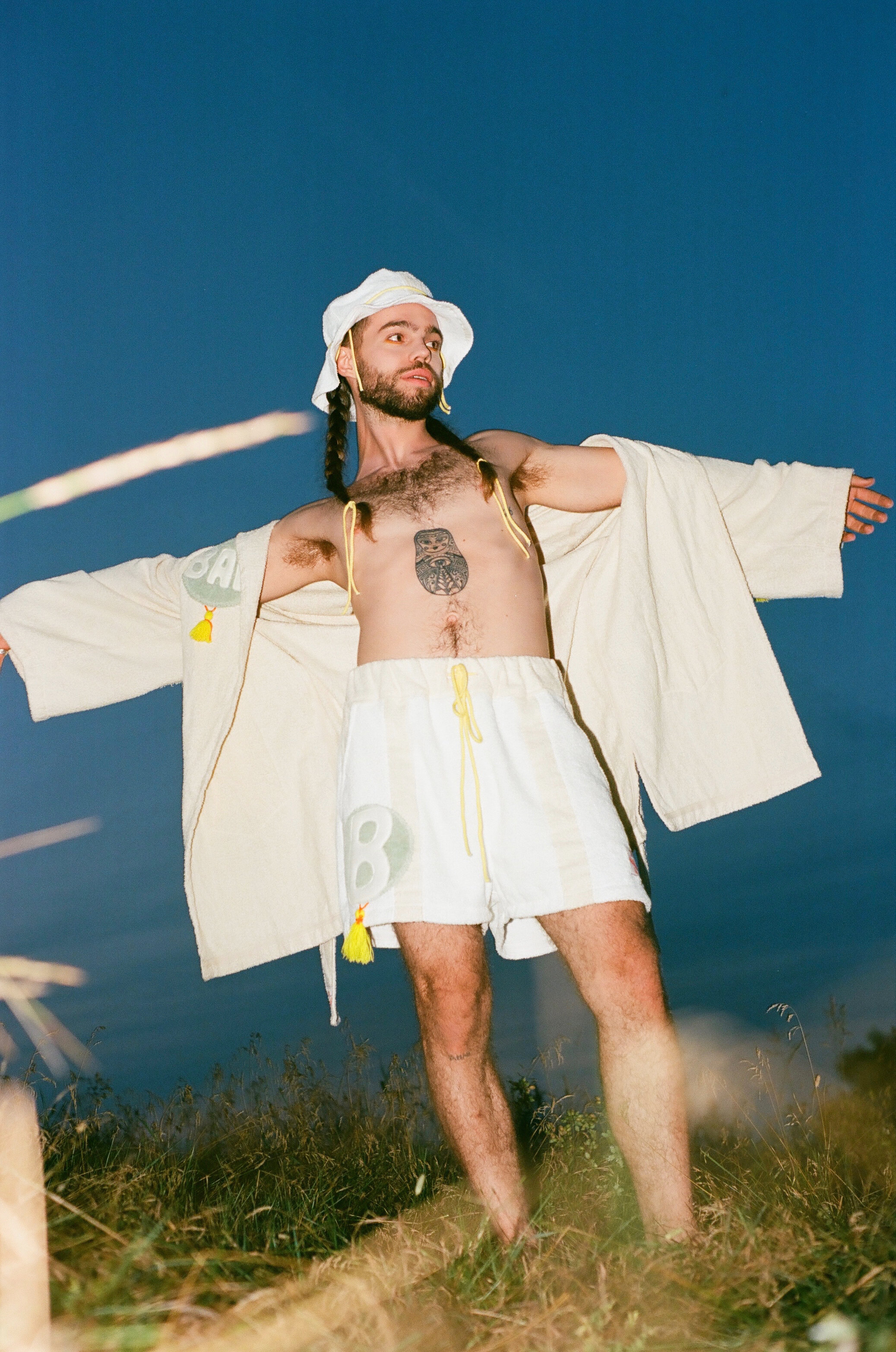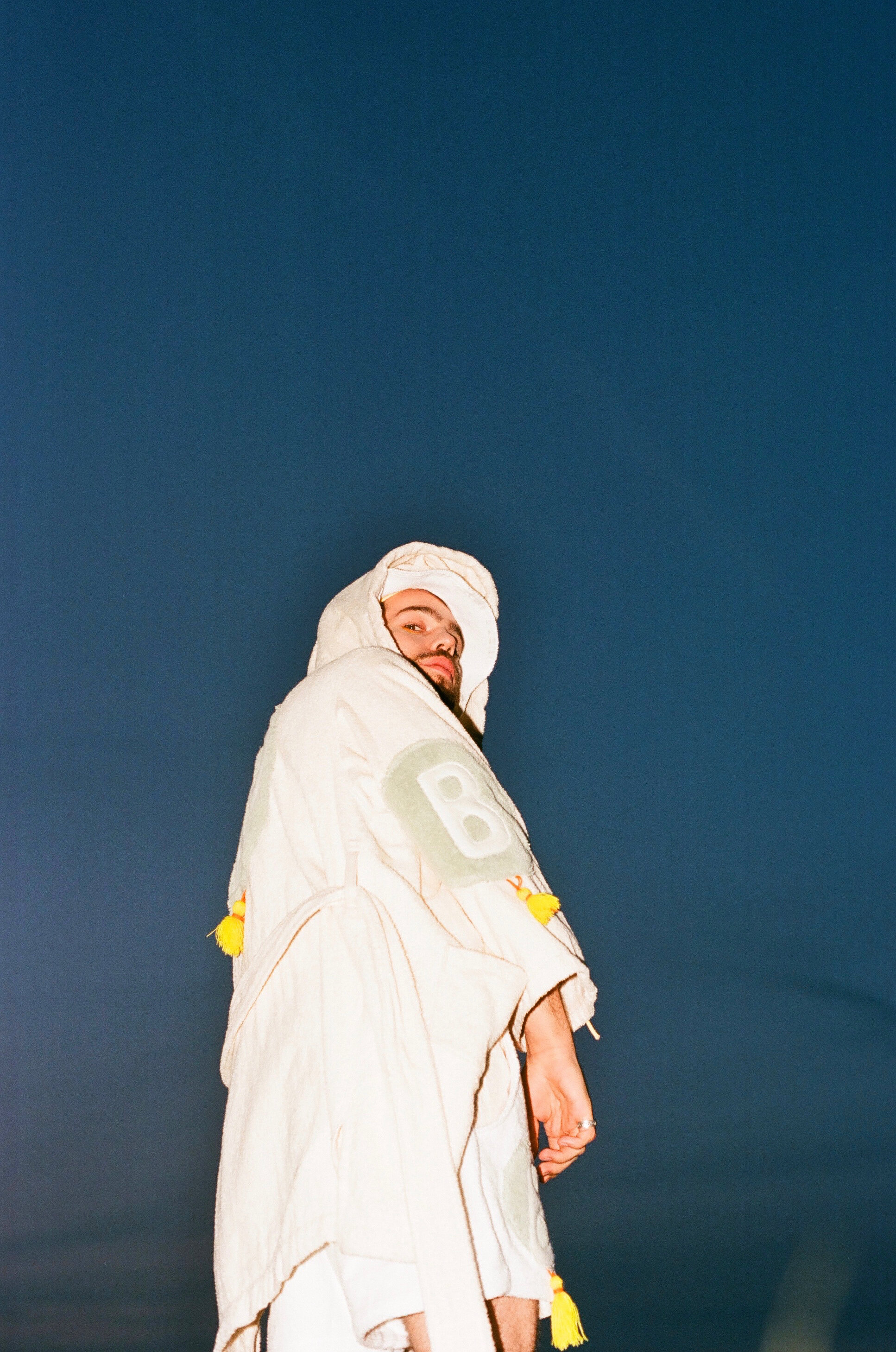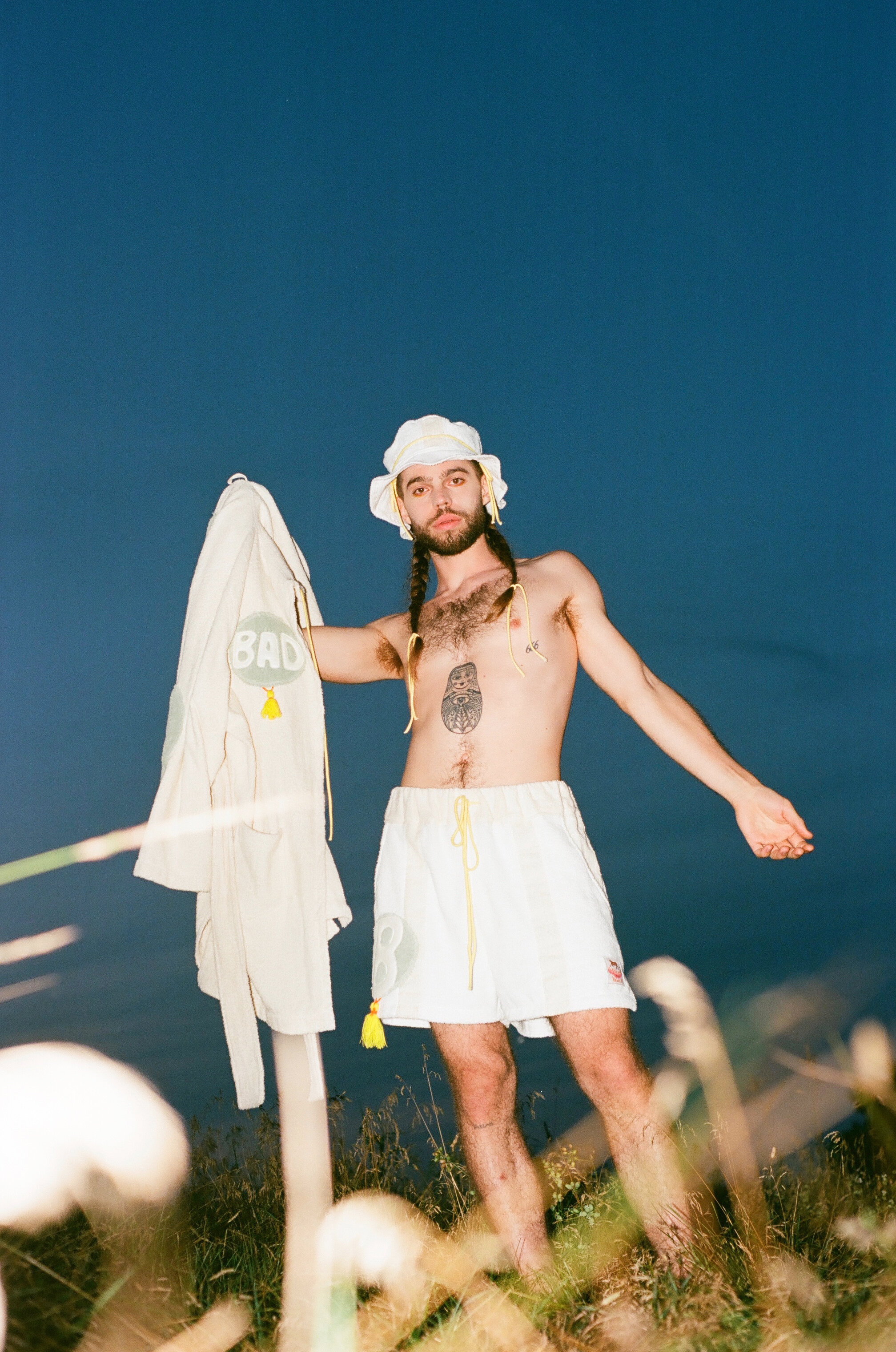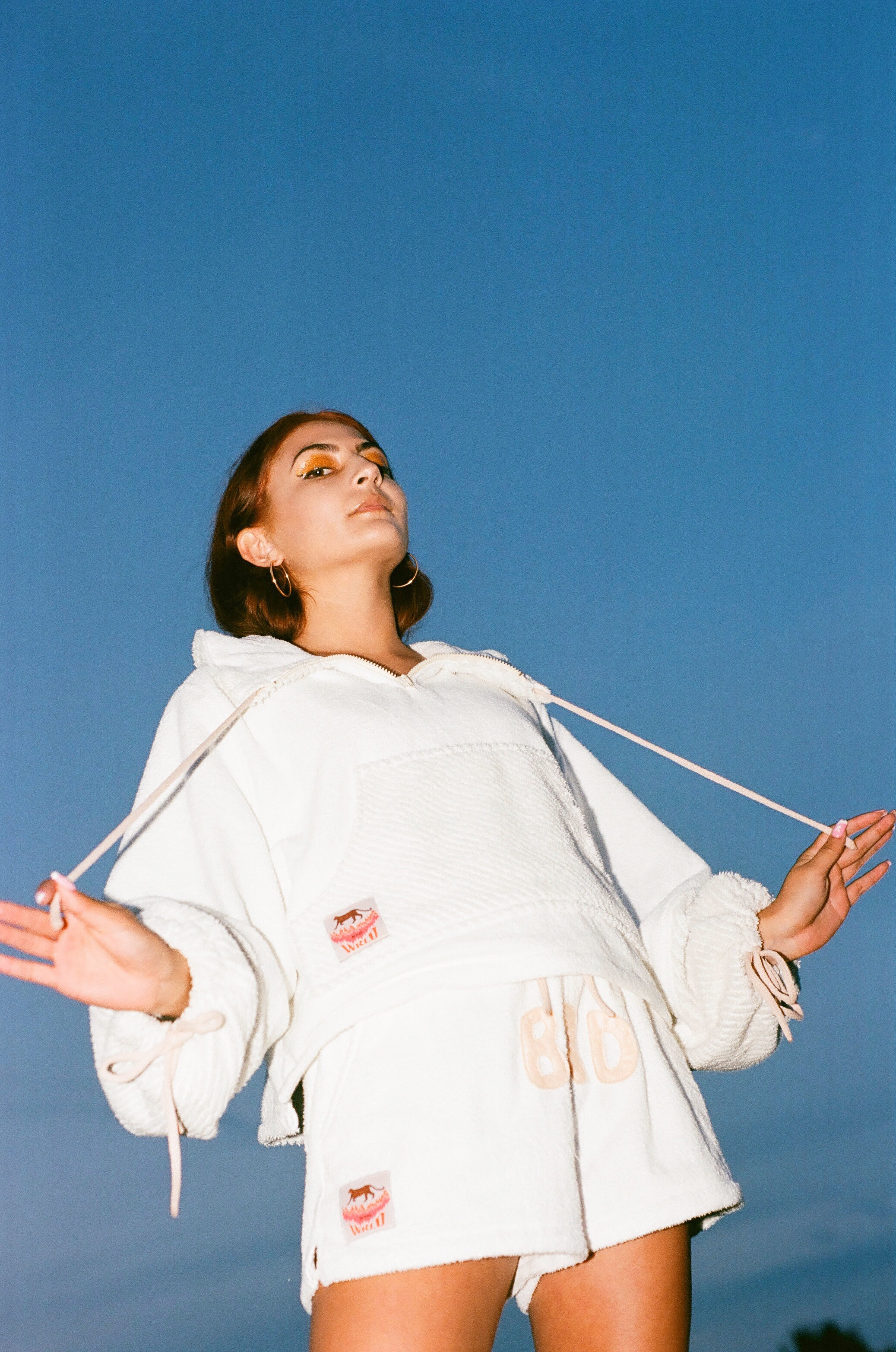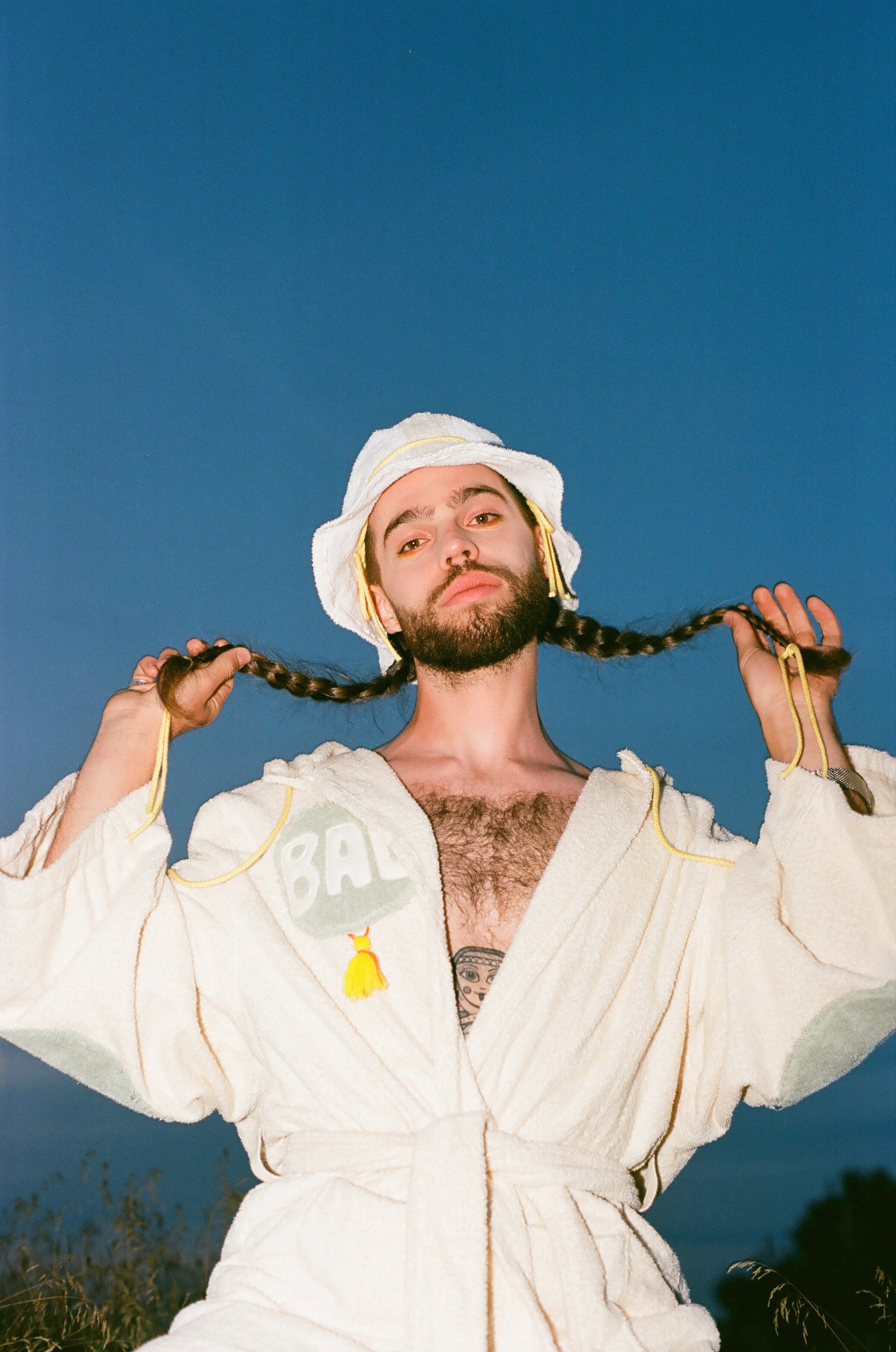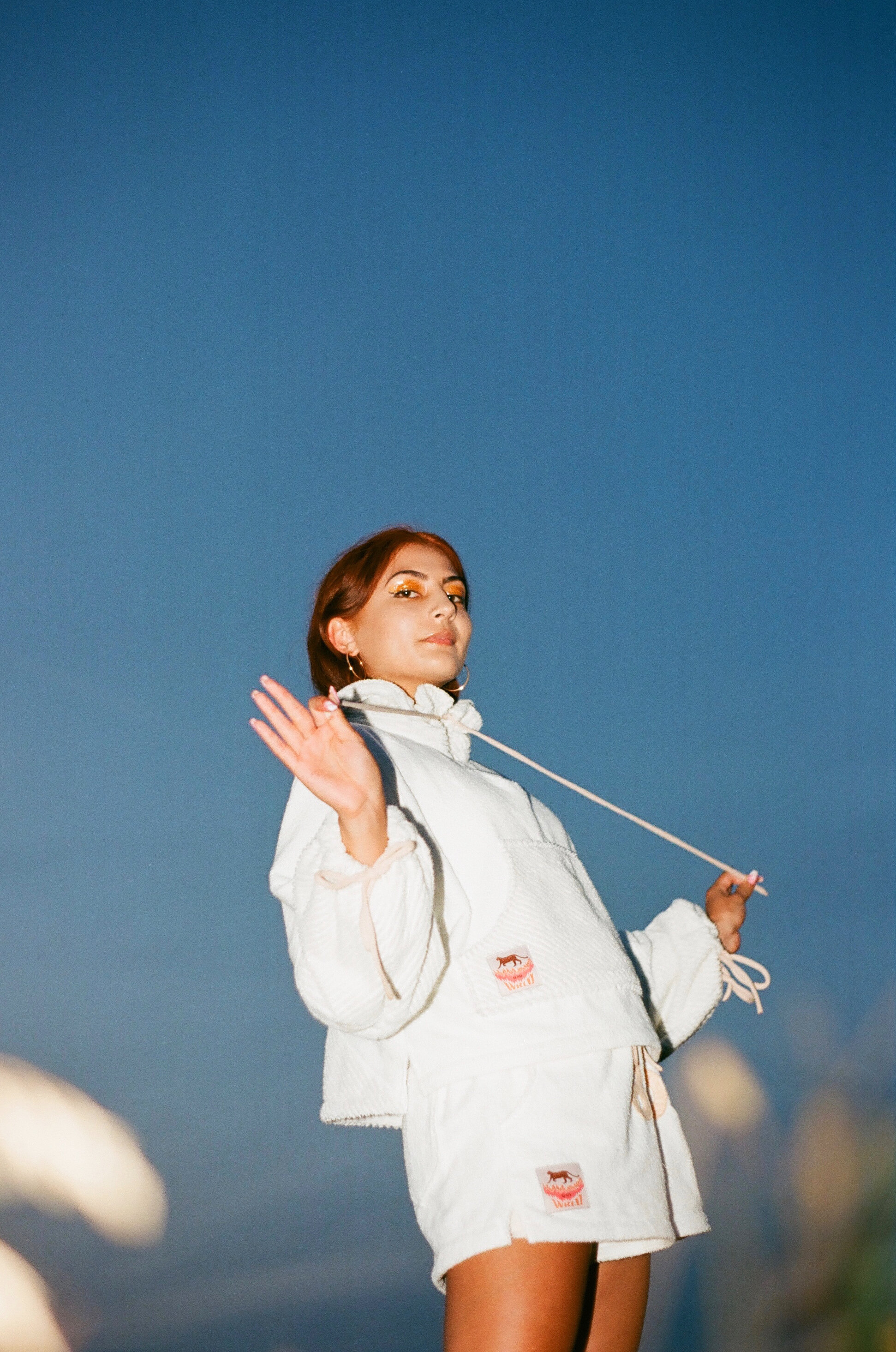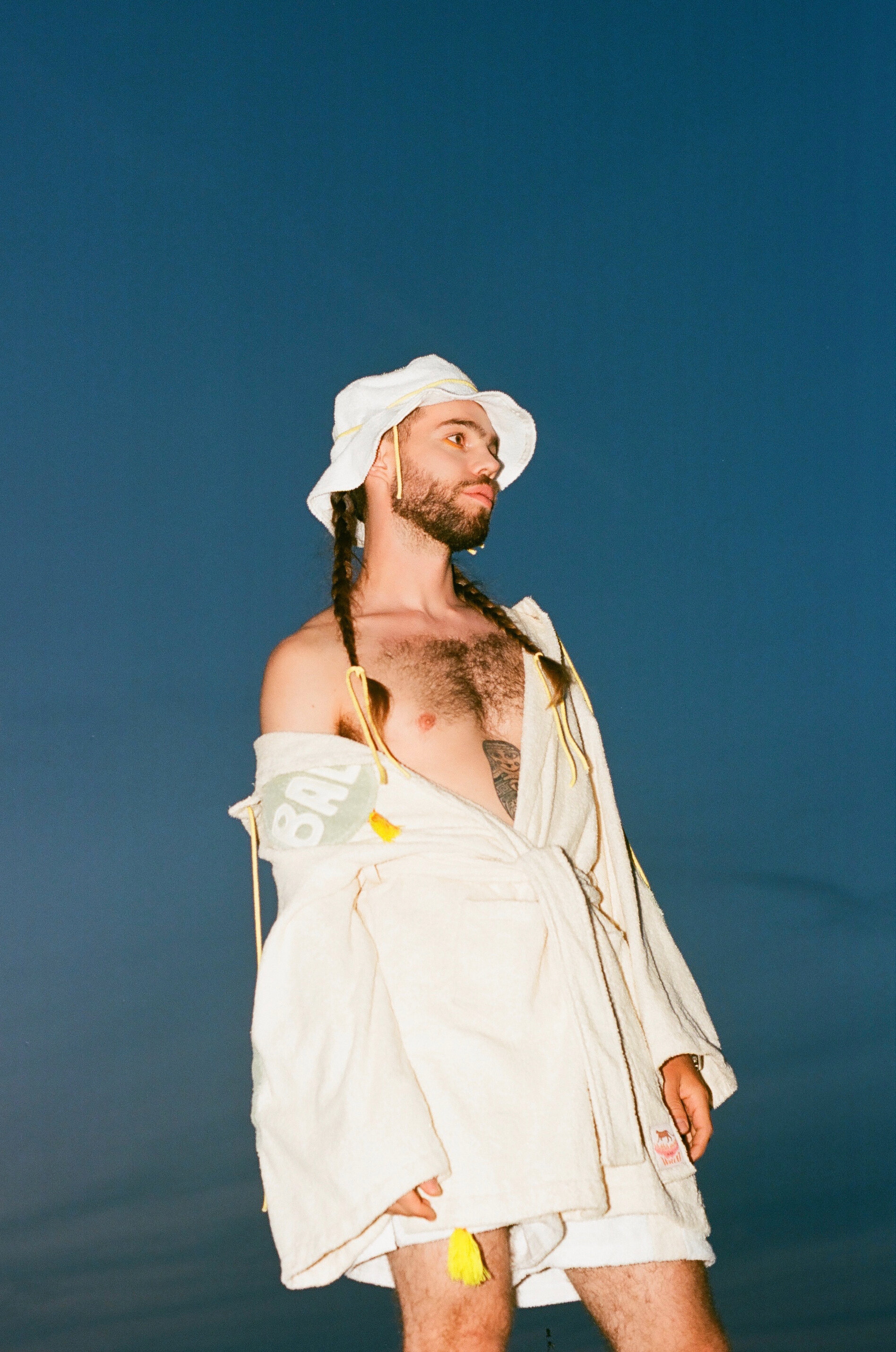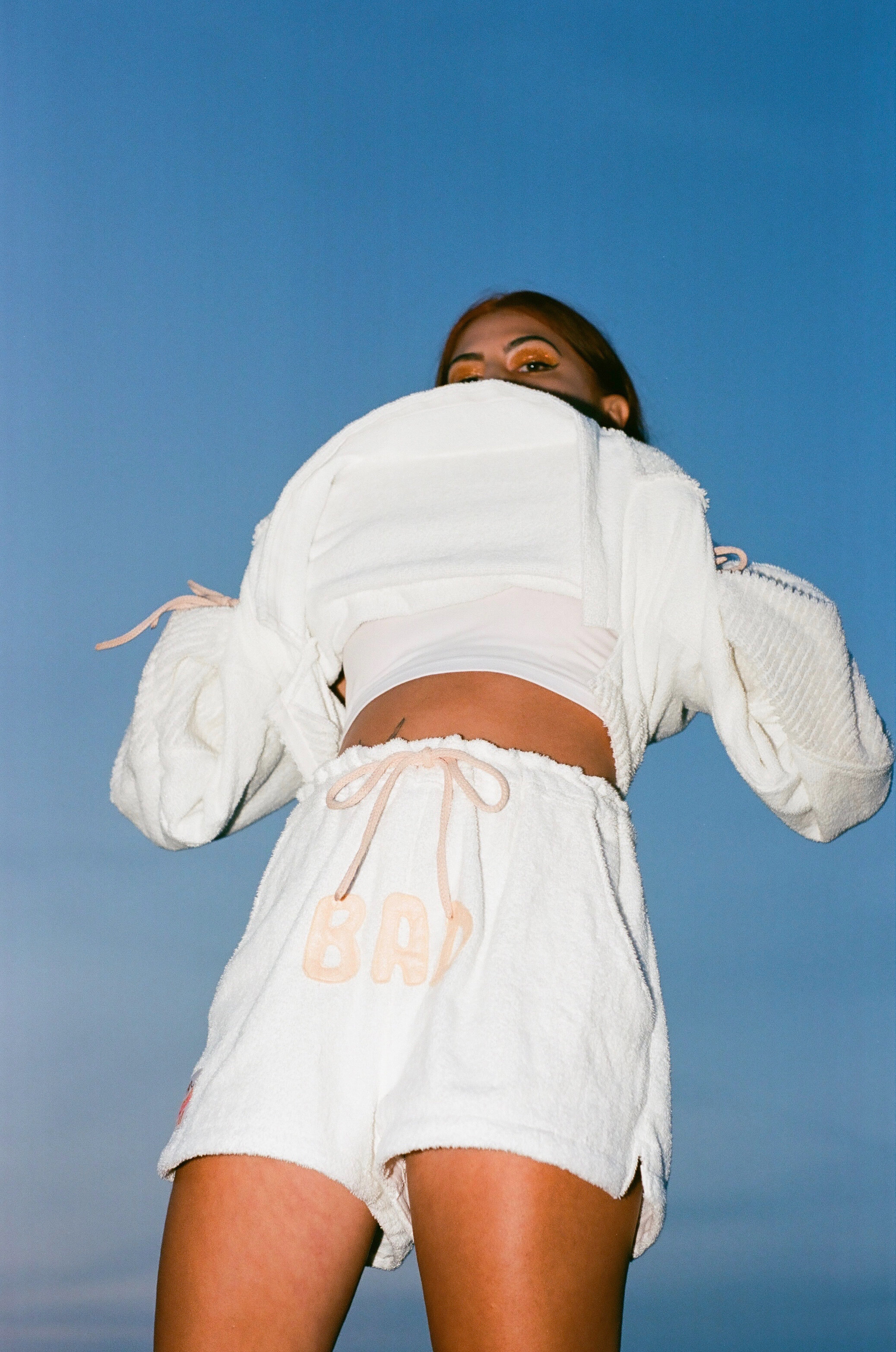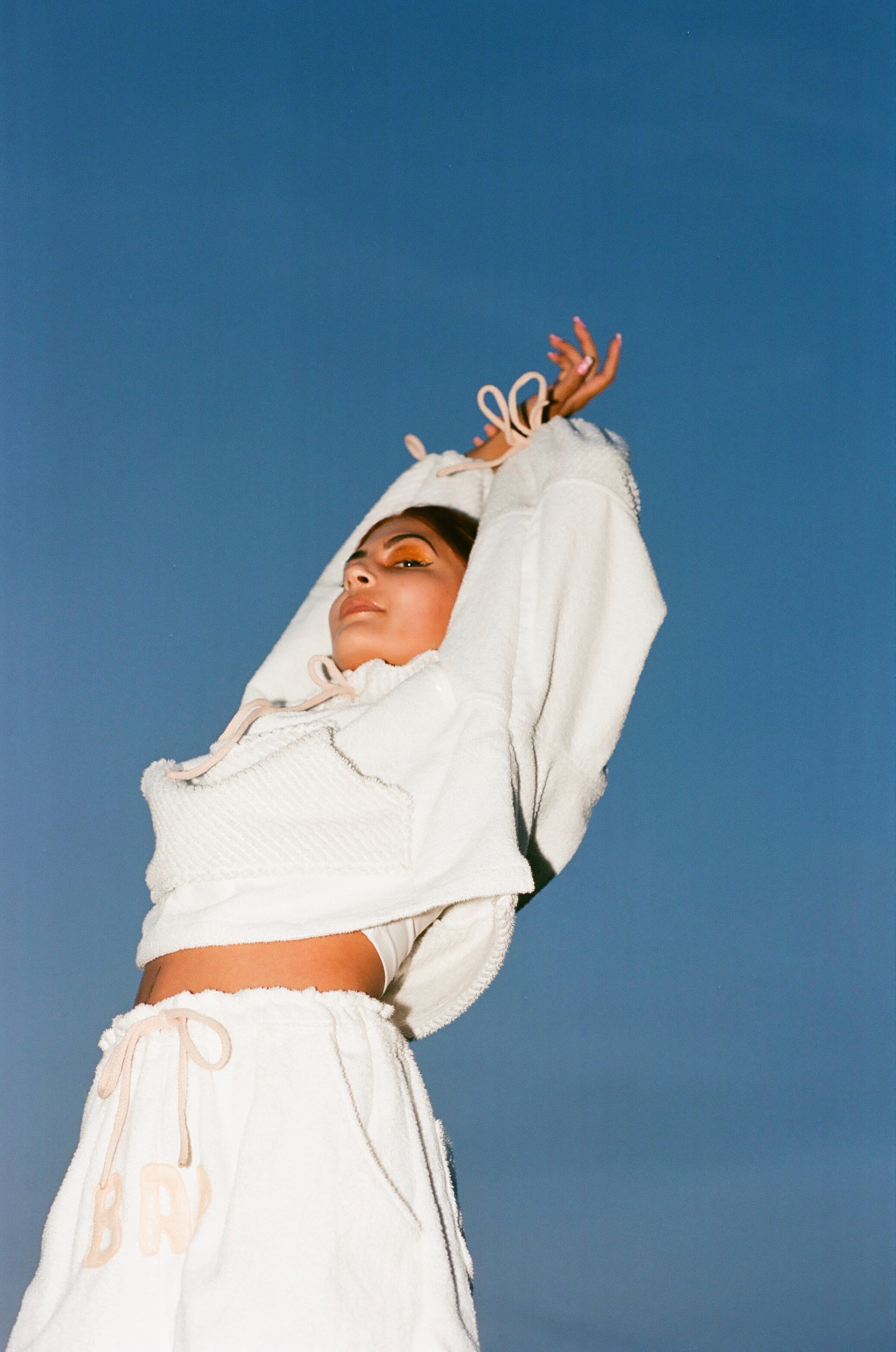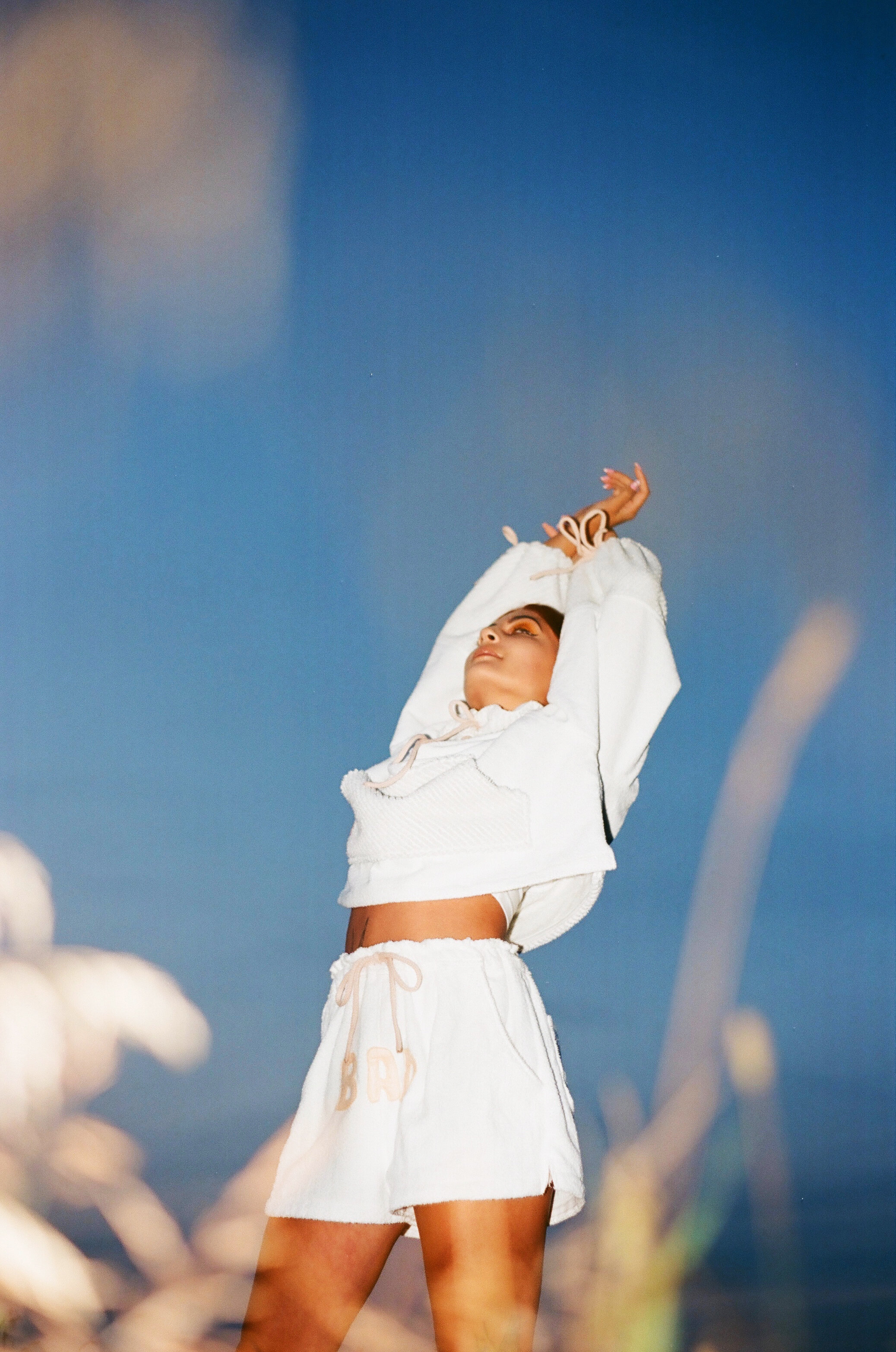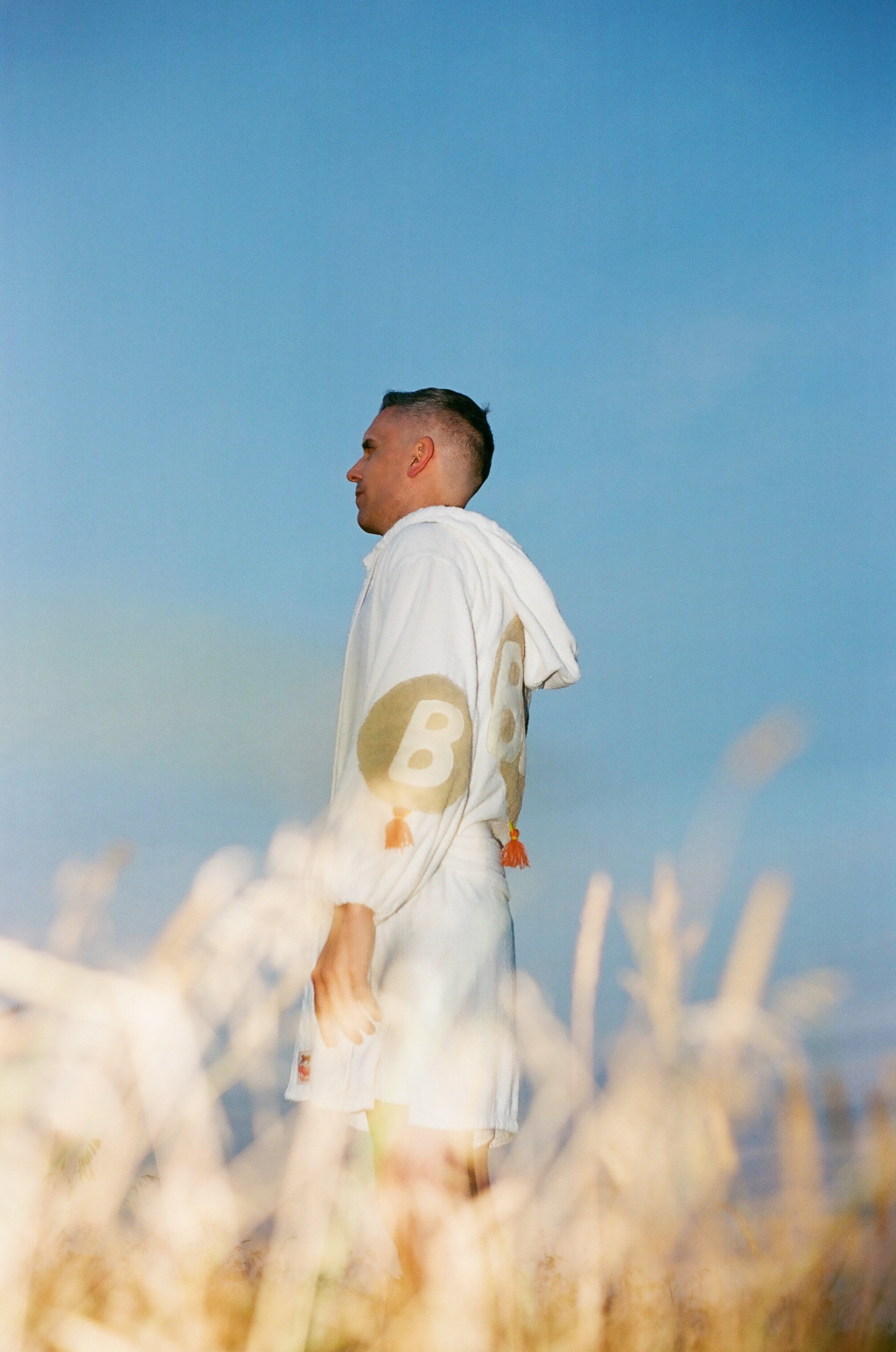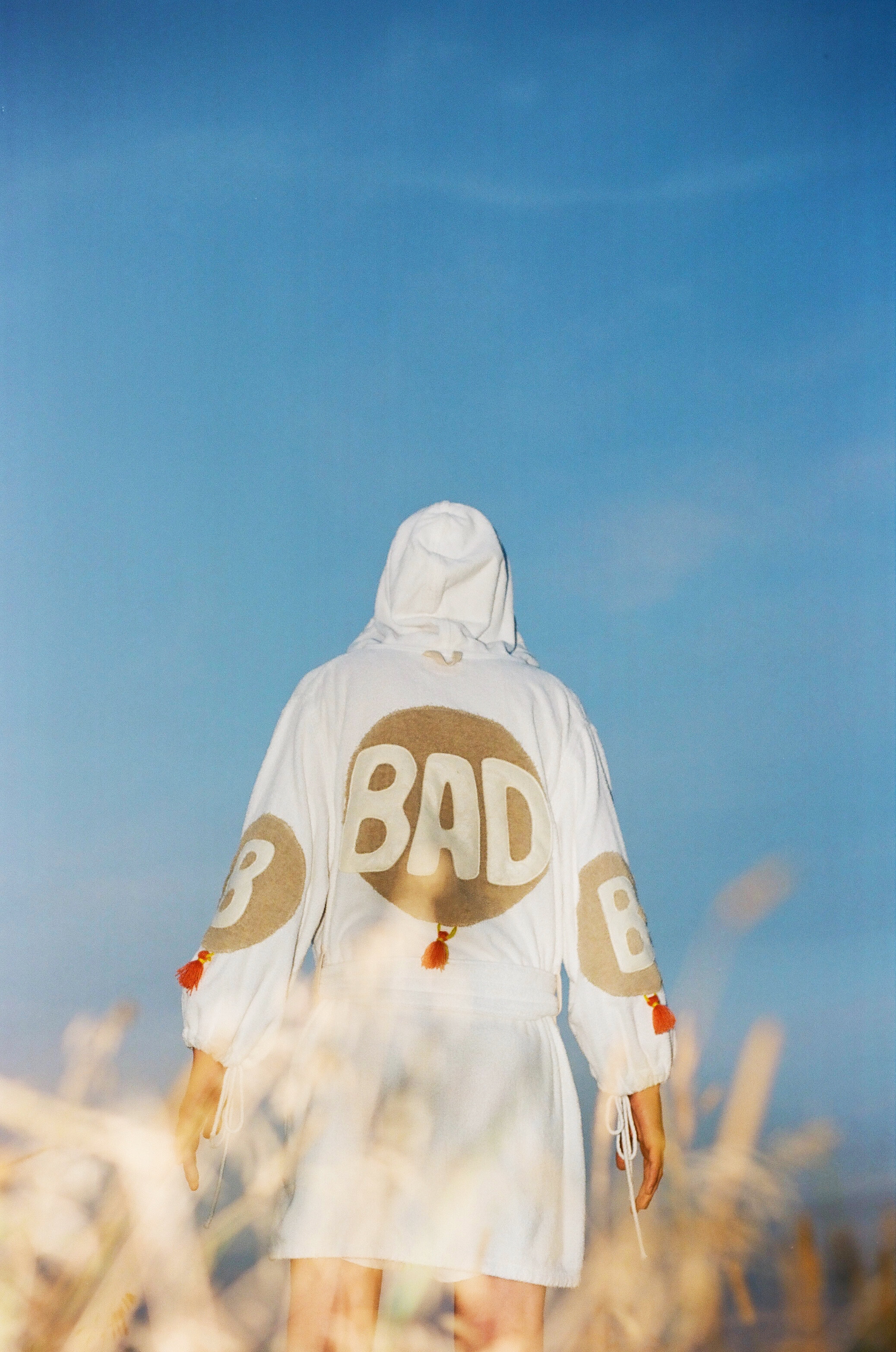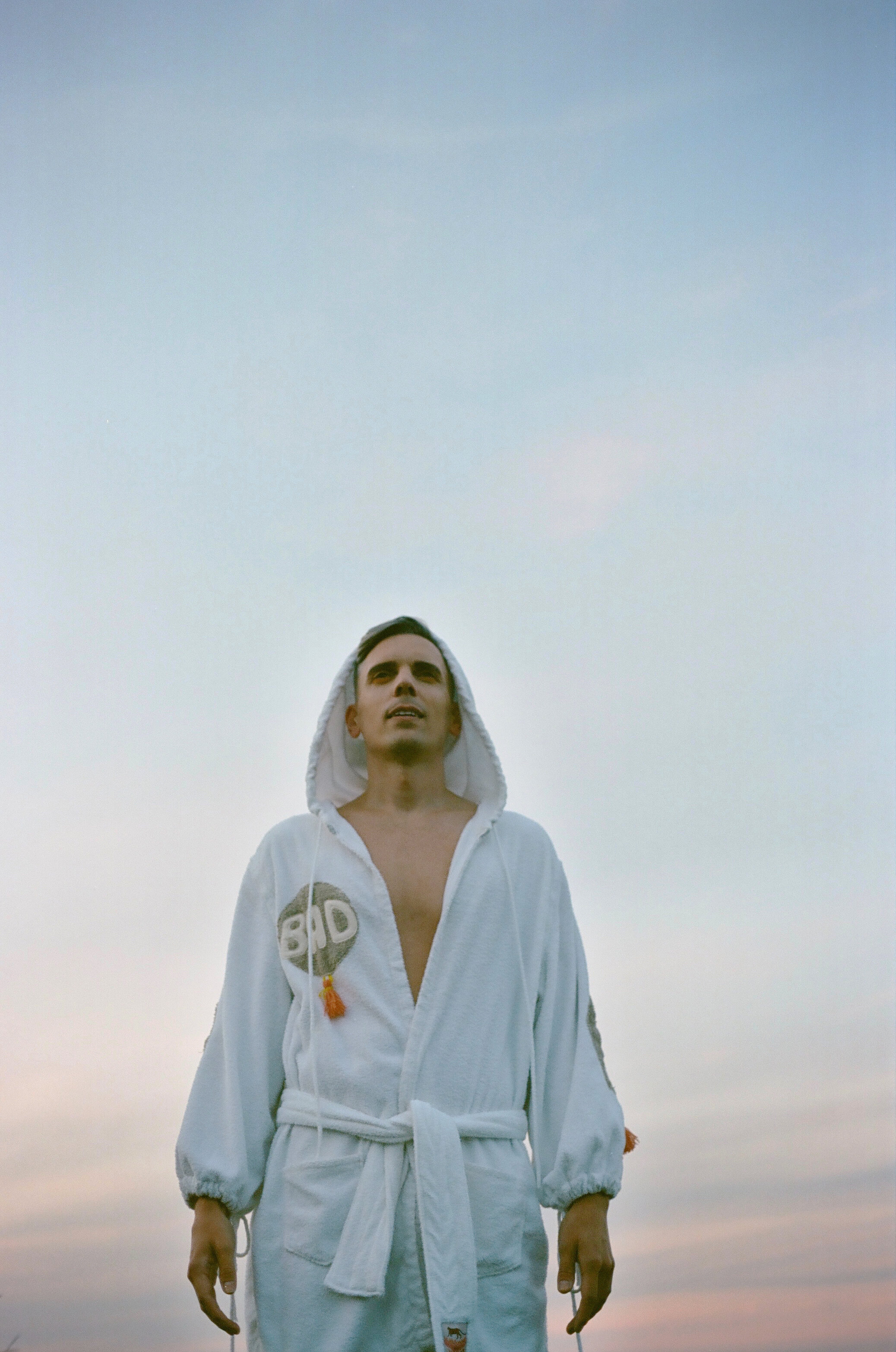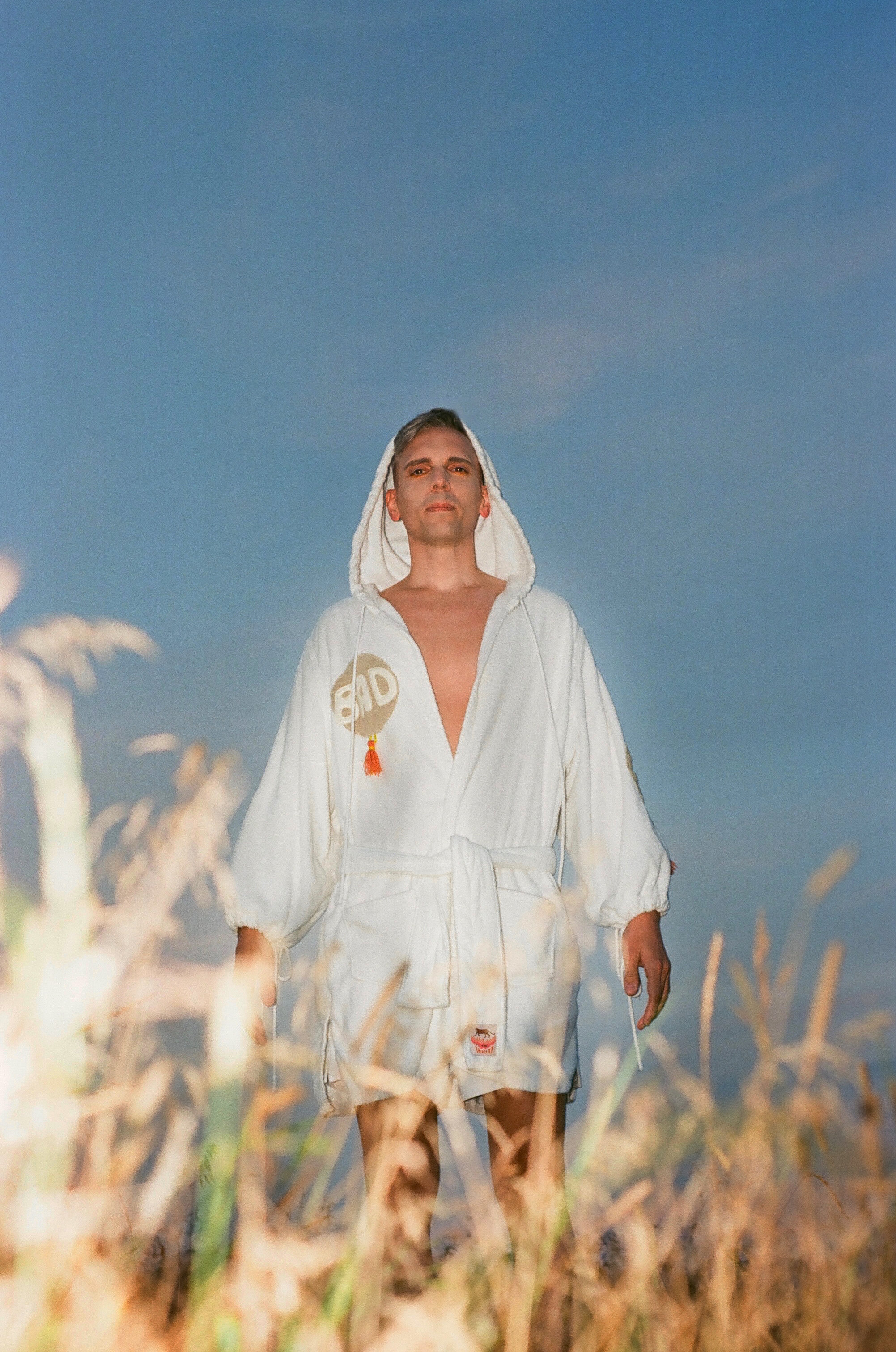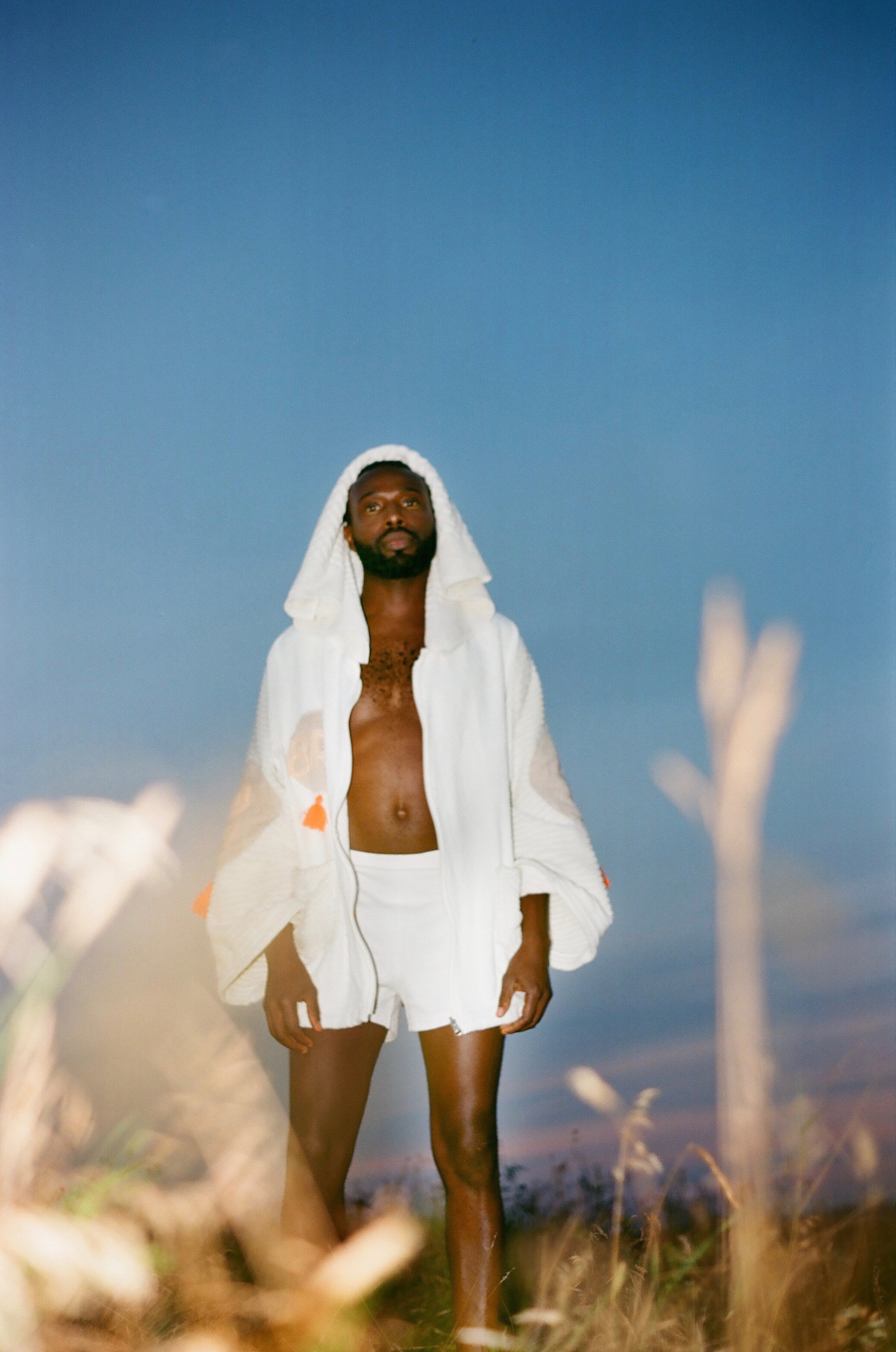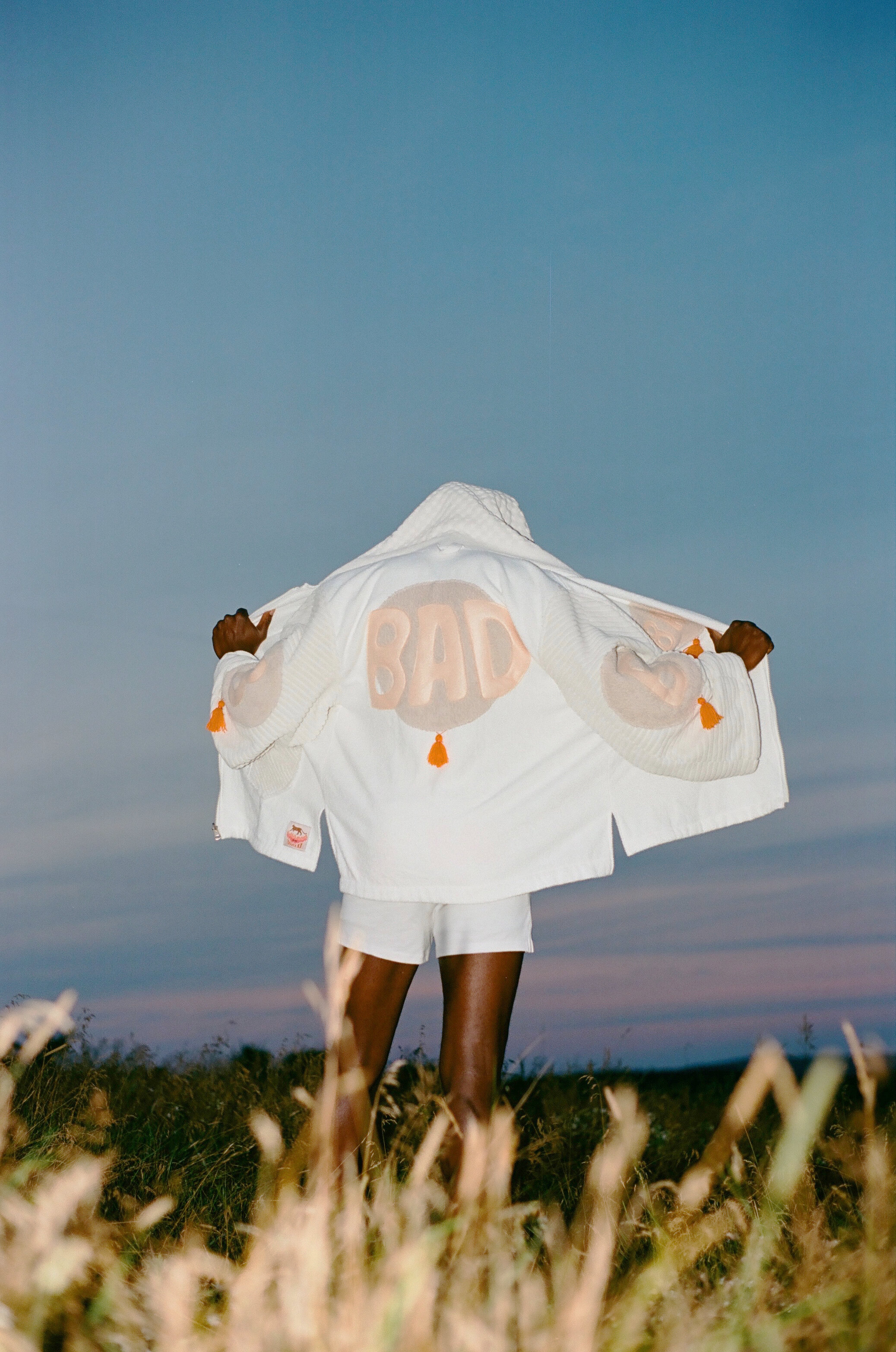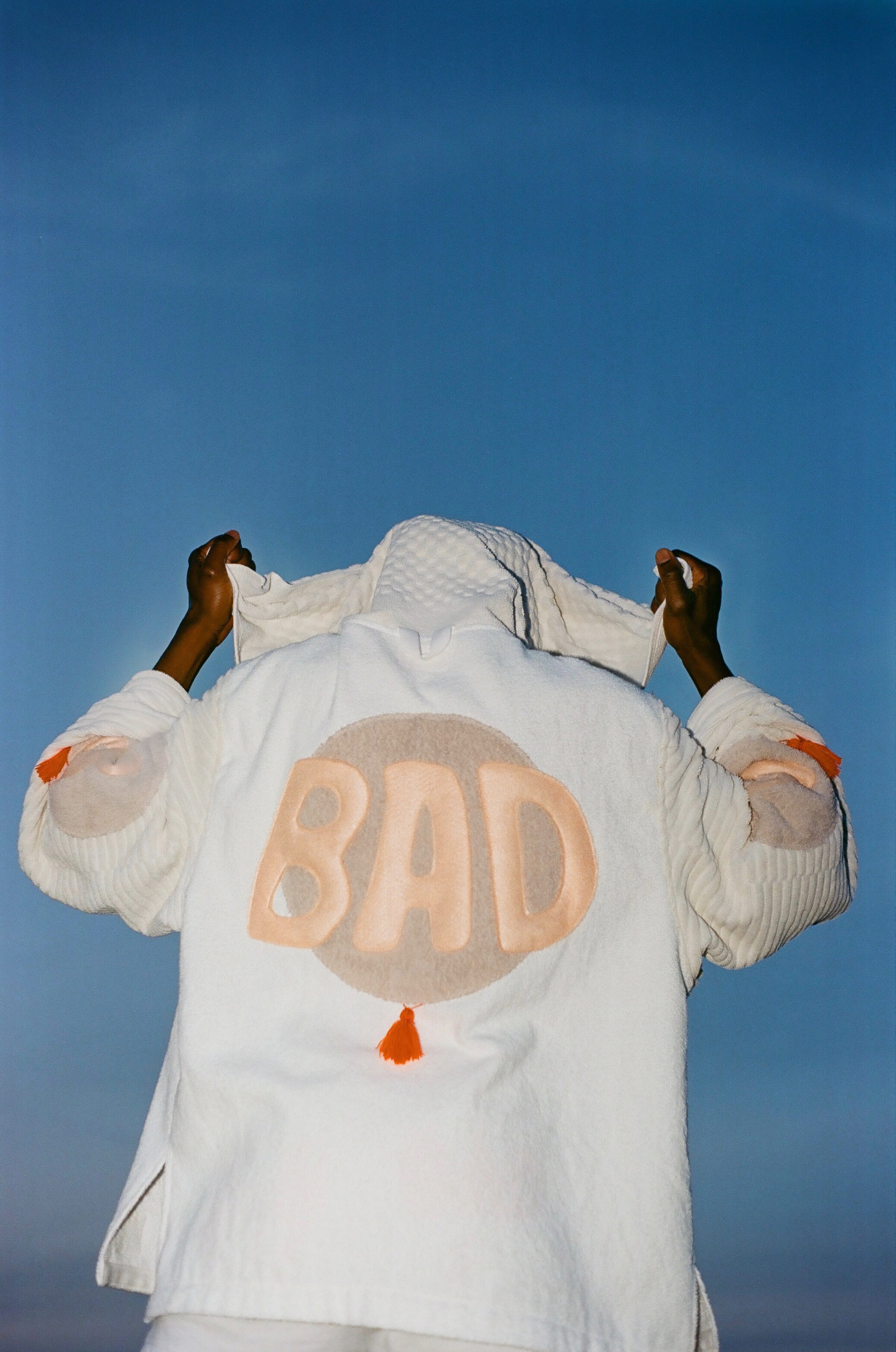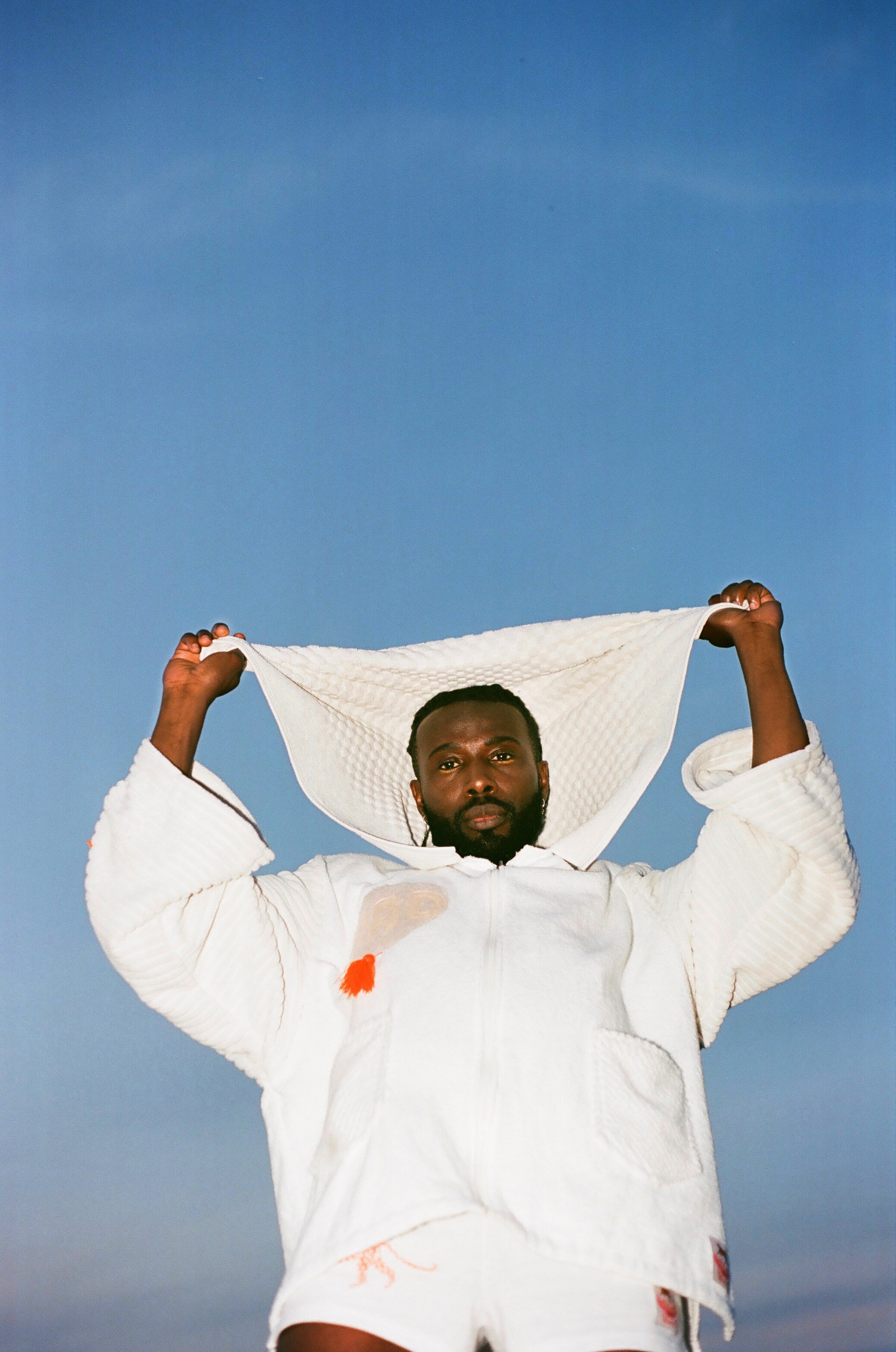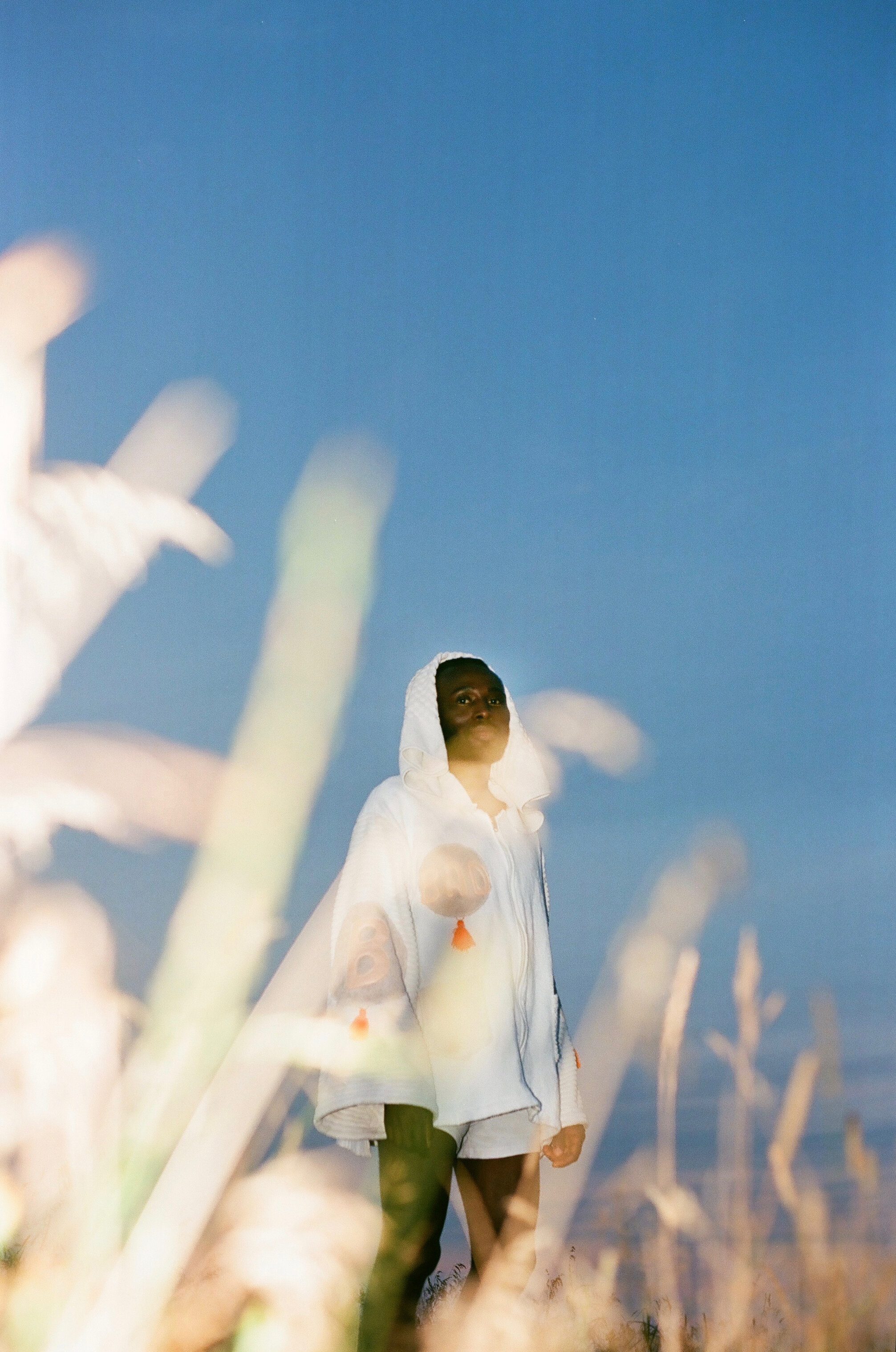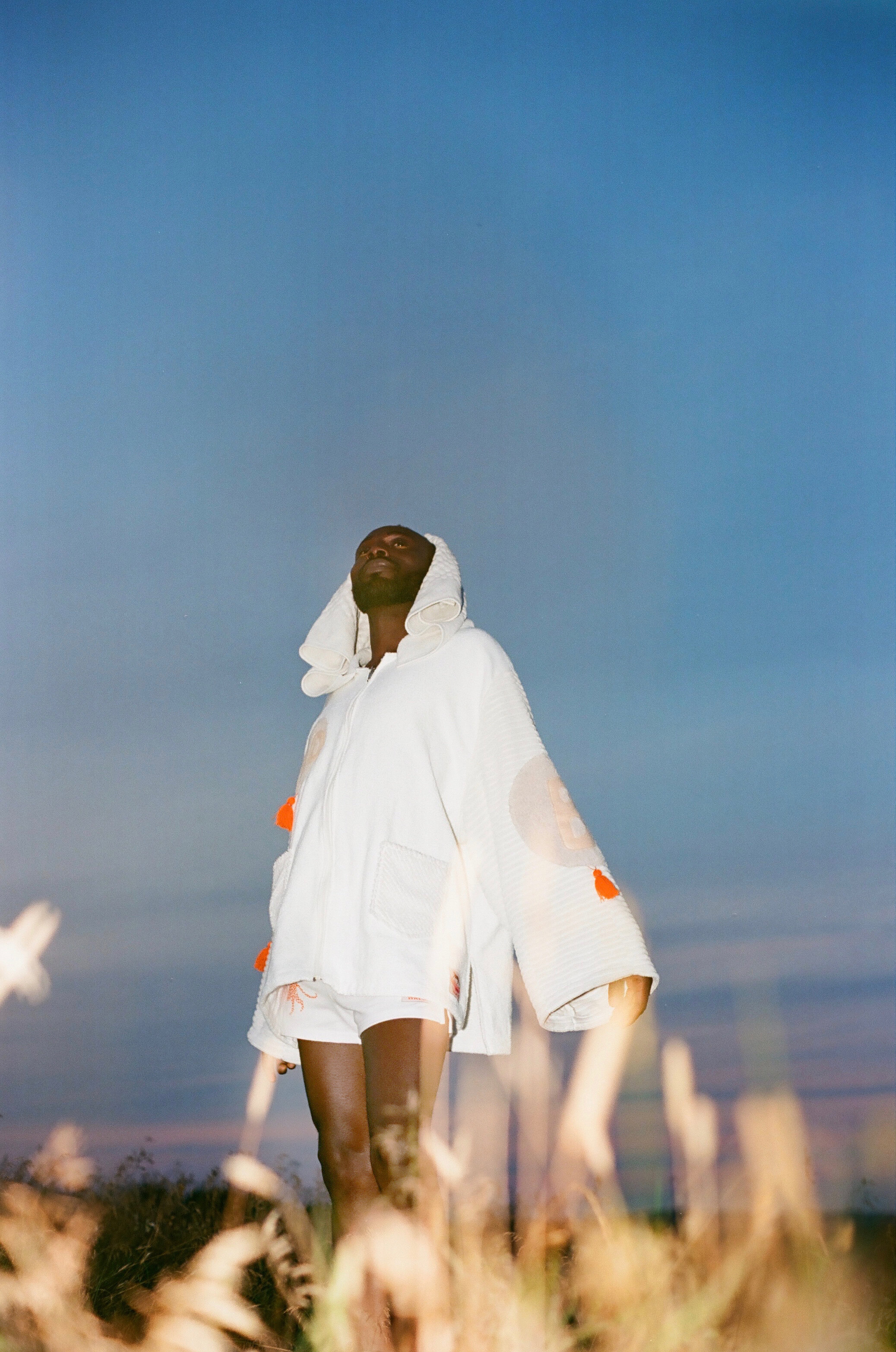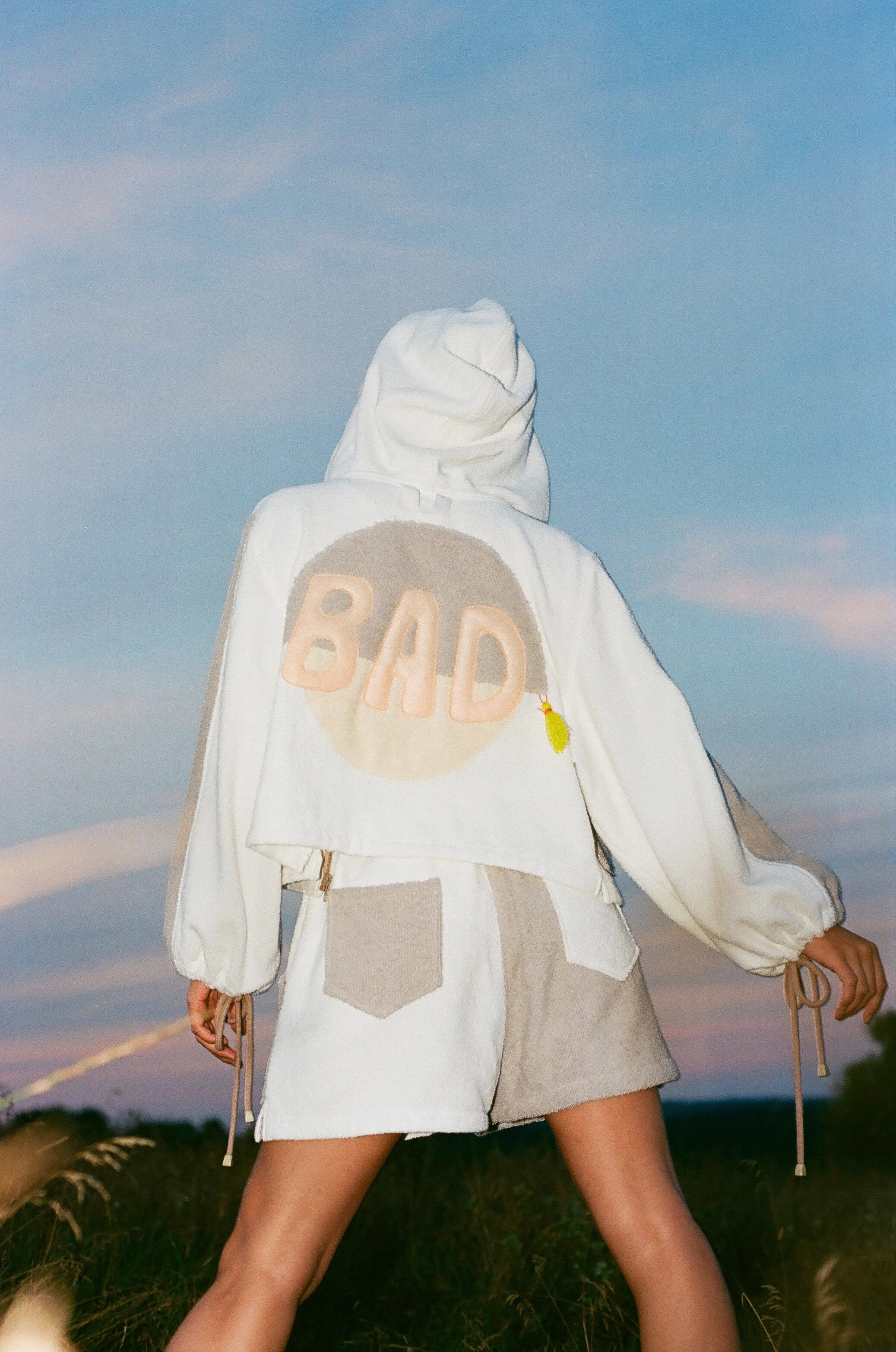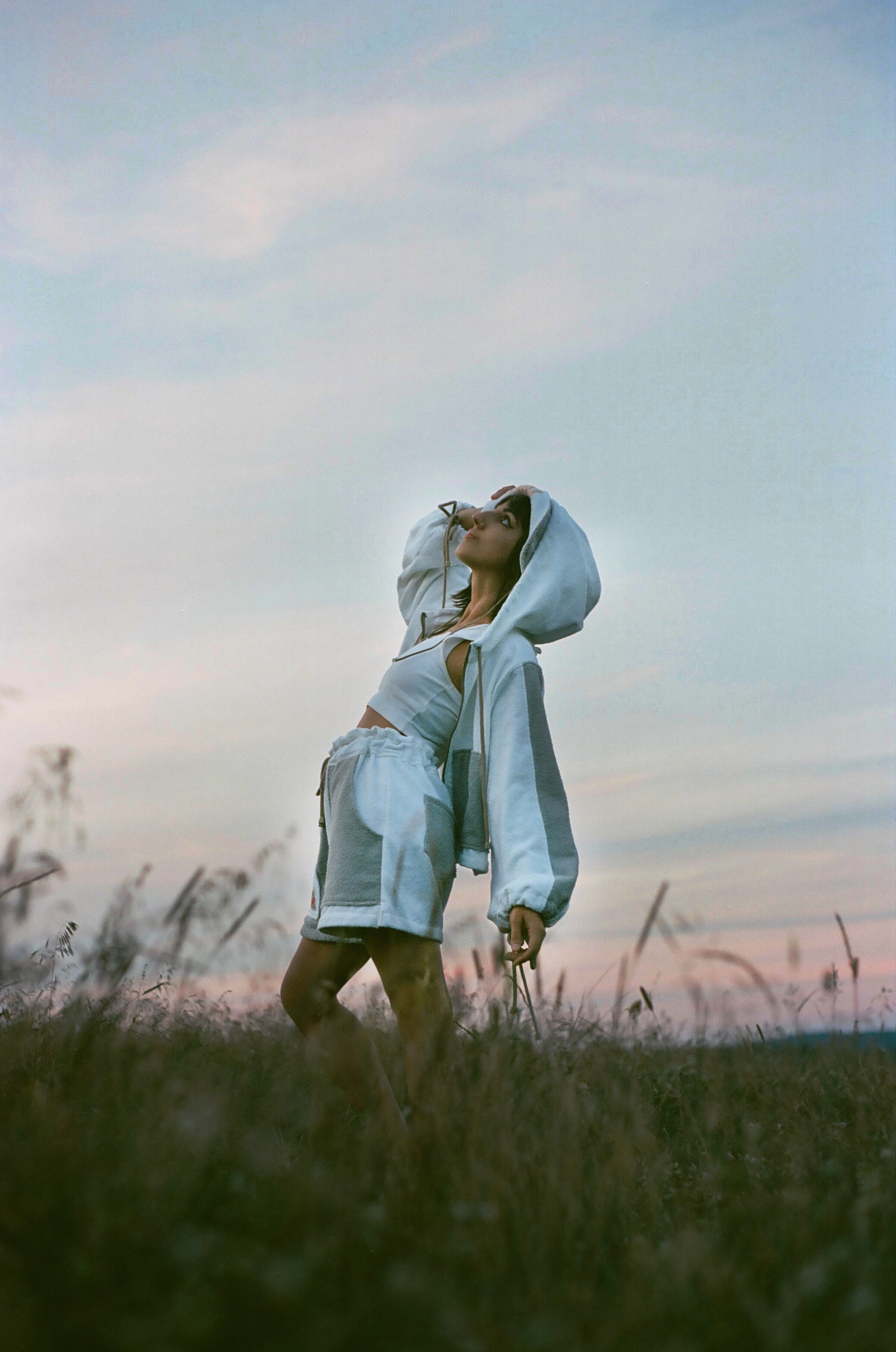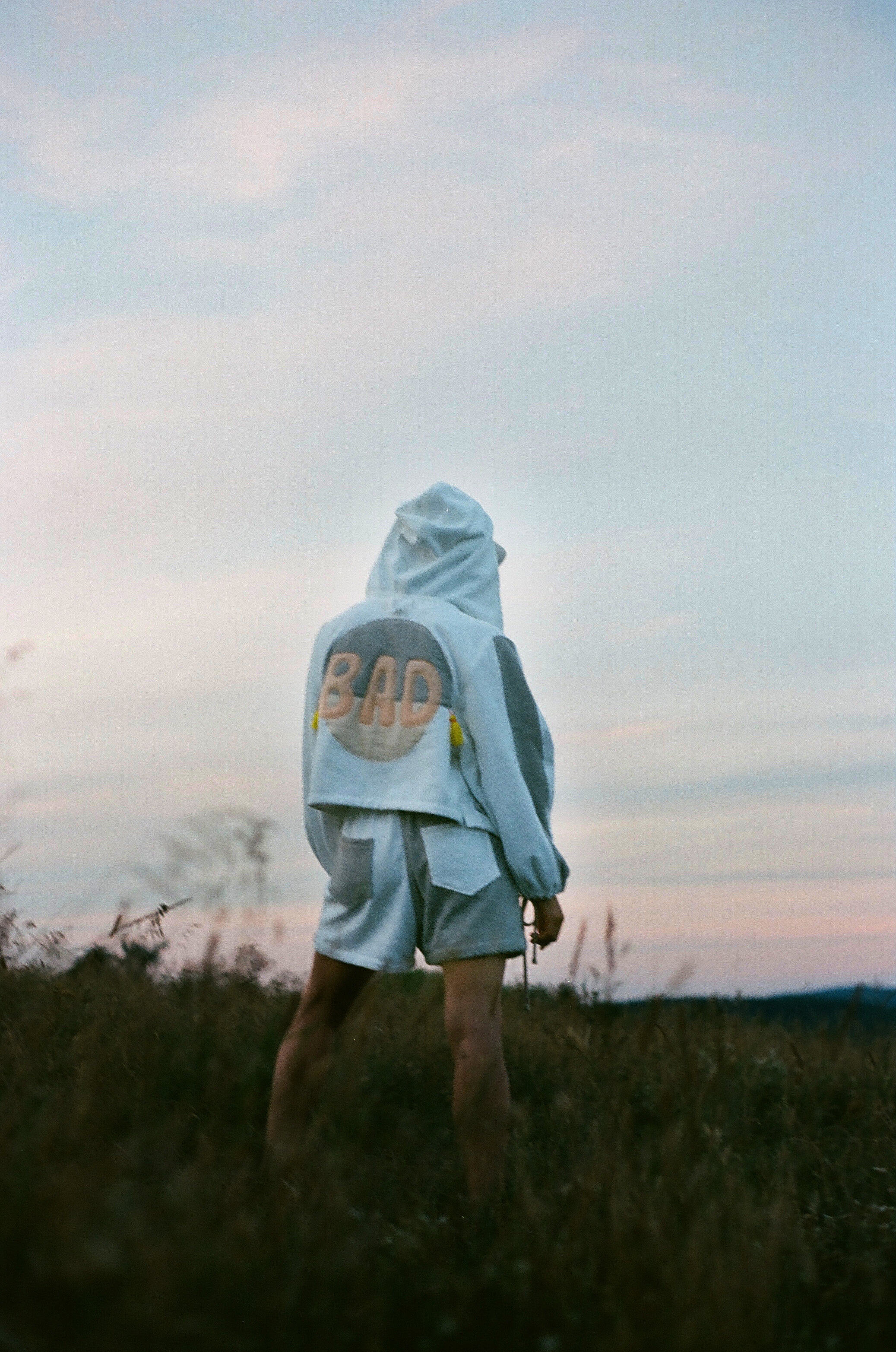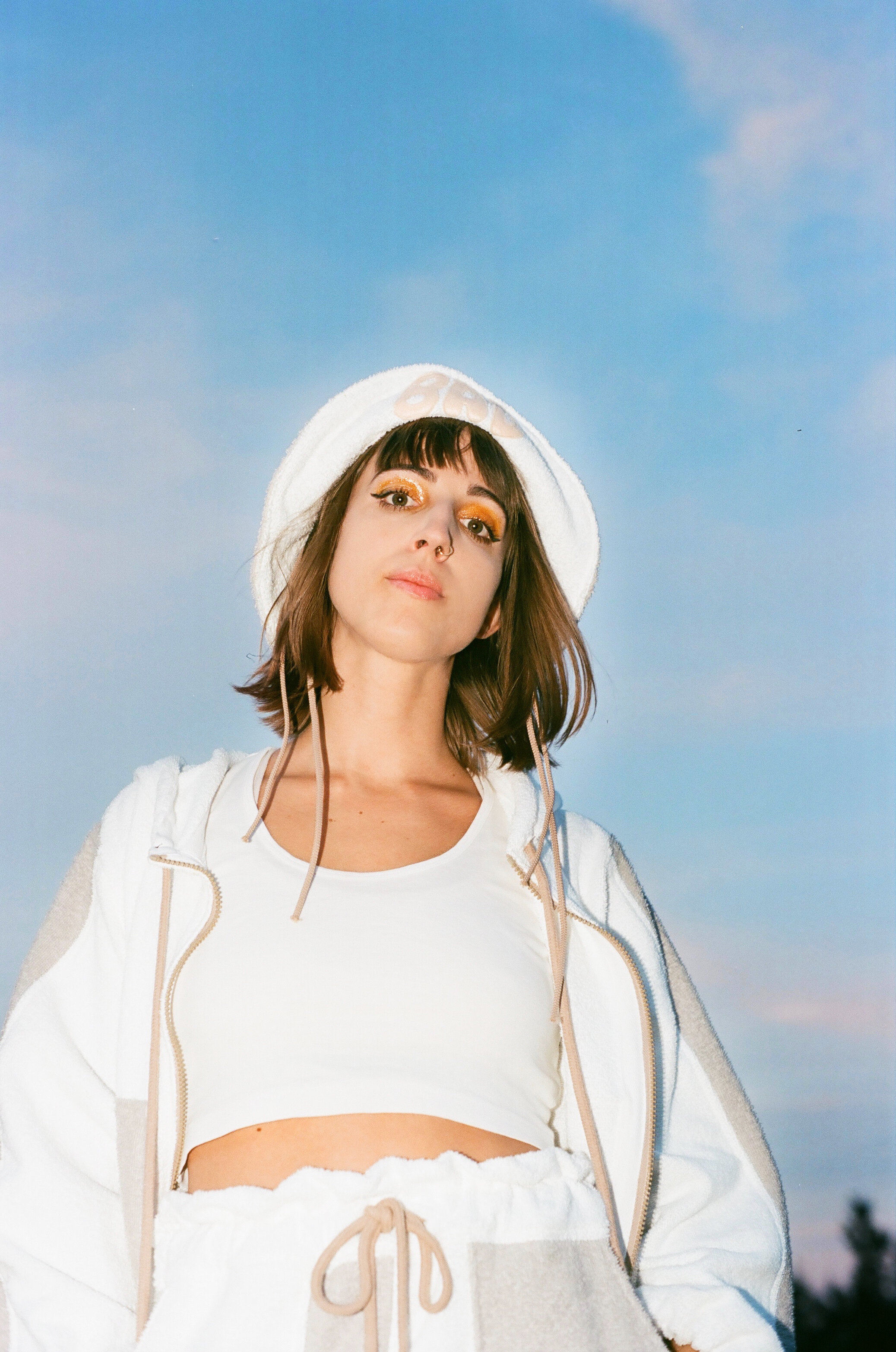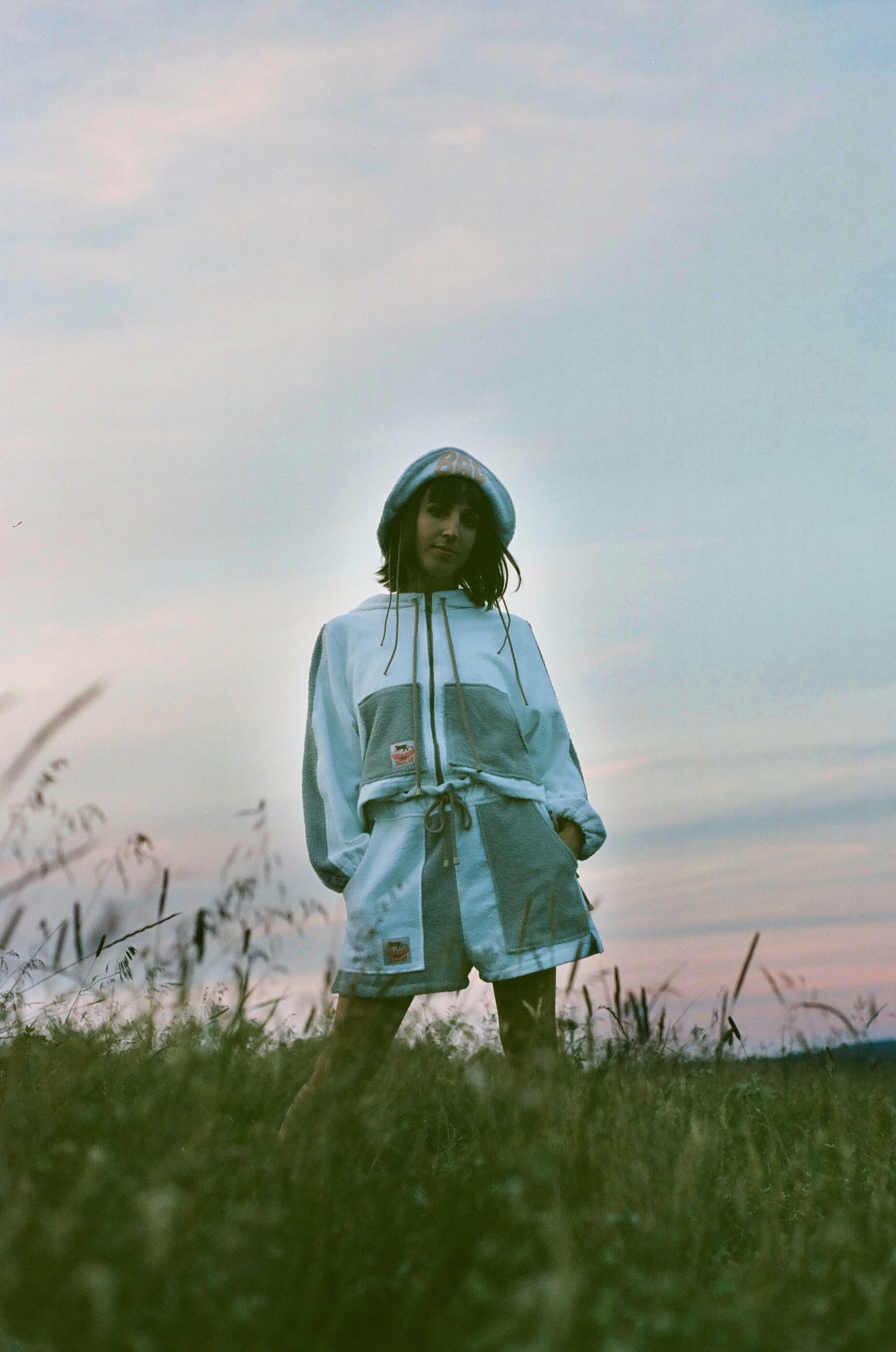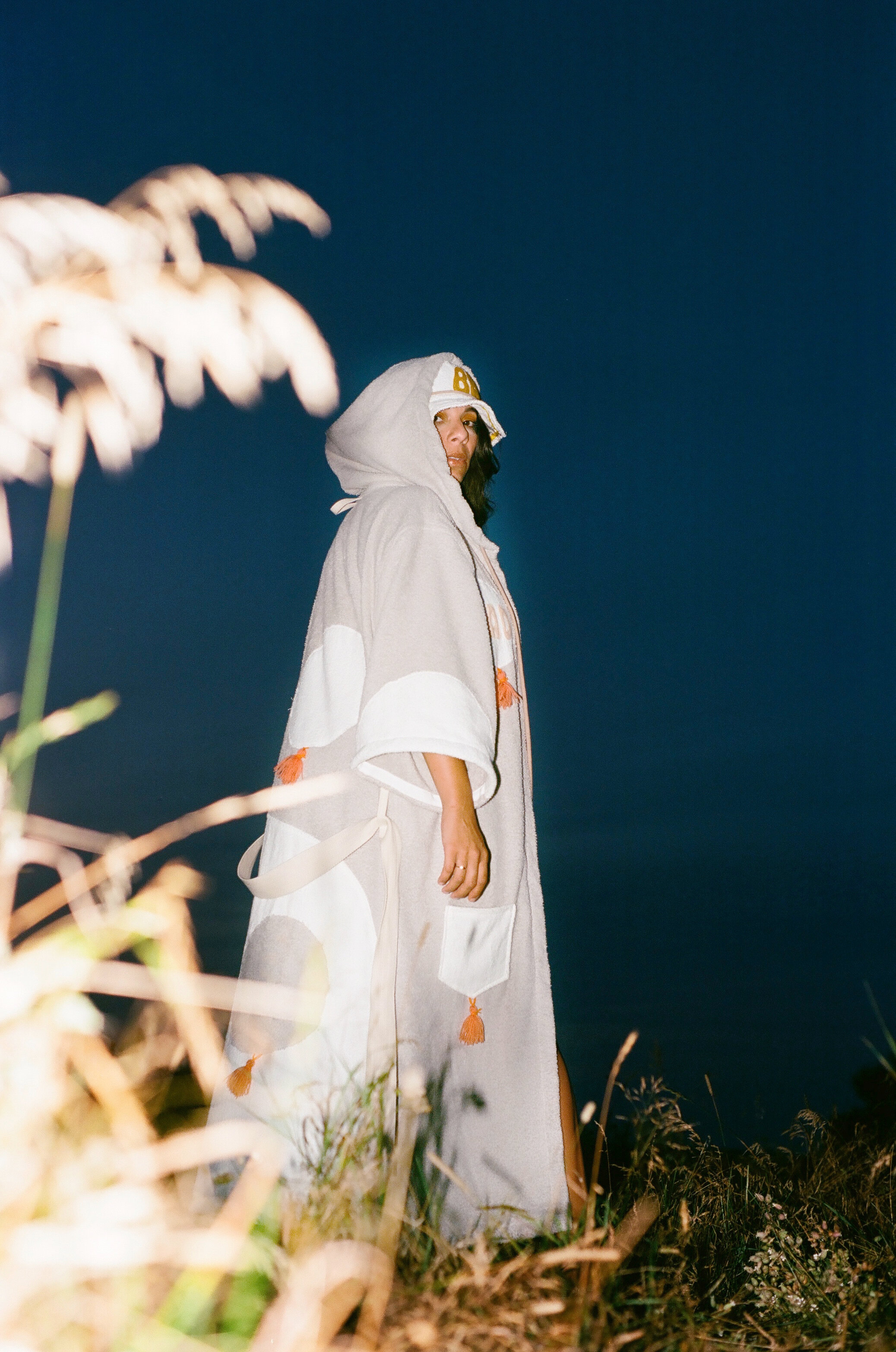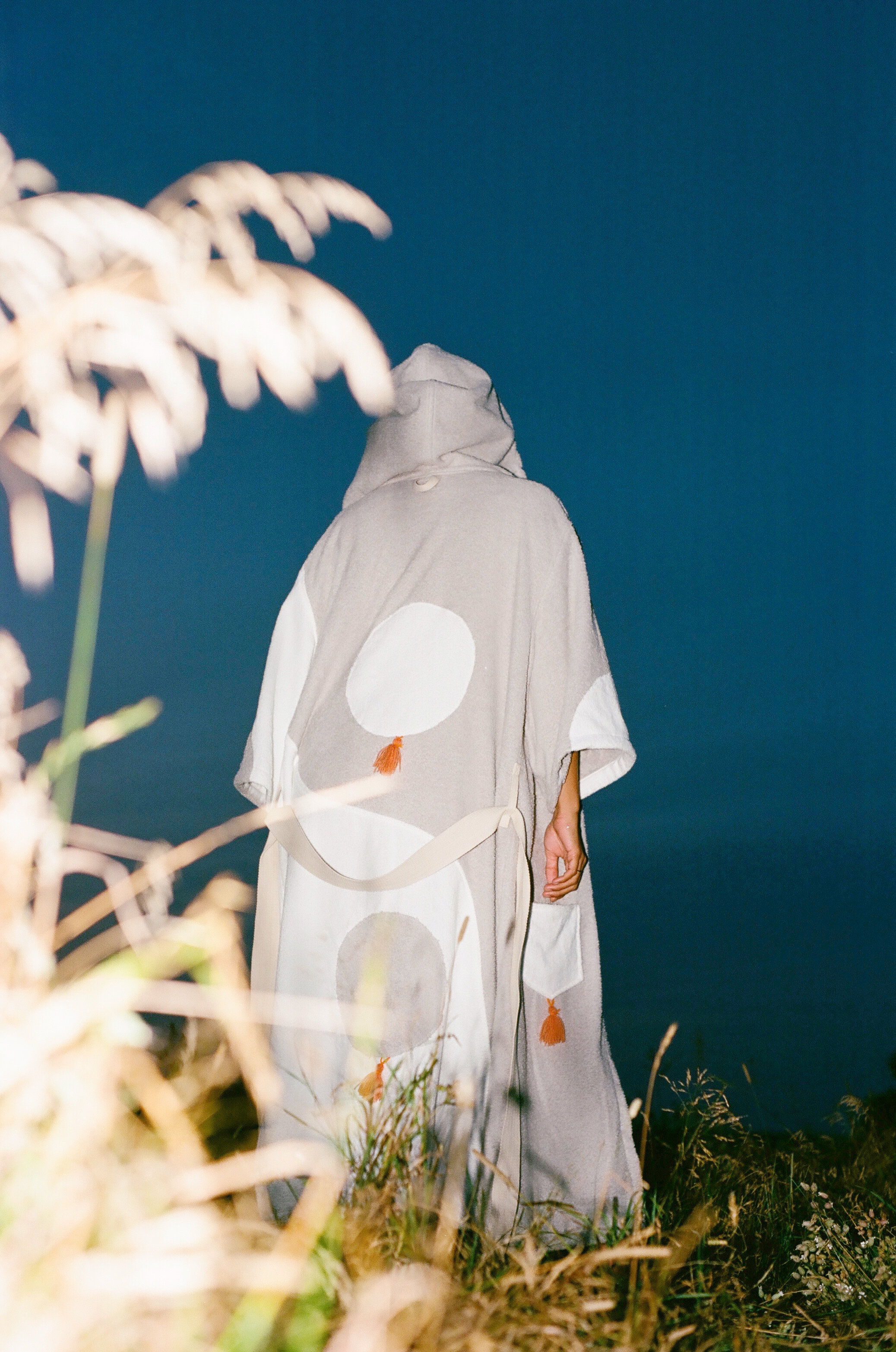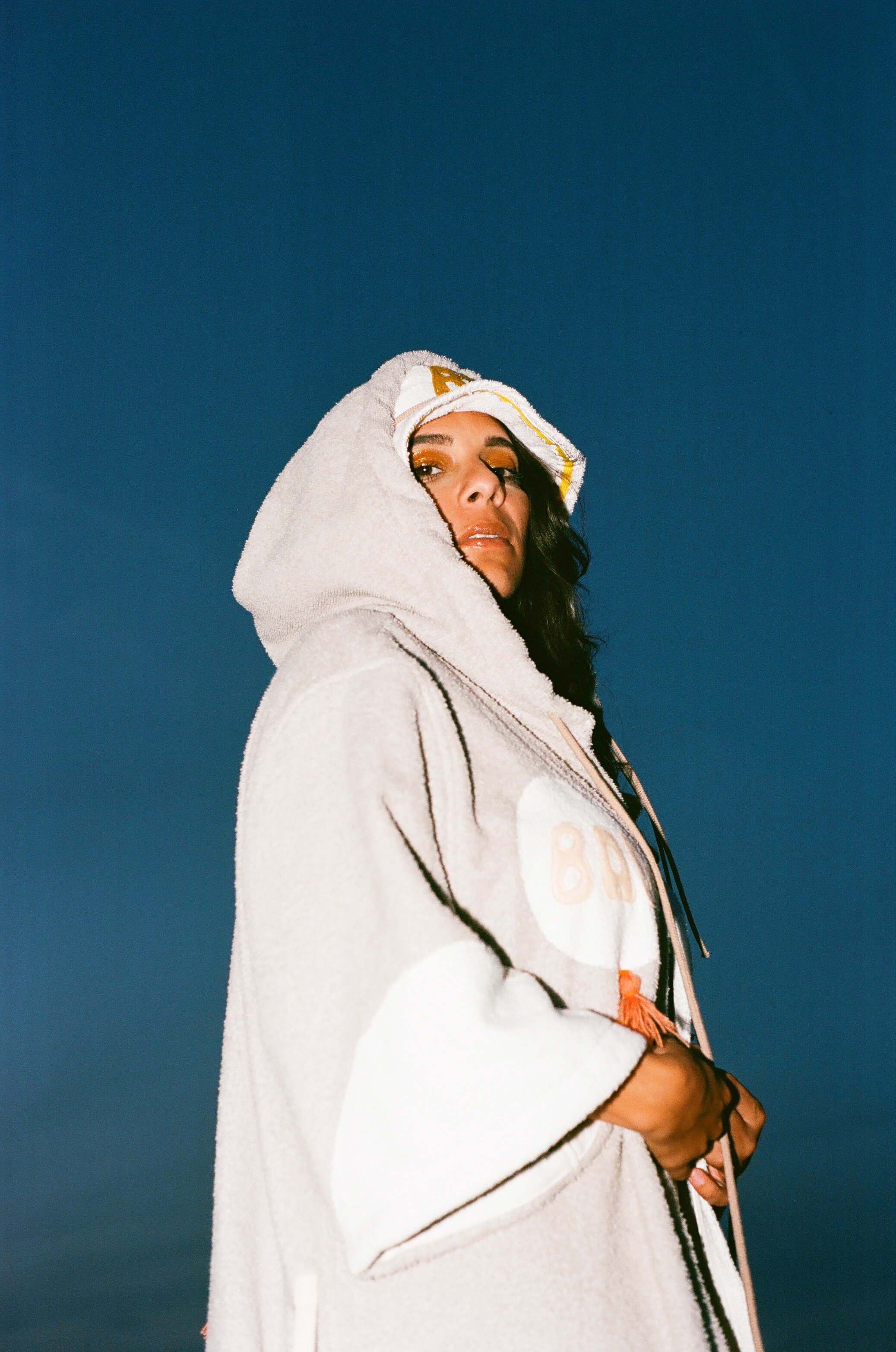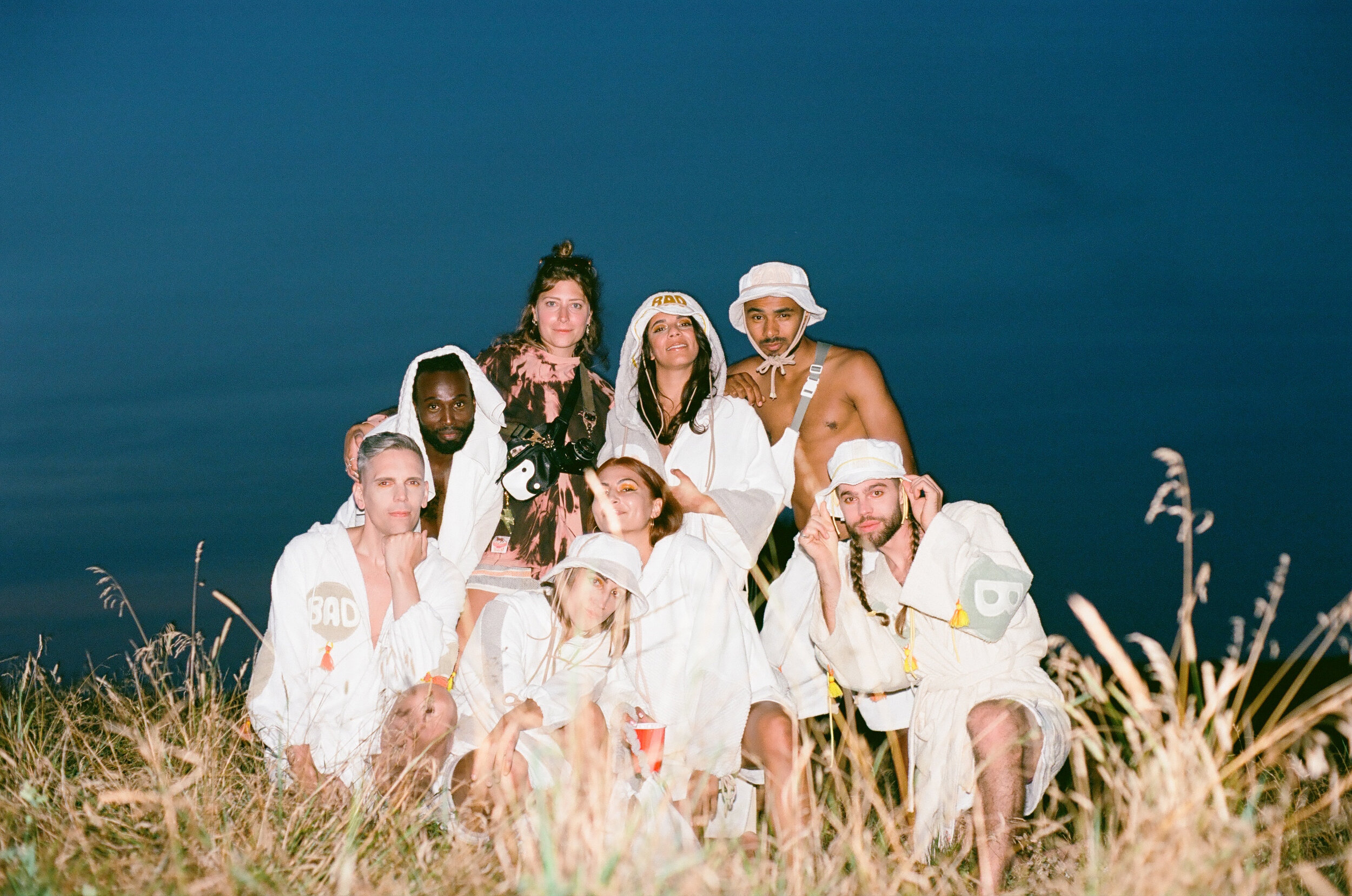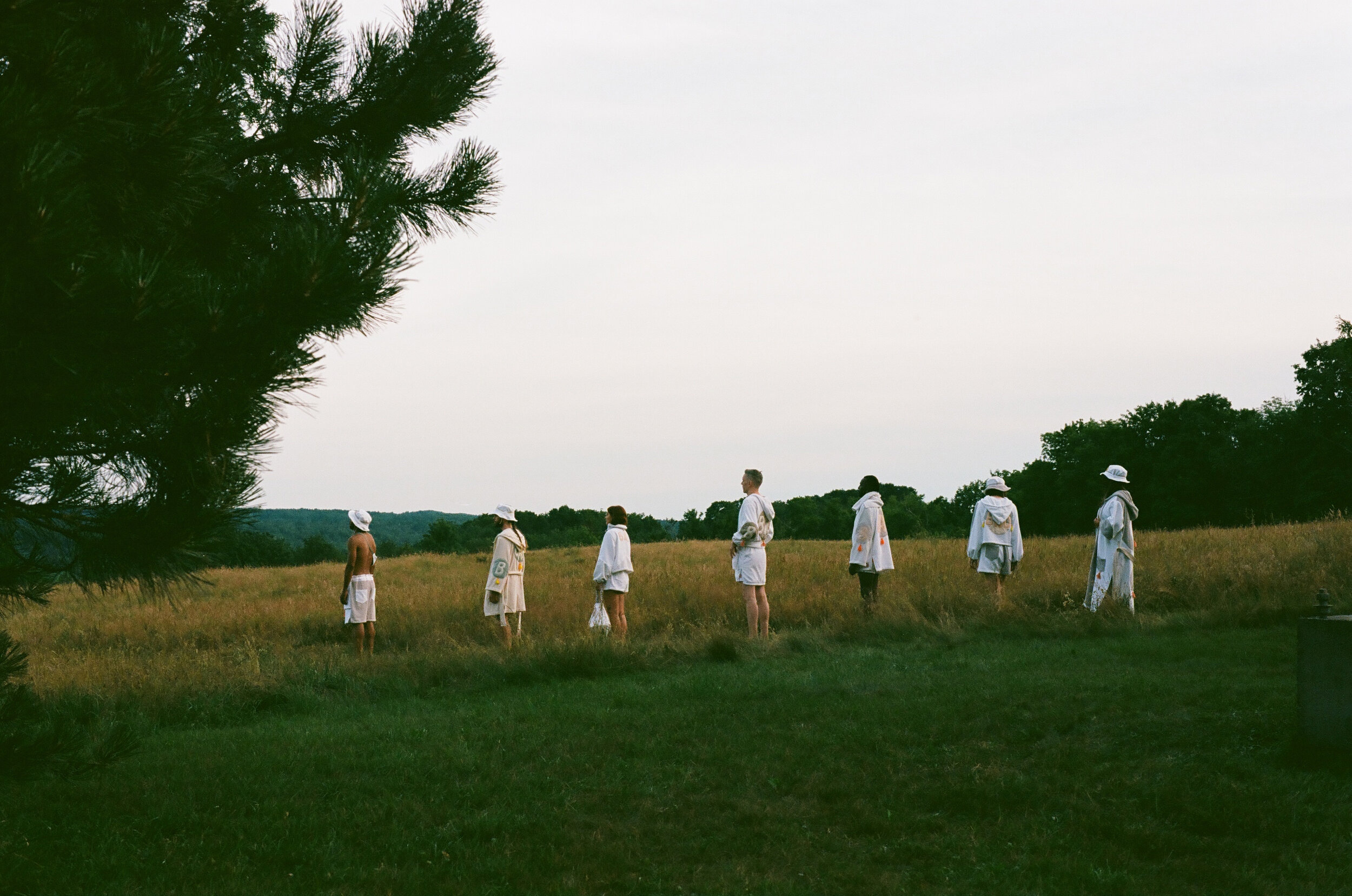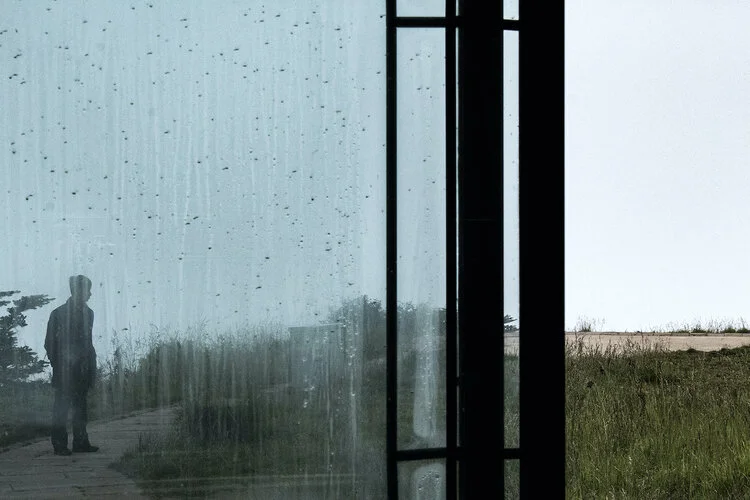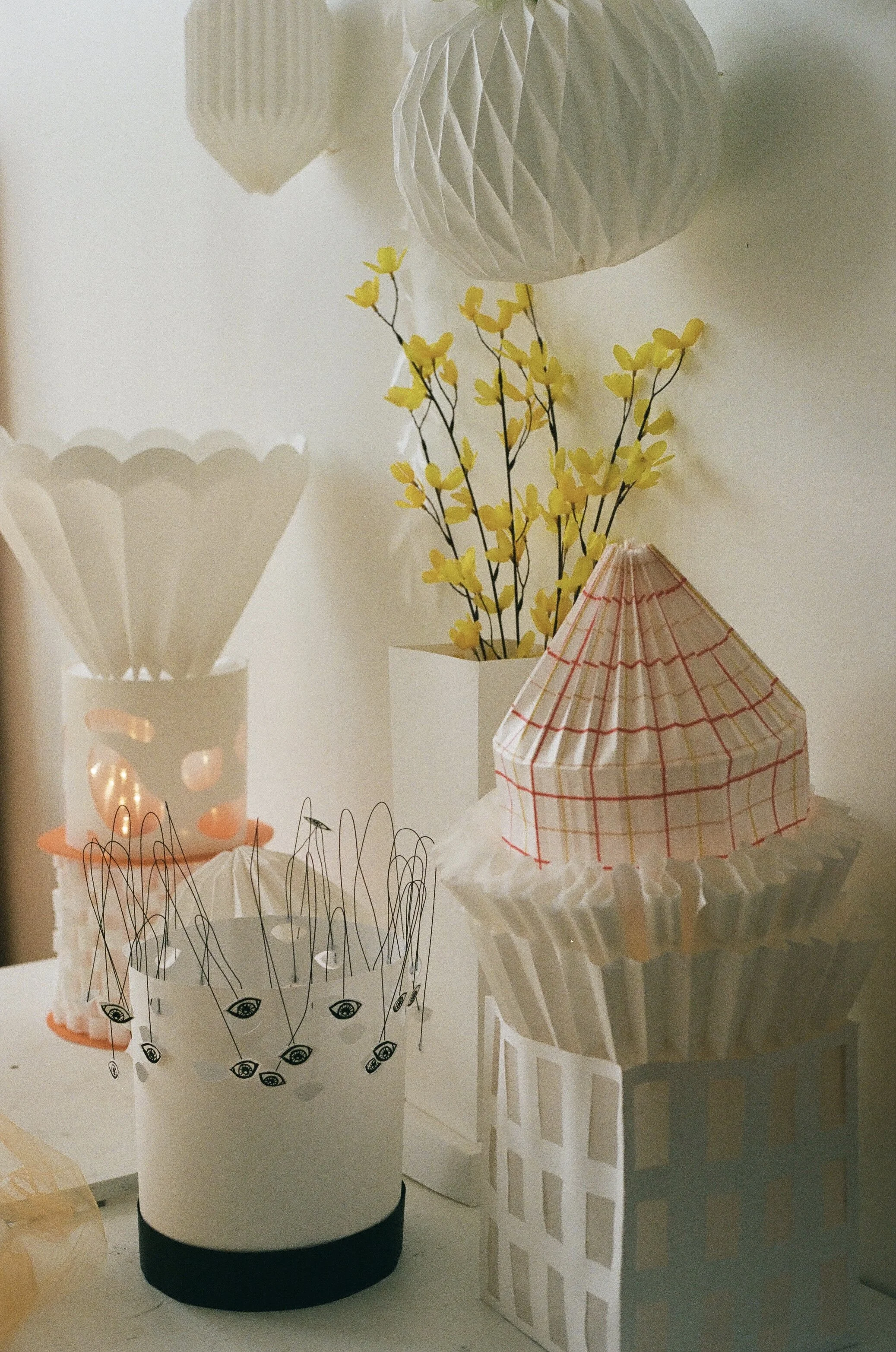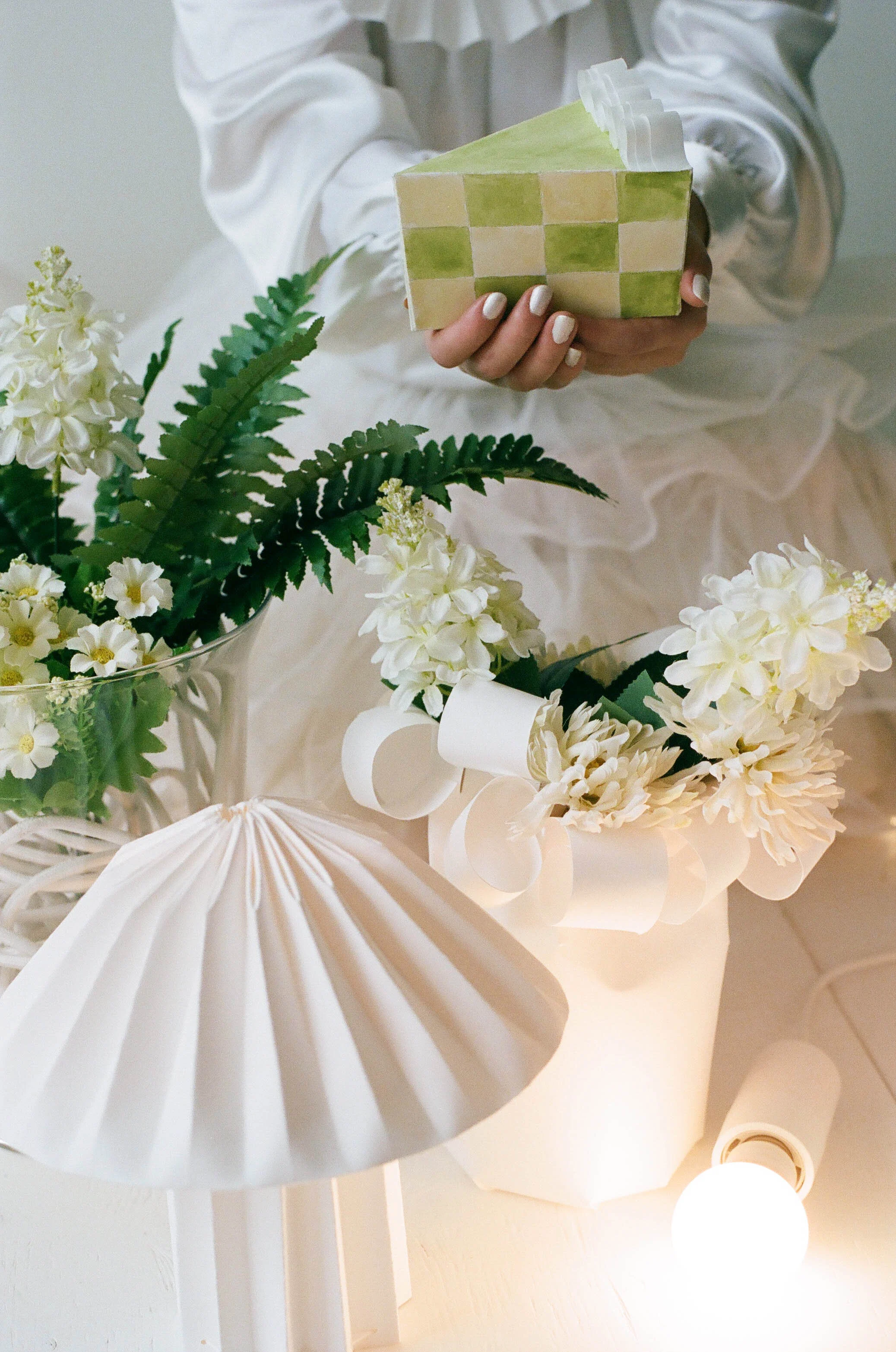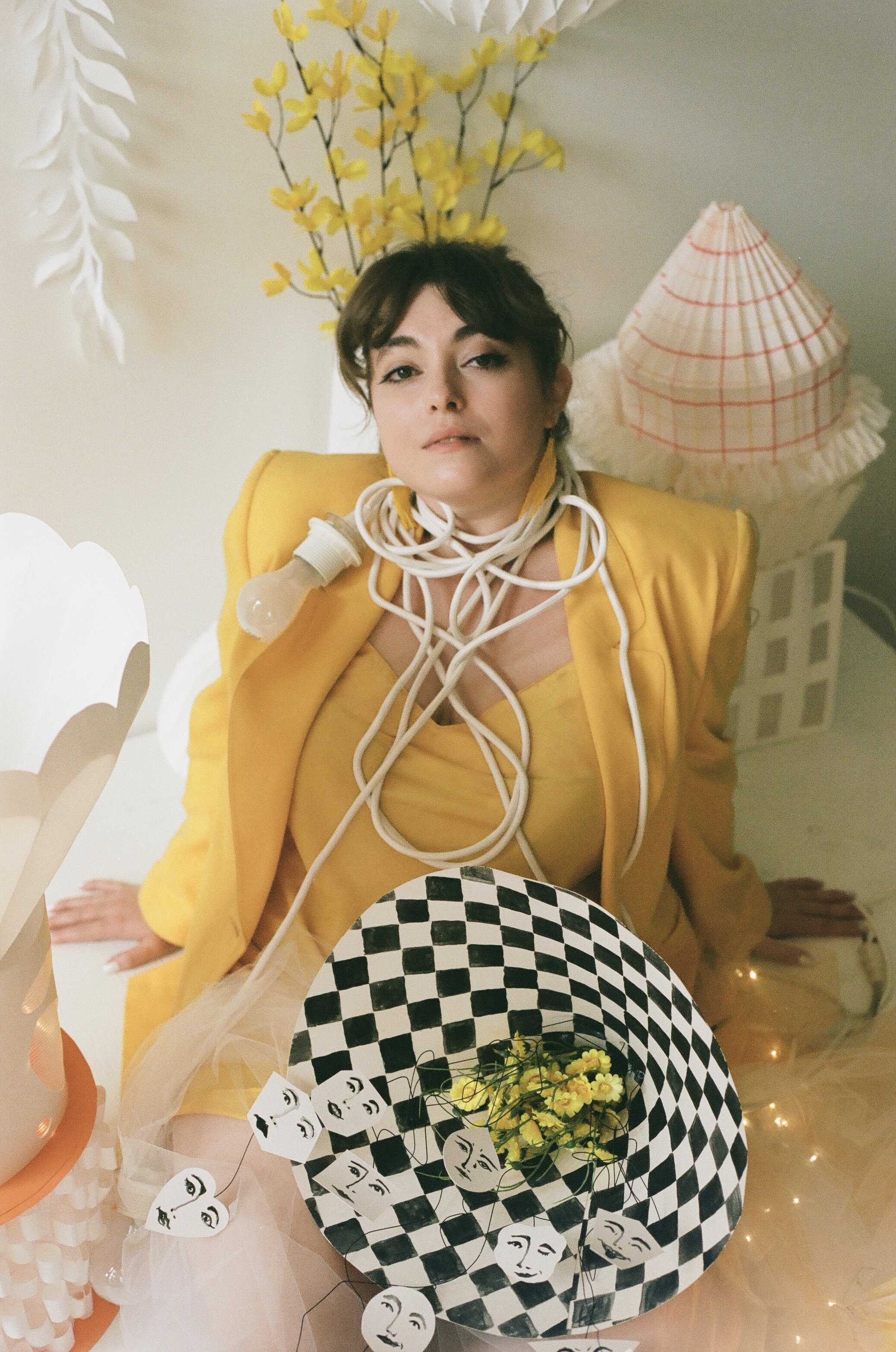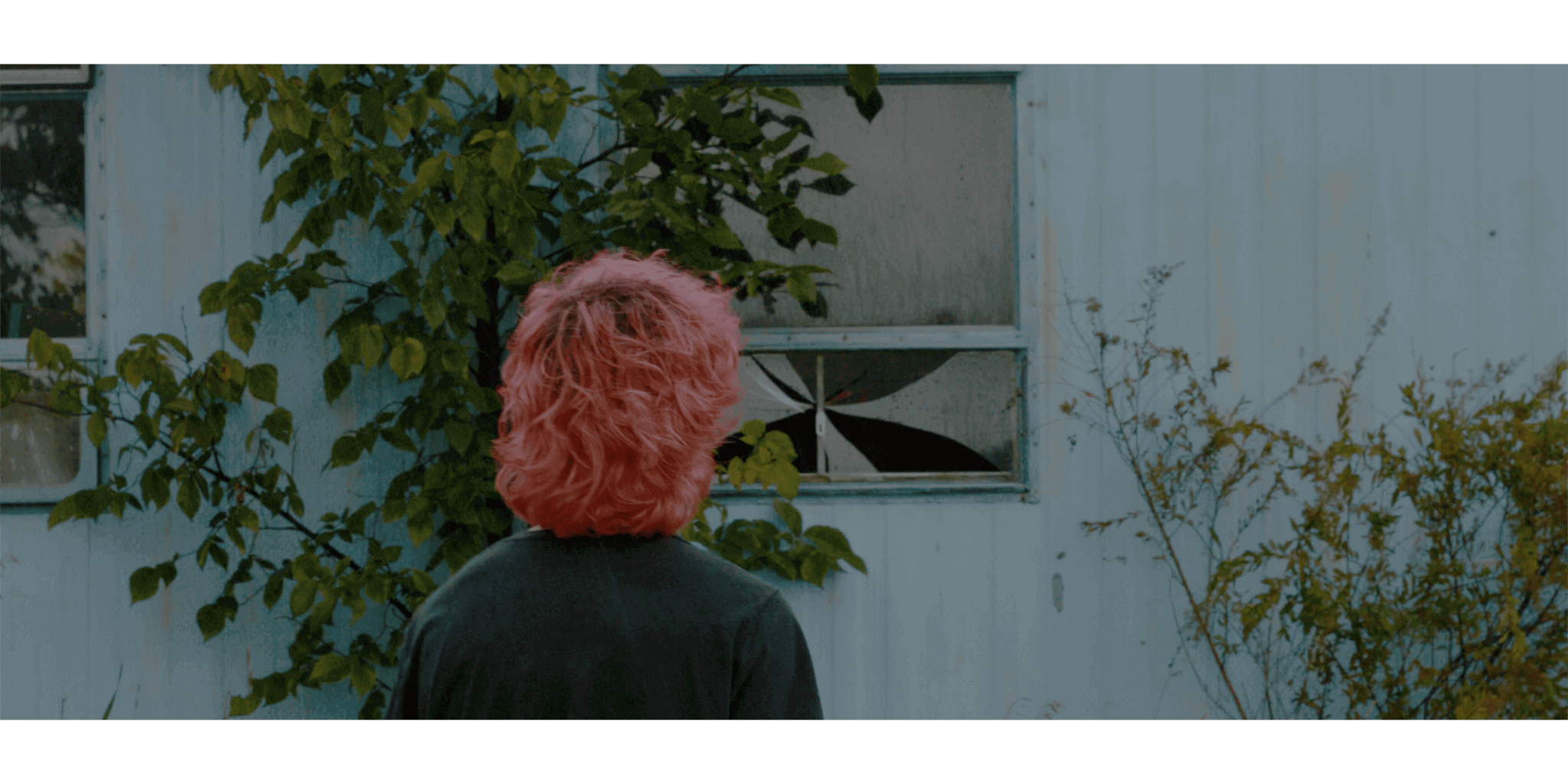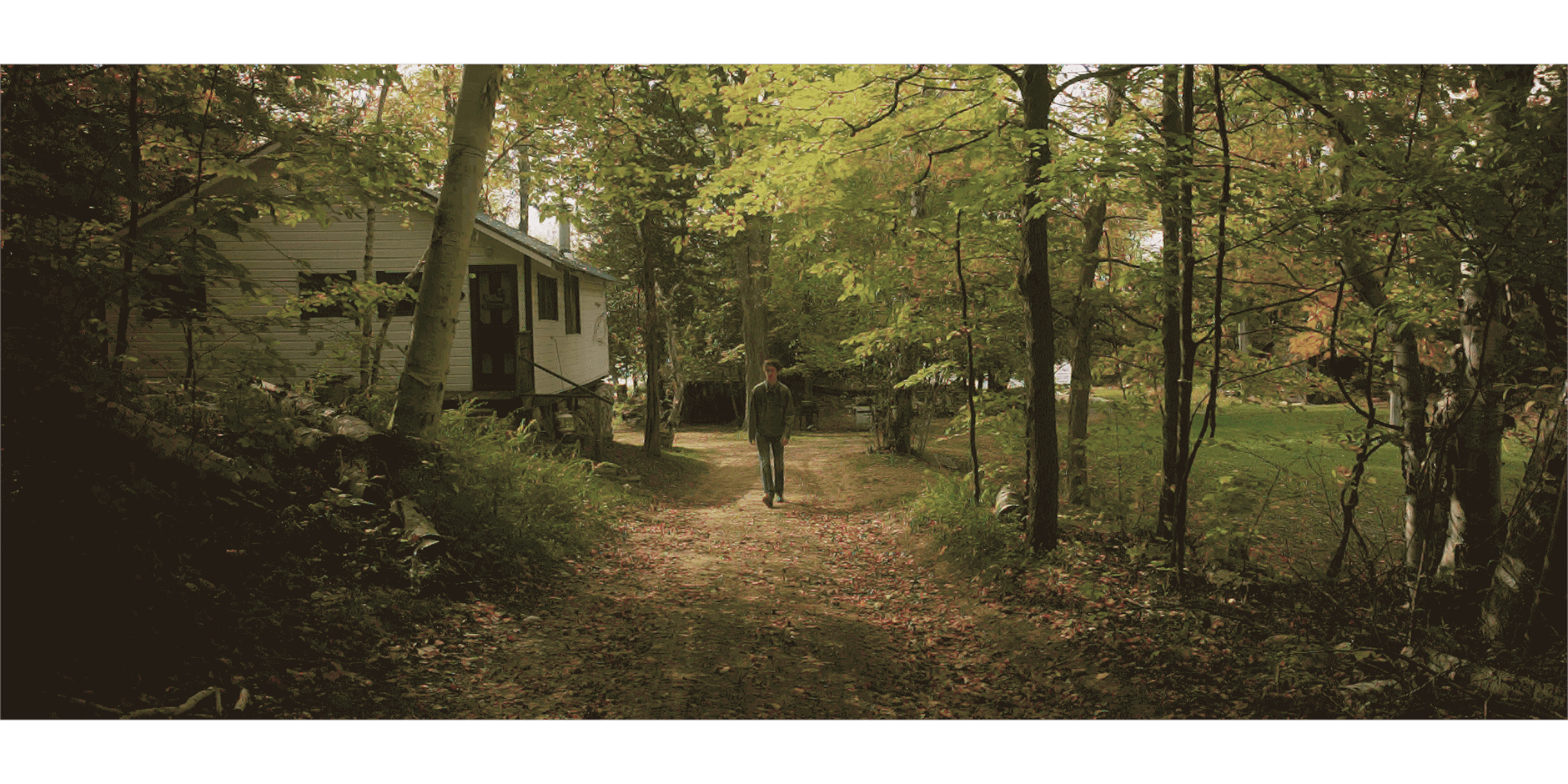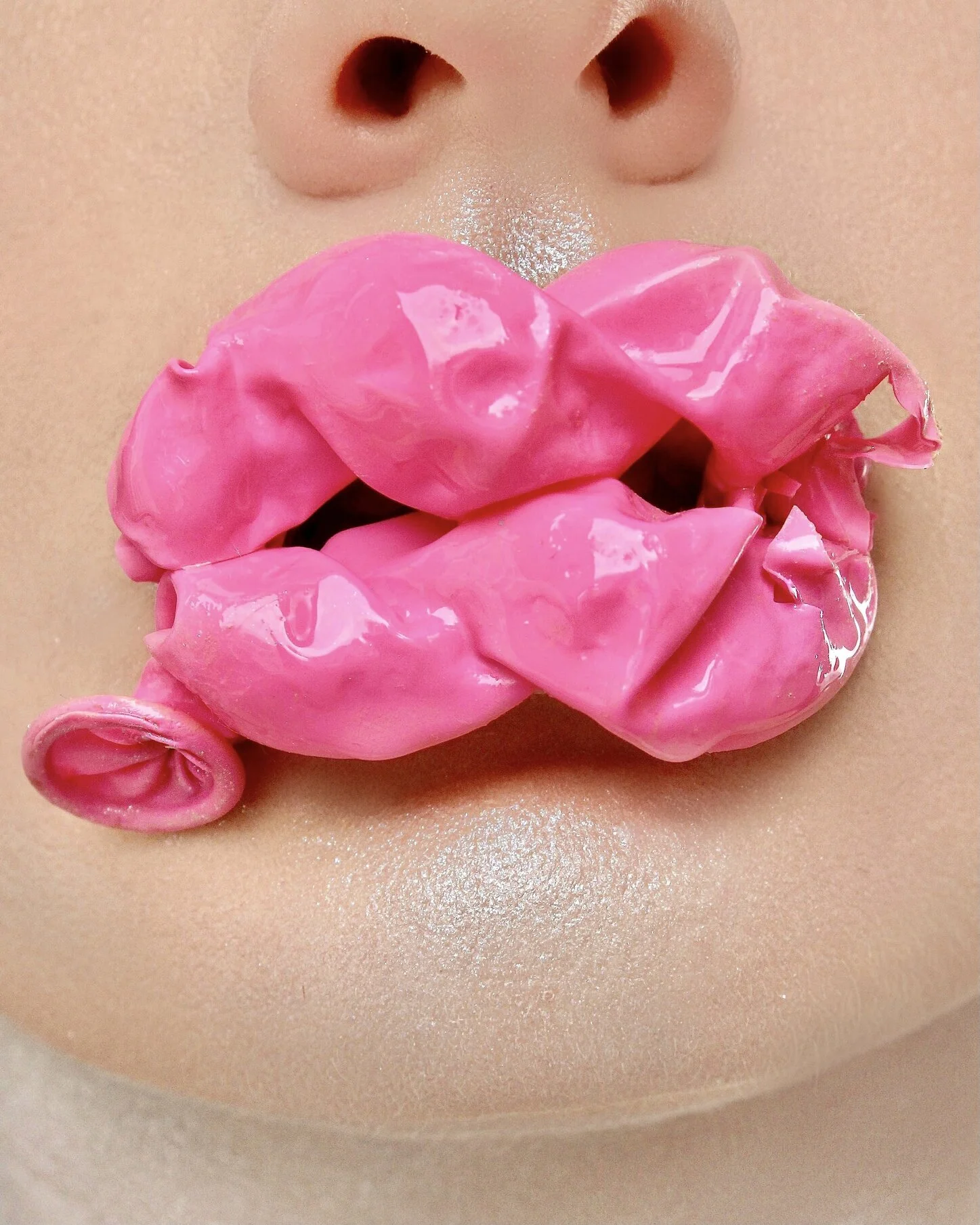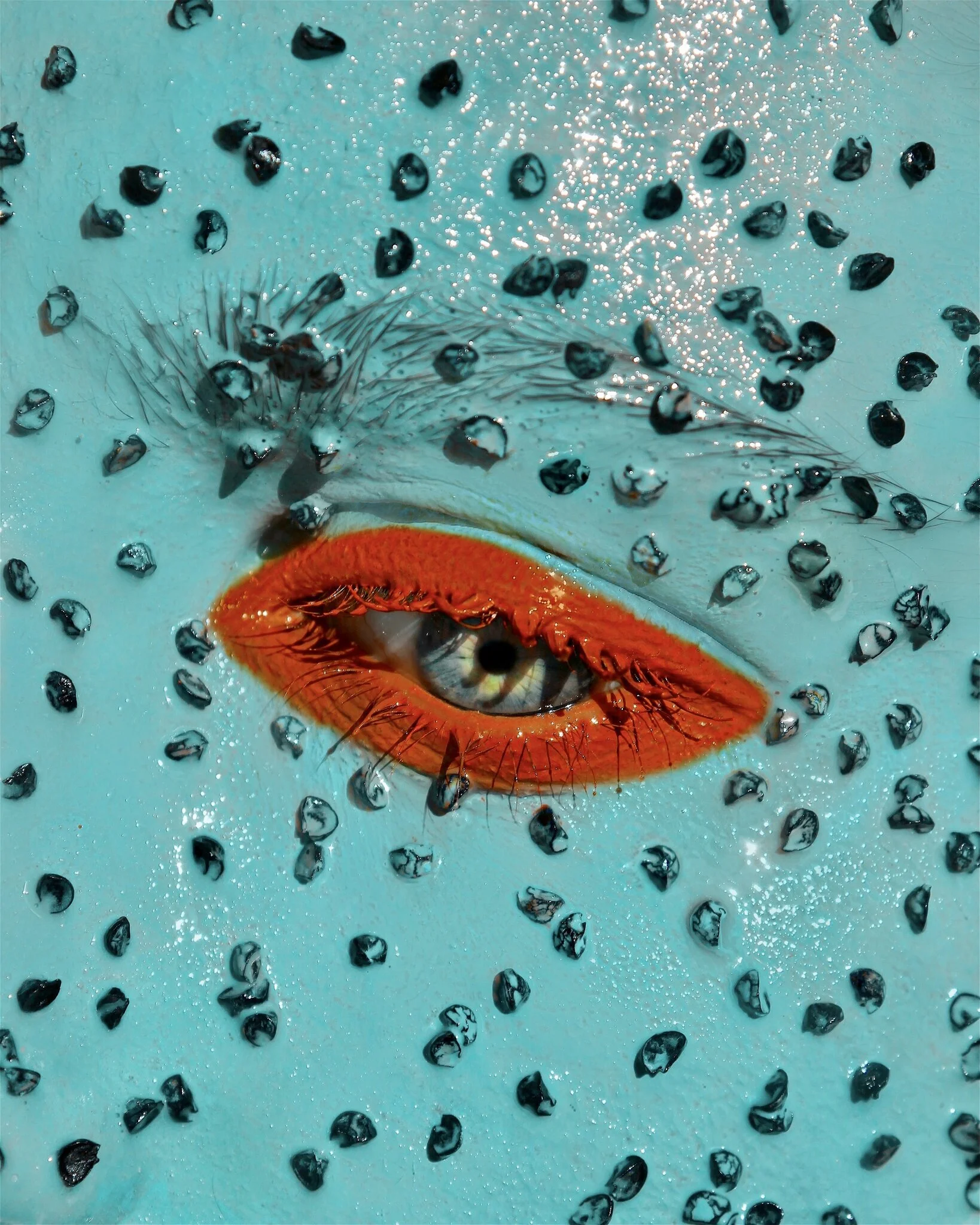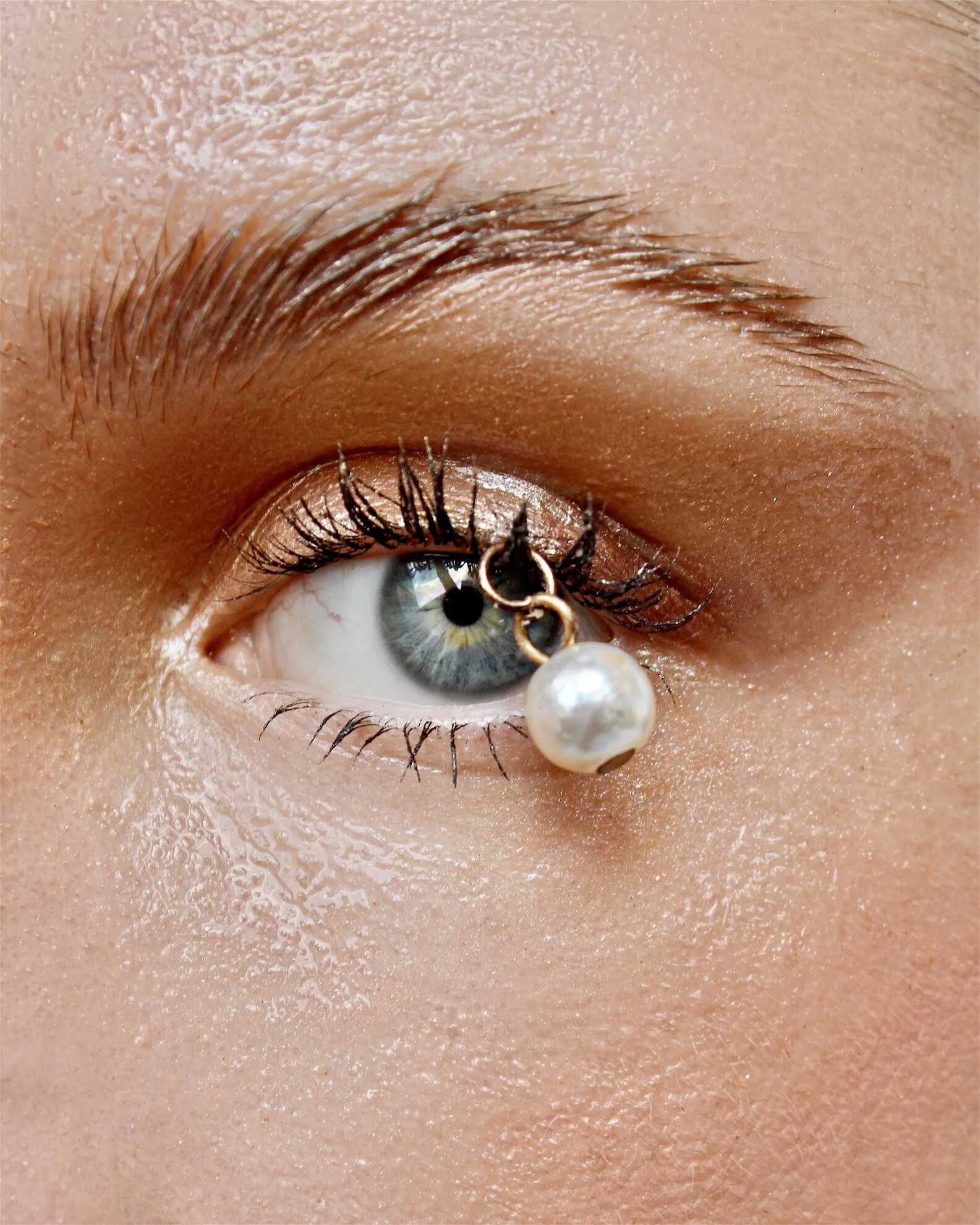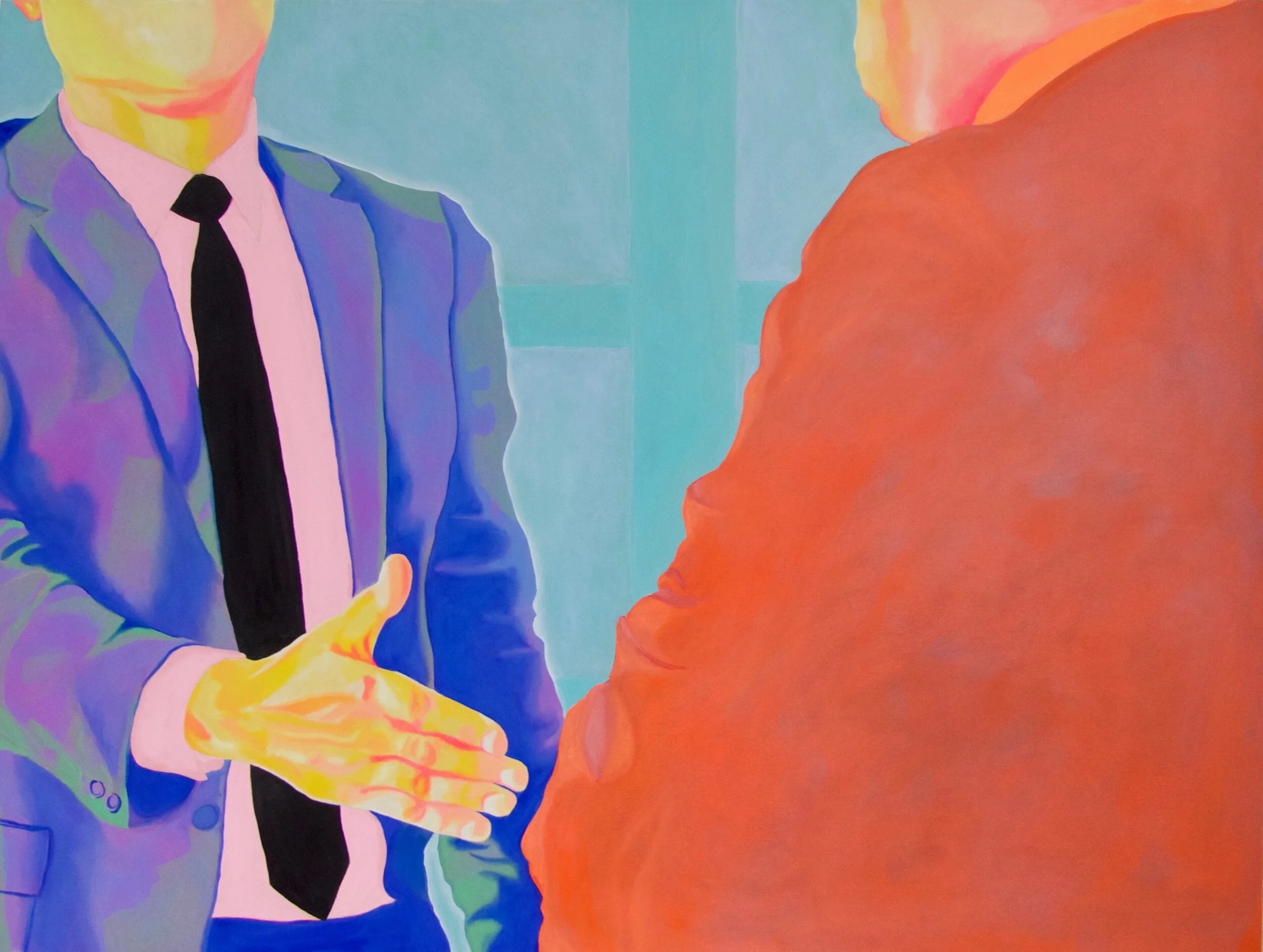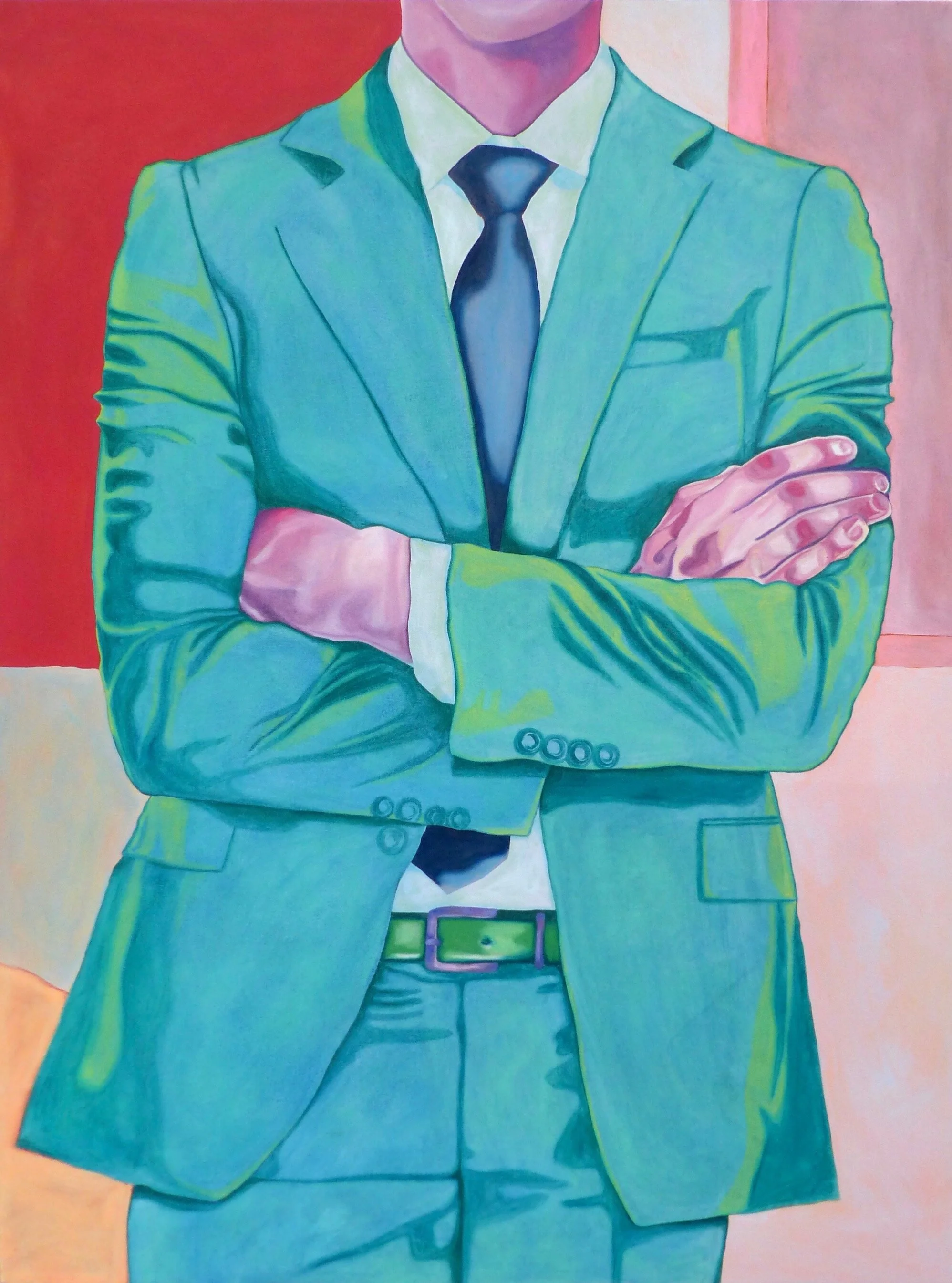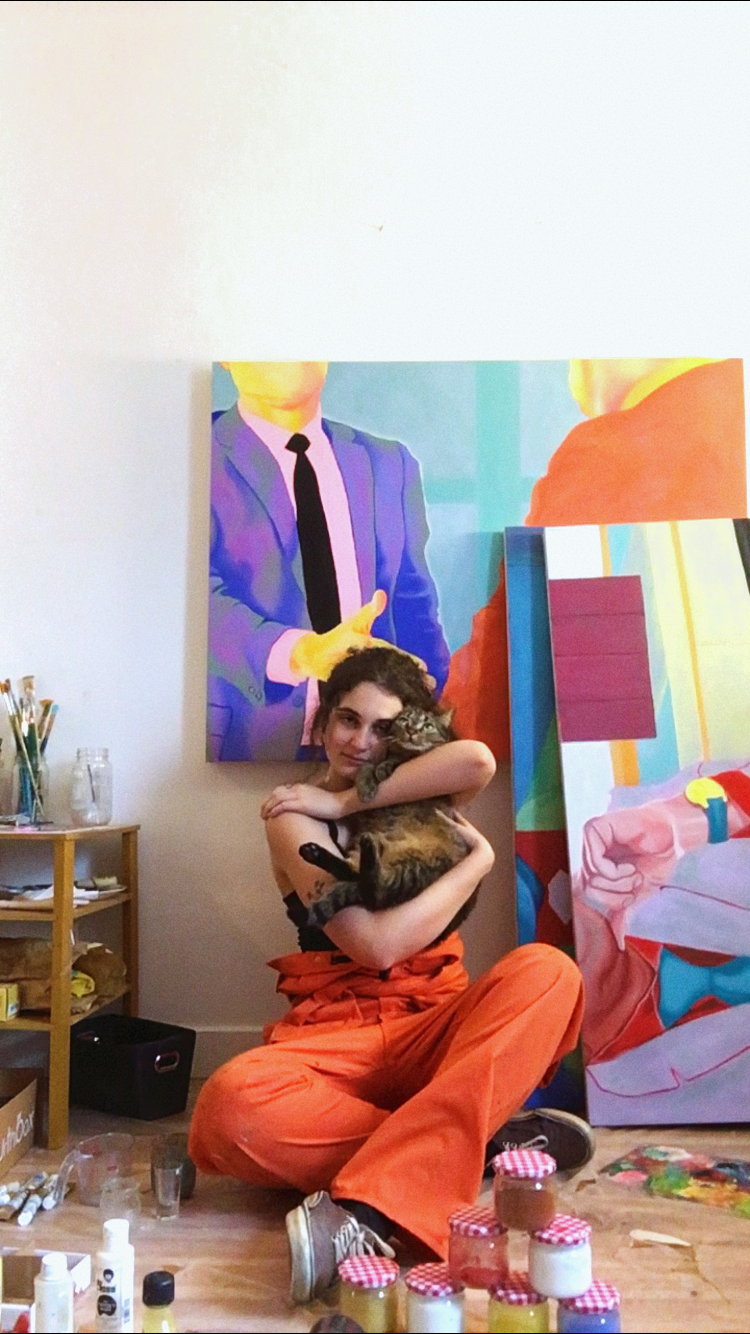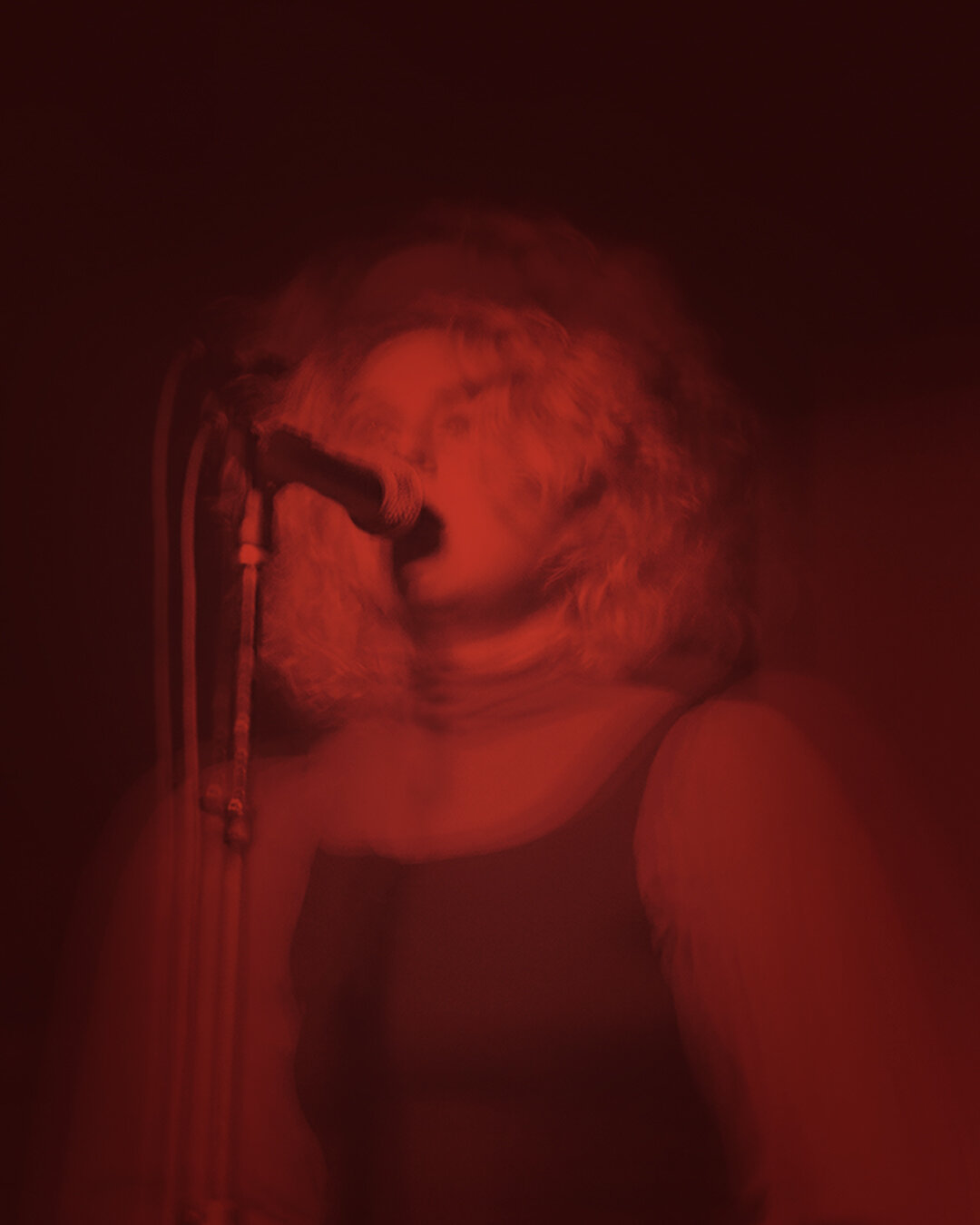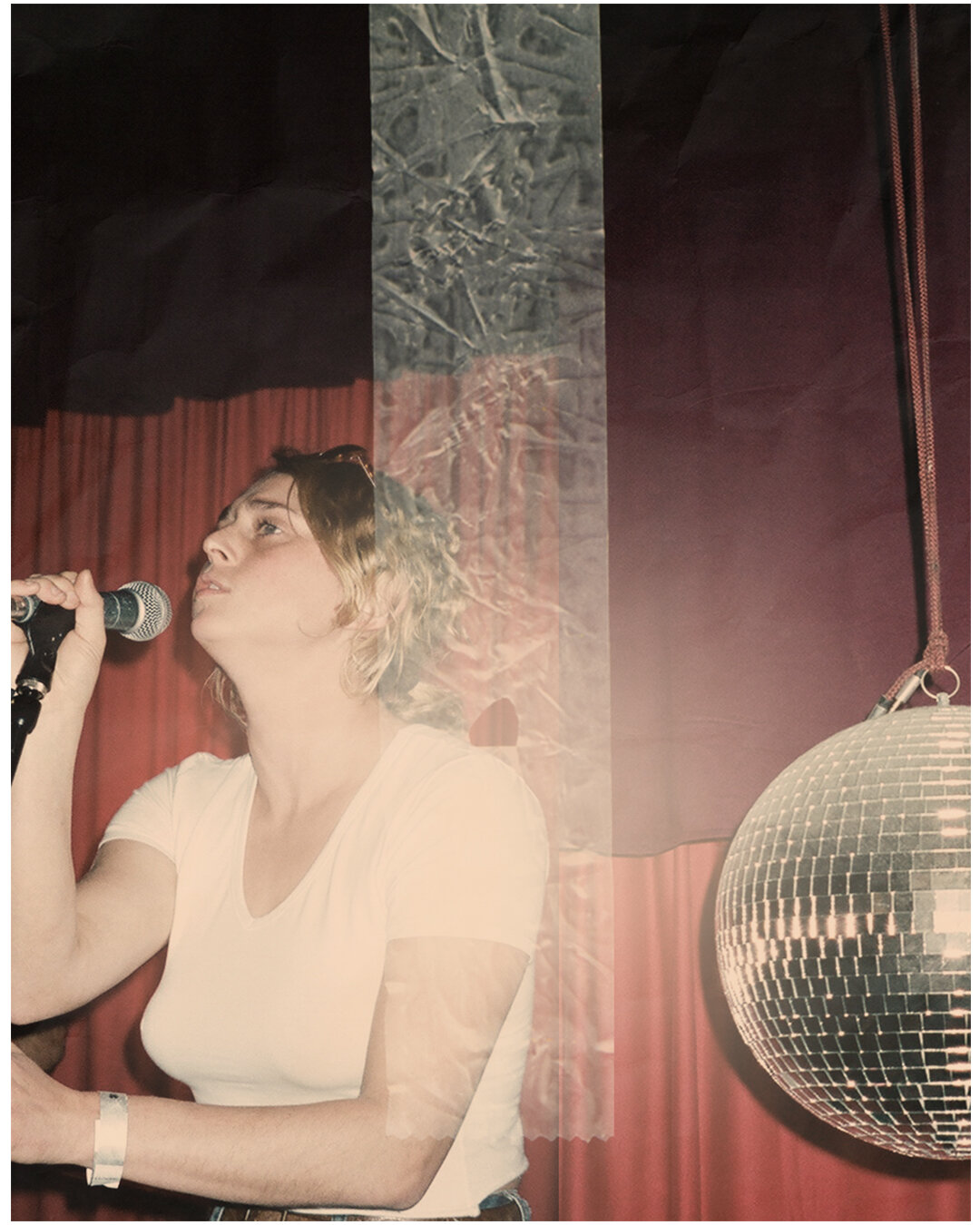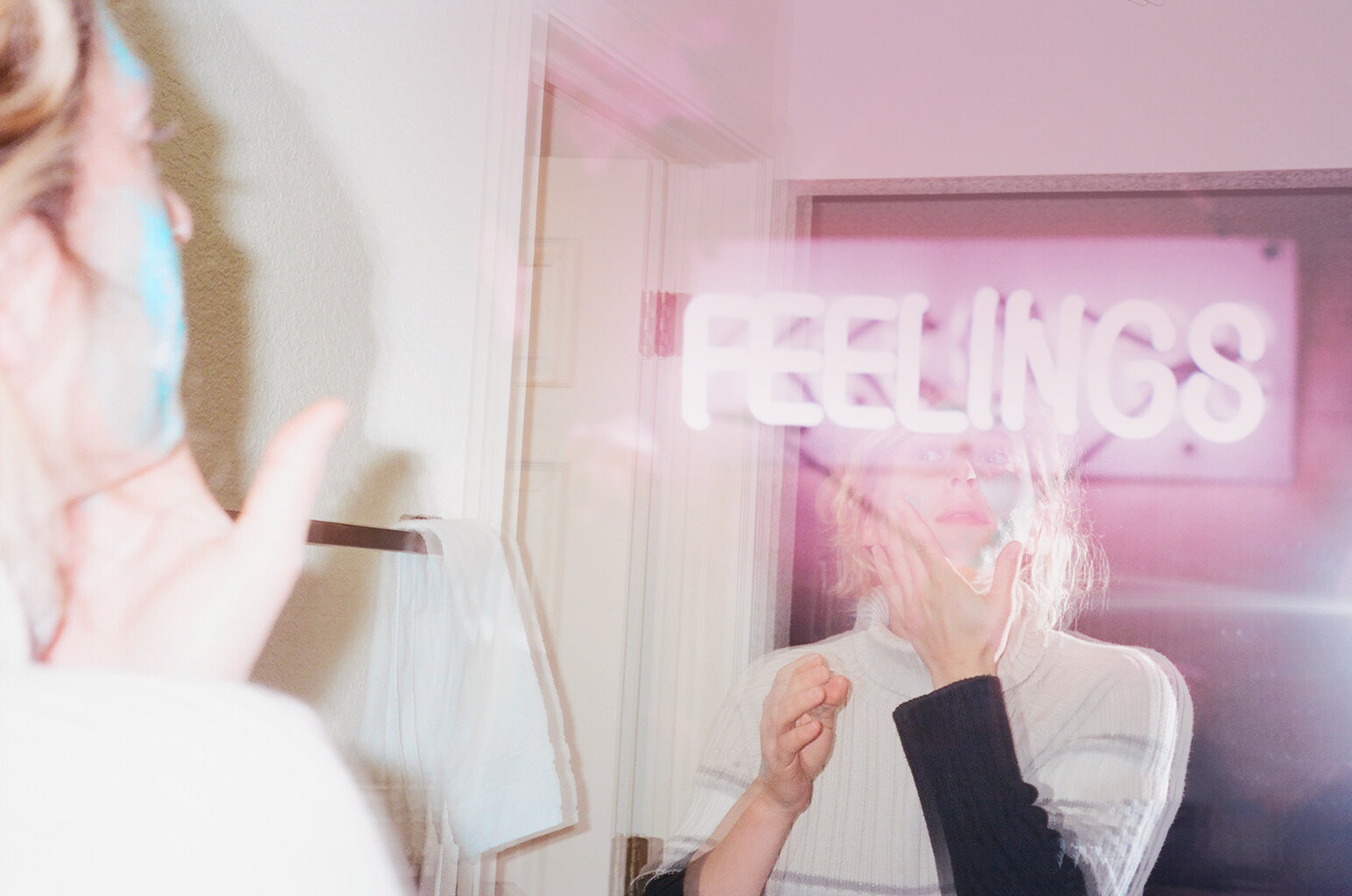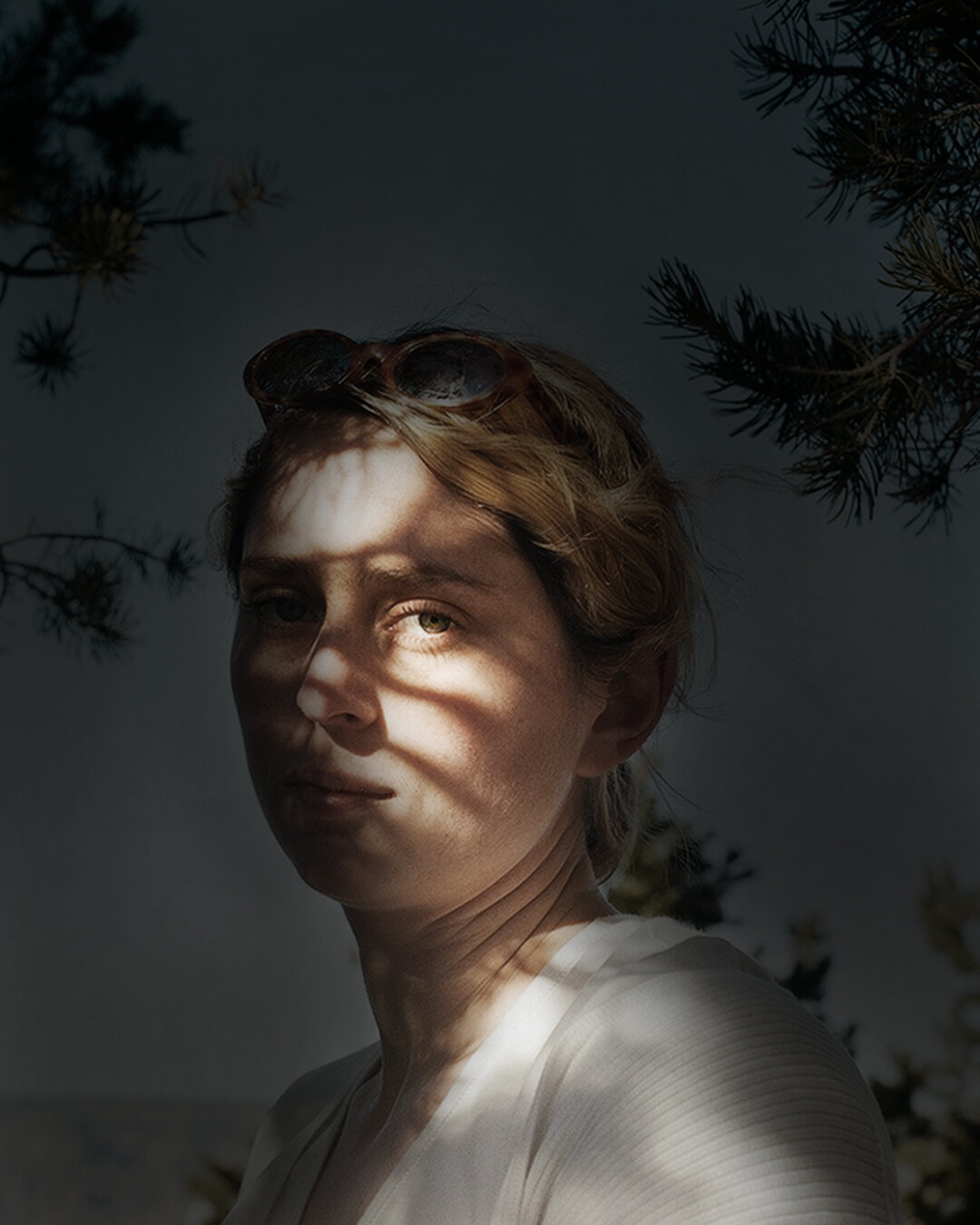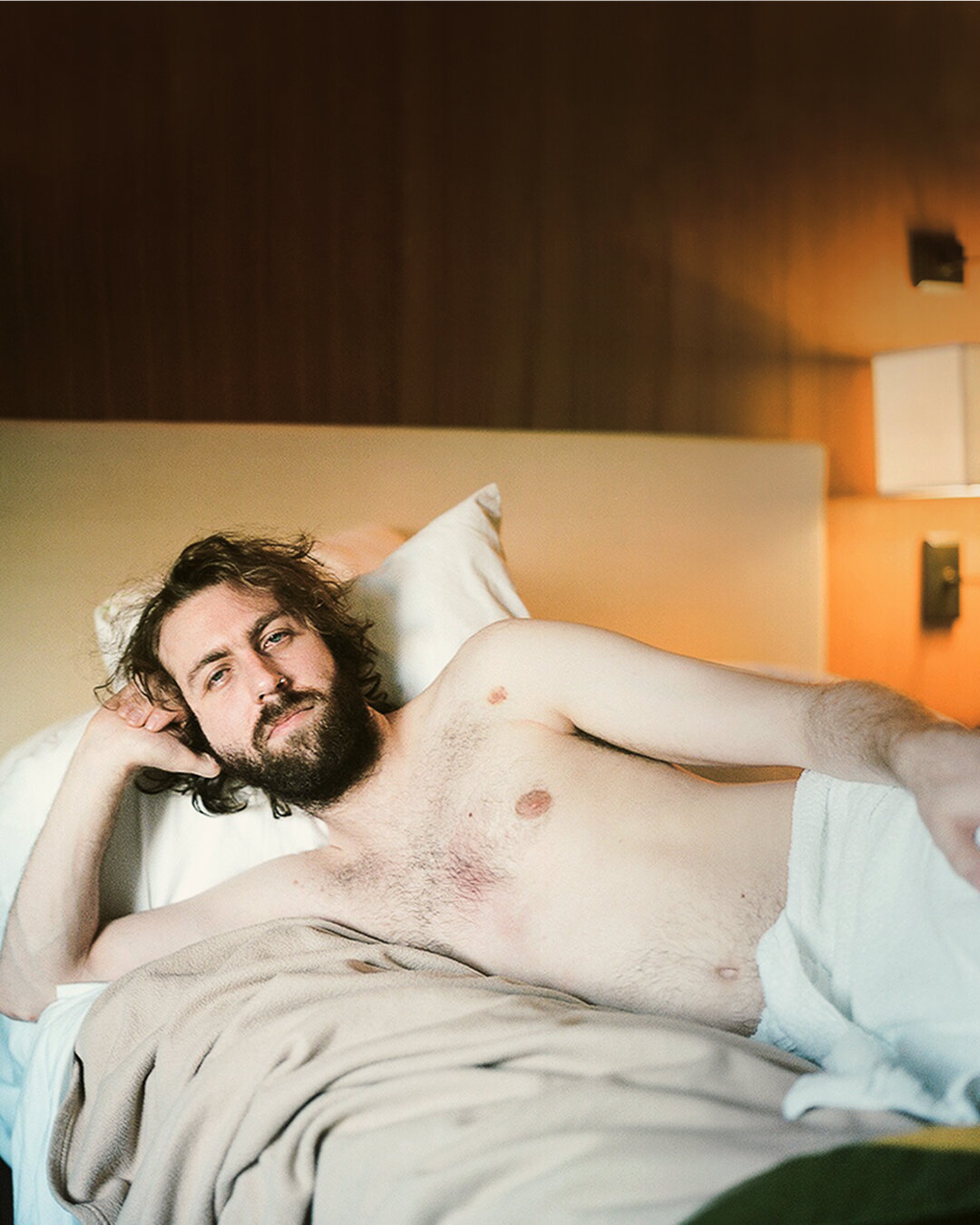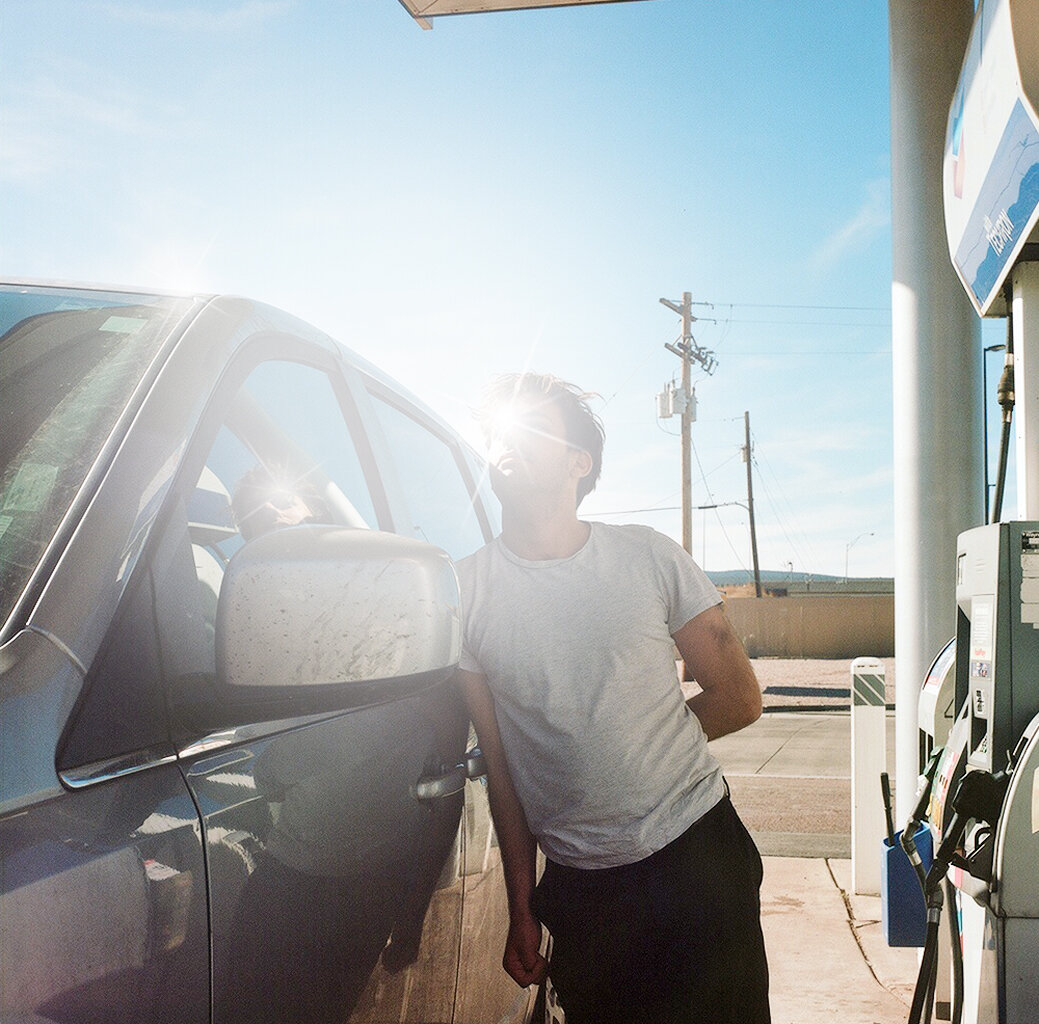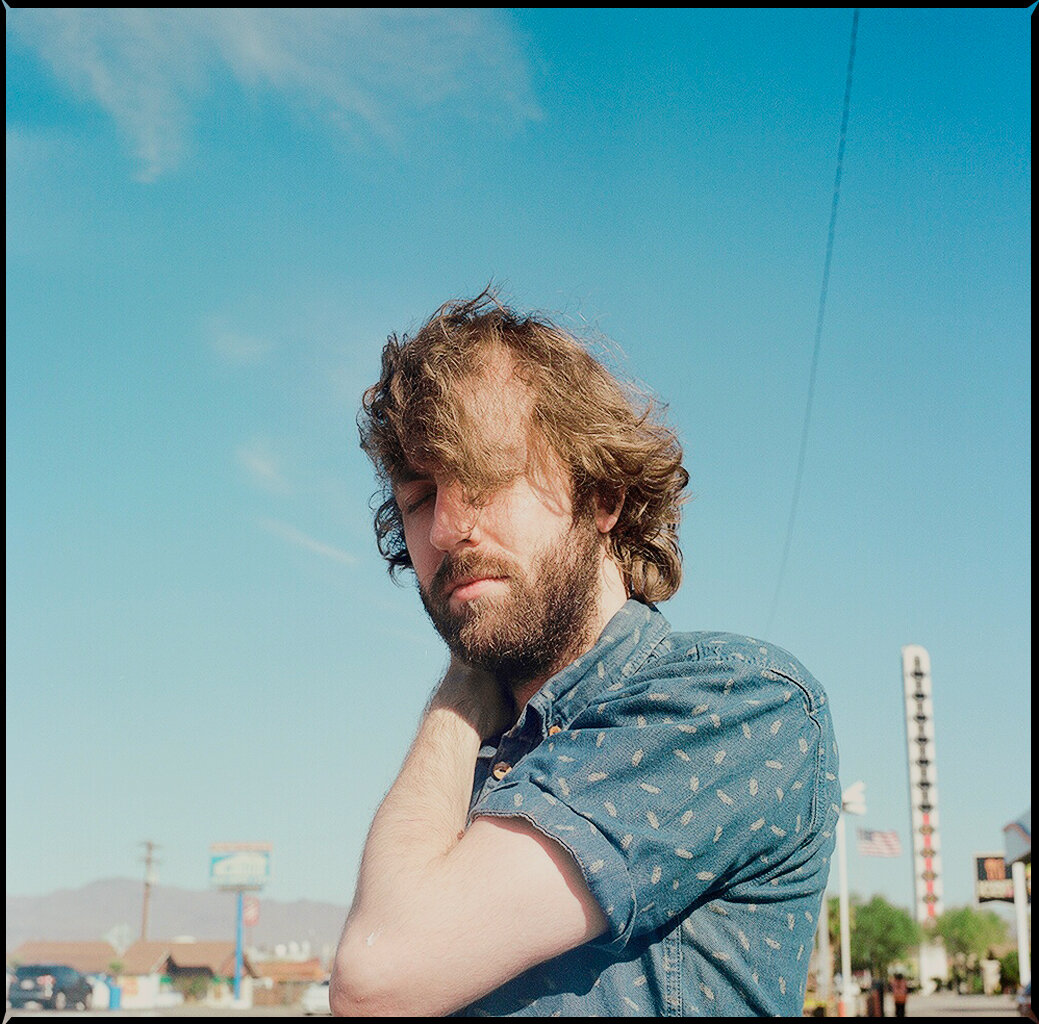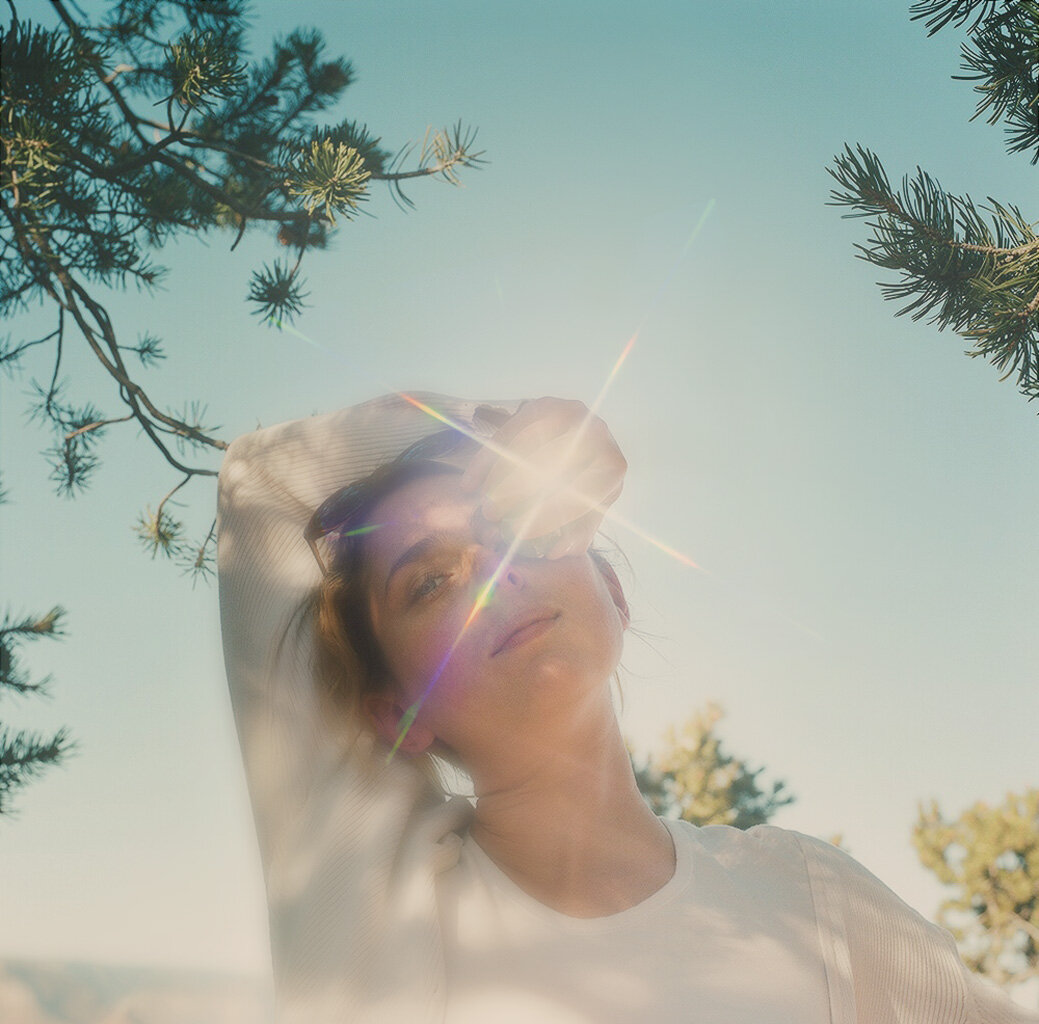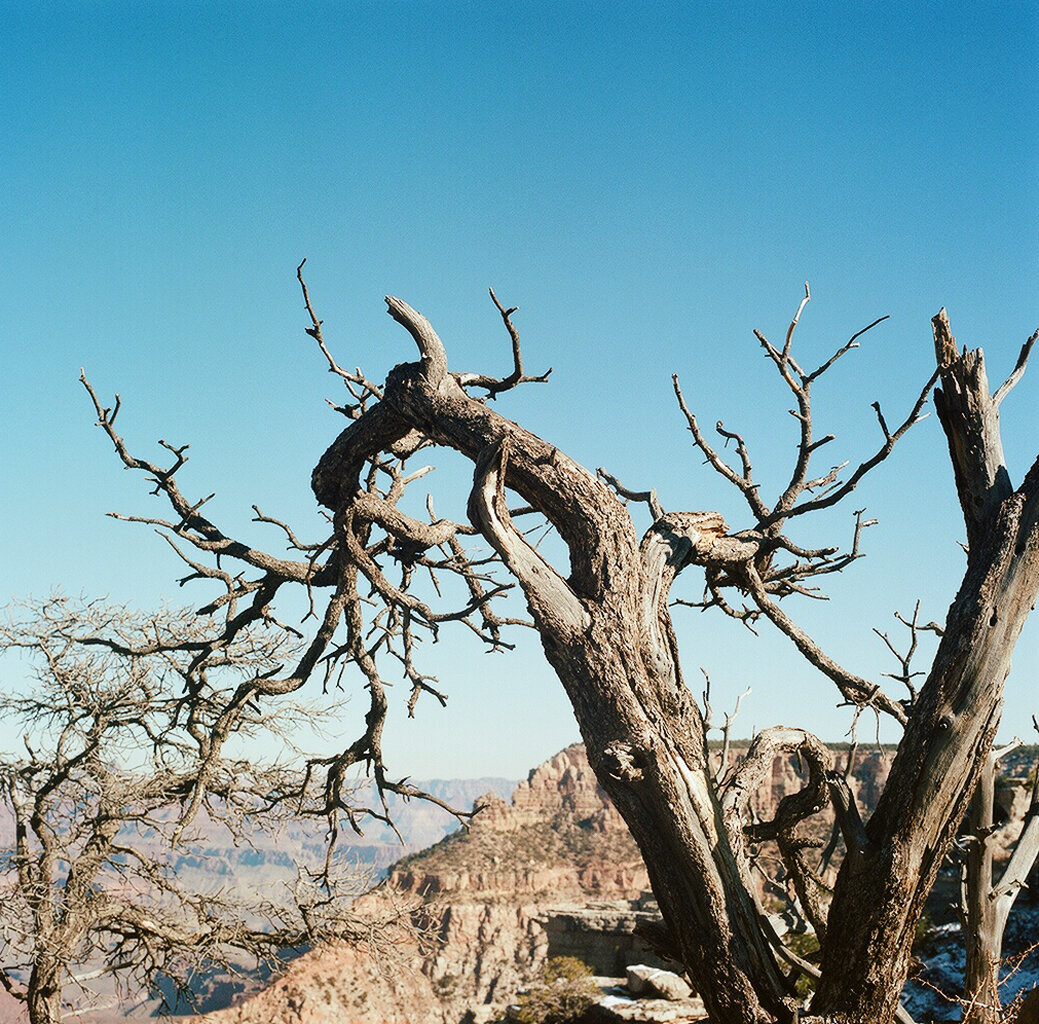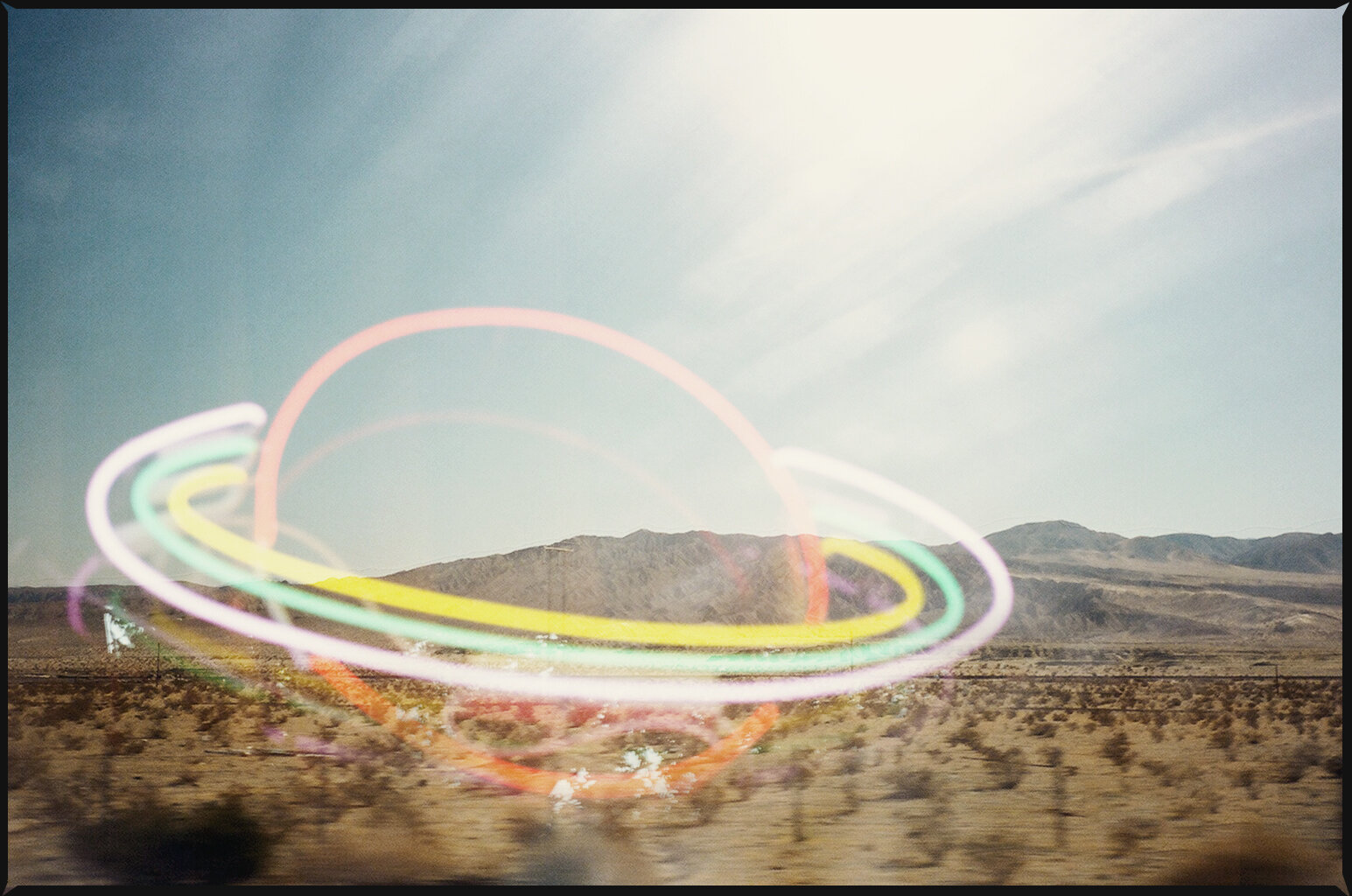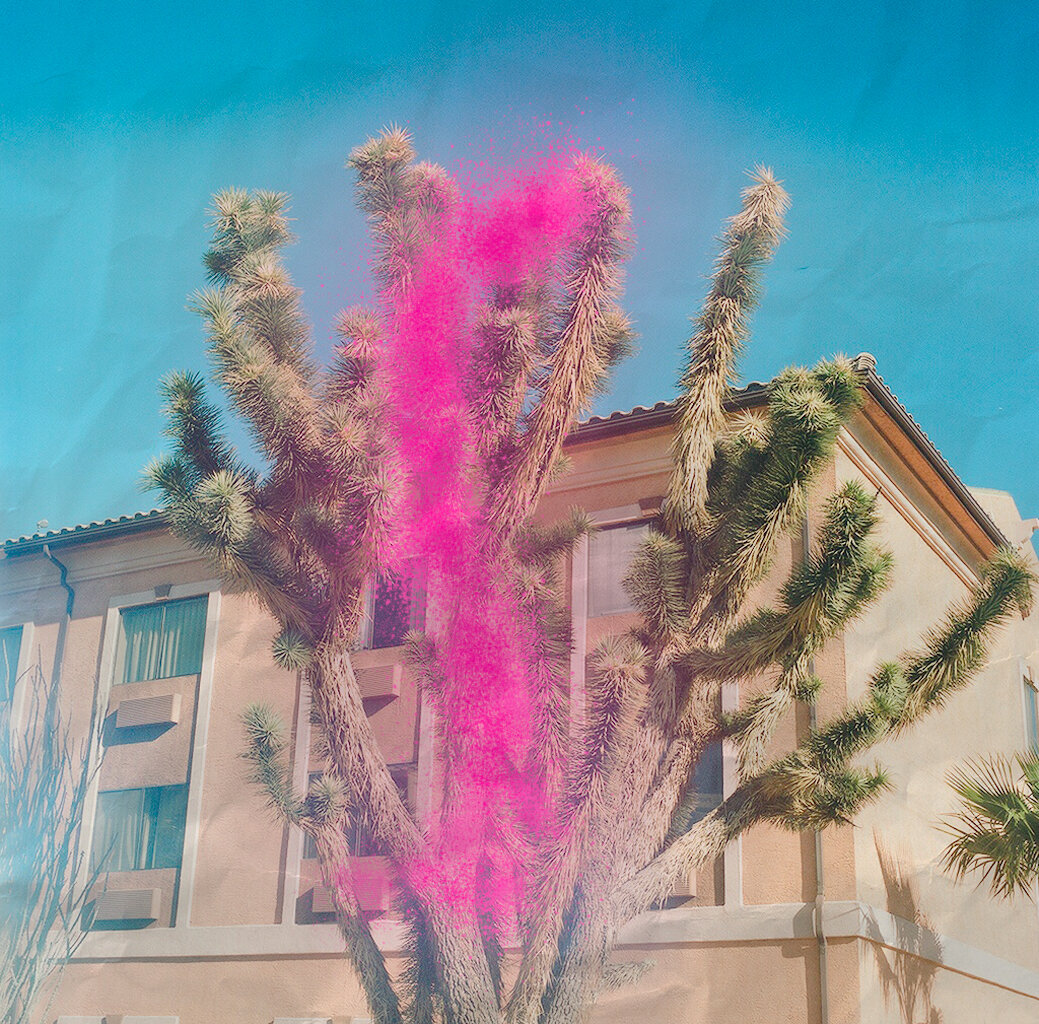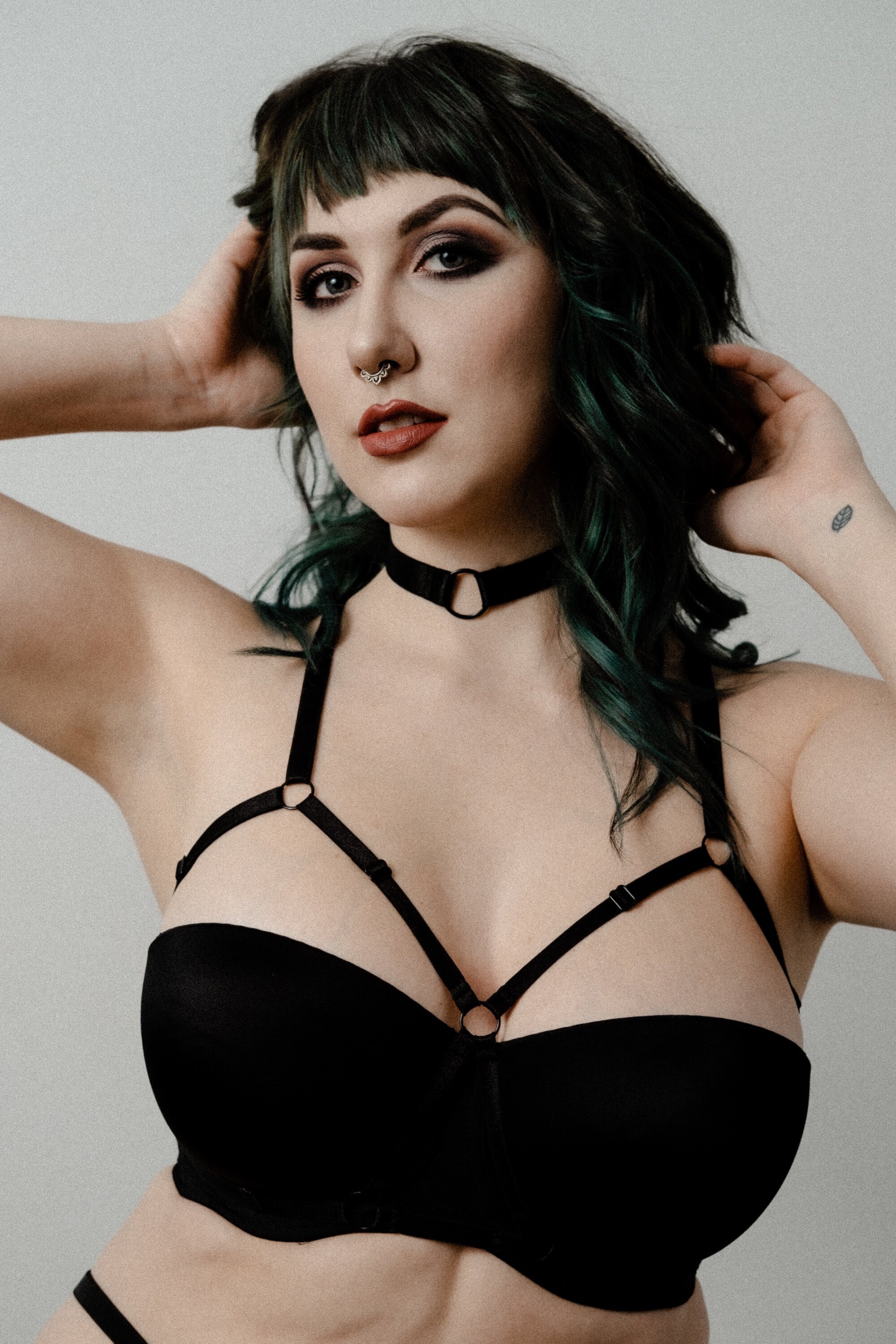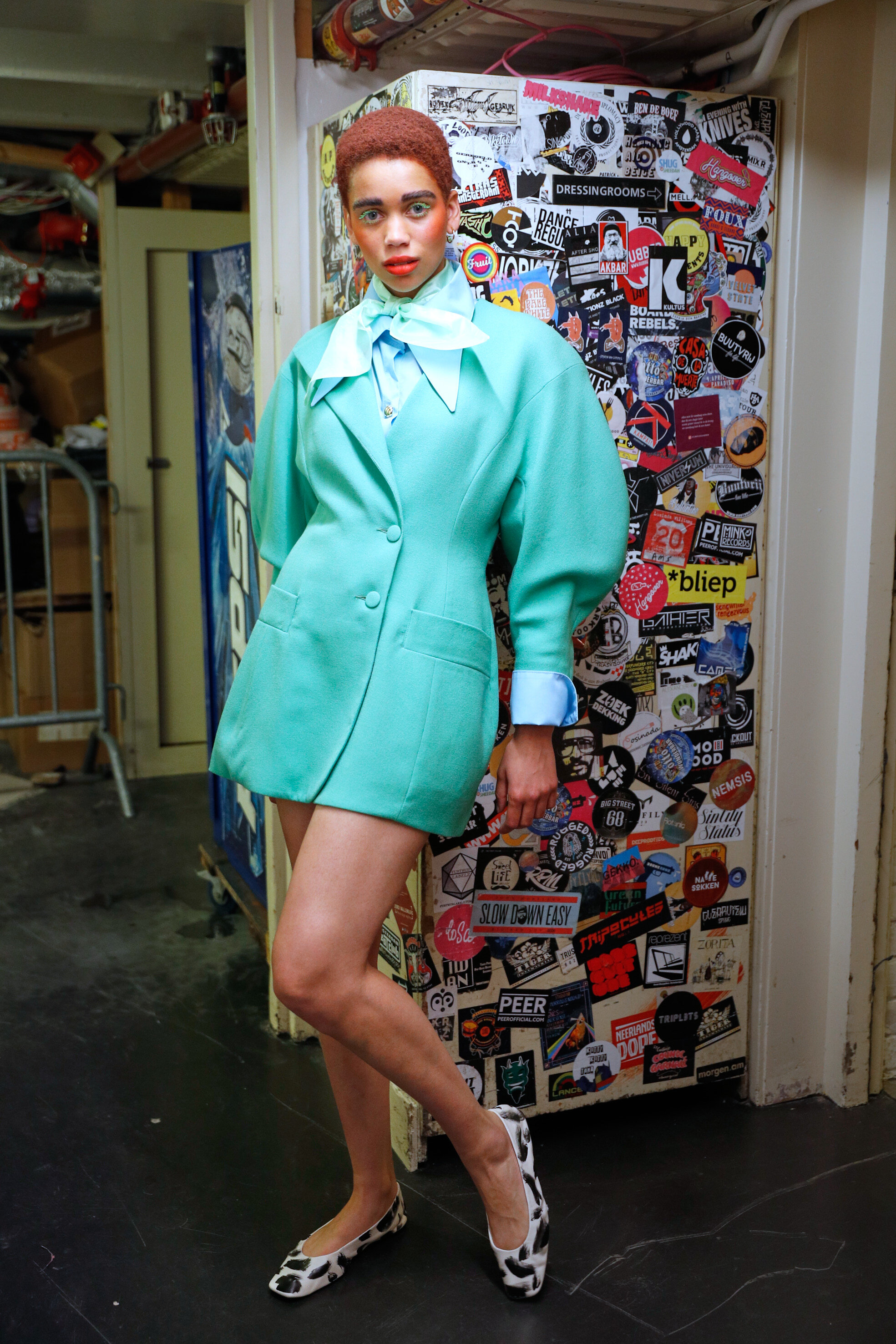Artist Spotlight: Nico / babysbabybaby
Nico in their studio by Kate Addison
In a small studio on the border of Montreal’s Plateau and Mile End neighbourhoods, self-described ‘DIY tattoo artist’ Nico (they/he) - known on Instagram as babysbabybaby - invites me to take a seat on a low leather couch and flip through a sizable collection of sketchbooks.
Nico’s art immediately demands your attention. His sketchbooks which hold all of his flash are teeming with colour. As you flip the pages, you’re greeted by bright pinks, greens and oranges and freehanded carnivalesque doodles which oscillate between charming and delightfully unsettling. With over ten thousand followers on Instagram, it is clear that Nico’s unique style resonates with a large audience.
I spoke with the artist in their studio about how they began tattooing and what this art form has come to mean for them in both their creative development and in their experience with a larger community of creatives.
Nico in their studio by Kate Addison
Kate Addison for Also Cool: How did you get into tattooing?
Nico Wilting: It was just kind of a roundabout way. It wasn’t really something I saw myself doing for a long time. I started stick and poking in 2016, but very, non-seriously. It was a friend who first asked me to give them a tattoo, and then I kind of got interested in it.
In 2018 I was sinking into a really dark depression. I was in an unhealthy relationship and I [was wondering] what am I doing here? I was working full time and wasn't able to do any art, and I was [asking myself] what am I doing with my life? I had watched a lot of other artists teach themselves how to tattoo. I just curious if this was a way for me to survive capitalism as an artist, [because] after going through art school, I figured out that I didn't want to be a gallery artist. I ended up contacting a couple of tattoo (?) artists and everyone was super helpful. [Some artists] even invited me over to their houses and gave me a list of everything I needed to buy, and gave me pointers for starting out. The summer of 2018 was when I finally bought my machine and I started tattooing seriously.
Also Cool: You went to art school? Tell me about the art you were making before you began tattooing.
Nico: Originally, I went to art school thinking that I was gonna become a graphic designer. [In my first year] I was loving my fine art classes, so I switched to Drawing in my second year. [Art school] is very much about conceptual art. You have to have an academic form of defending your work. I think I did gain a lot from getting a BFA, but I just don't really feel like that part of the art world is for me.
I really like how accessible tattoos are to people. Anybody can get a tattoo. One of my friends said to me that she sees tattooing as a way of curating her body and I [agree]. Tattooing lives in a lot of different facets but part of it is you're able to change and get autonomy of your body. Another [part] of it is that you're collecting art. It's one of the ways that I look at it when I get tattooed, that I’m collecting art on my body.
AC: Can you walk me through your process of creating a tattoo, from creating your flash to the finished piece?
NW: I really like challenging myself to draw as much as possible. I'll have an idea and I'll just keep trying to push it. I'll see how well I can execute the drawing or how weird I can make it. If I start messing up, I usually try and make it work. Like, here *Nico gestures to a drawing in one of his sketchbooks* I probably fucked up a little bit and I just coloured it in and made it darker.
I really like holding on to imperfections and the moments where I will mess something up. Trying to reclaim bad drawings is kind of part of my process, and then usually when I trace it to become a tattoo, I like to try and make the lines smoother.
AC: What do you think makes your work unique to you? What does your art represent for yourself?
NW: To me, it feels like freedom and just like a happy place and a safe place. I think that kind of goes hand in hand with getting a tattoo. I see tattoos as a form of self-protection or armour. When you get a tattoo you can suddenly feel cooler and more confident. [Tattoos] bring you to a safer place like within your own body, and I think that's what my work represents. It's like that safe place when you're watching cartoons as a kid where nothing can really hurt you and you know at the end of the episode, it's gonna be okay.
AC: You’ve been working as a tattoo artist for a few years now. What have you found to be your favourite part of this job?
NW: I really like the personal connection. It's really cool to meet a lot of different people. There's also just how transformative tattoos can be for people. After you tattoo someone, seeing them look at their body with so much love and admiration is really powerful. My art is no longer mine once it's on someone else's body, it's theirs. It's part of their body and it's another reason they love themselves, which is a really intense, and magical thing.
For me, it feels like part of the job to make people feel comfortable and safe so that they have a good experience as they get tattooed, because you do carry that stuff with you on your body forever. If you have a traumatic experience getting a tattoo every time you look at the tattoo, you're gonna think about that experience. I try to do the exact opposite of that and [create] the cushiest, soft, and safe experience possible.
AC: Have you found any challenging aspects of this job?
NW: It's constantly challenging, especially being self-taught. Sometimes you just have questions that you don't know who to ask or how to get answers to. I do have a lot of help from my community because other DIY artists all kind of figure it out on their own. We ask each other a lot of questions, and we try to confirm each other's experiences and help each other out a lot, which is really wonderful to have.
AC: Can you tell me a bit more about the DIY tattoo community in Montreal? How would you define DIY tattooing?
NW: [DIY] defines this style [where] you're not doing any kind of traditional style of tattooing, you’re doing your own art instead. A DIY tattoo artist is someone who doesn't work in a shop, didn't do an apprenticeship, and doesn't do what would be considered traditional tattoo styles . [The community] extends outside of Montreal, and as much as the tattoo community is insular, it's also free and massive. There's people in the States, in Europe, Australia, and then there's this [DIY] community that feels somewhat inaccessible in Korea. The Montreal DIY community is for the most part really wonderful and really supportive of each other. Most people want to connect and be friends. Trading is another aspect of friendship in the community.
I've traded for so many things. Obviously, I can't live off trades, because I need to pay my rent, but if my landlord wanted tattoos, I would do it. I've traded with jewelry artists, I've traded to get my hair done. Once I posted that I was looking for a couple of things and would trade tattoos for them and I got a TV from a former client. It kind of feels like a way of skill-sharing and connecting to your creative community.
AC: Is there anything else you wanted to add before we wrap up?
NW: I would just like to draw the spotlight away from myself and say that I think it's important just to look at Indigenous tattooers in this country. I think it's important to look at Indigenous tattooing and understand where it comes from. If you're getting tattooed, just understanding the history, [because] basically since the evolution of the Homosapien, we've been putting ink in our skin in some form or another. The last thing I would add is just support queer BIPOC artists as much as you can.
Other artists whose work Nico recommends are @soft.wraith @0p4qu3 @pattern___recognition @dirtyl00ks @ayasappleworld @snuggelug @0000_95m @kuntrydirt @mirionmalletatoue @astoria.tattoo @phylotattoos @dranem.bag @fuzzywuzzums @charbataille @ericacyrtattoos
// You can find Nicos work on their Instagram @babysbabybaby//
Kate Addison








